Just a few years ago, Mercedes floated plans to create a new hybrid hypercar, one that would dominate in the burgeoning world of electrified ultimate-performance machines. The German automaker confirmed those plans a year ago, and now, with AMG celebrating its 50th anniversary, the uber-car has made its big debut at the 2017 Frankfurt Motor Show. Mercedes says the new mega-machine brings “the very latest and efficient, fully-fledged Formula 1 hybrid technology to the road.” That includes a 1.6-liter V-6 that’s shockingly similar to the powerplant in Merc’s F1 car, spinning to 11,000 rpm and producing upwards of four figures. Drivers sit in a carbon fiber tub, stick harder with active aerodynamics, and turn better with push rod suspension. All impressive stuff, to be sure, but is it enough to topple the current top-dog performance machines?
Regardless, the Project One is already a massive hit, garnering huge attention for Mercedes-AMG and nearly selling out even before its big sheet pull. Drawing from Mercedes’ championship-winning experience at the top of the motorsport heap and developed with input from various AMG Formula 1 team members, the Project One is the very definition of a halo car, promising to set the technological drum beat by which all future AMG cars will dance. Read on for the juicy details and specs.
Updated 09/18/17: The Mercedes-AMG Project One has arrived, and we’ve got all the info you need right here. Also, check the "Pictures" tab for some images taken in Frankfurt.
Continue reading to learn more about the Mercedes-AMG Project One.
2020 Mercedes-AMG Project One



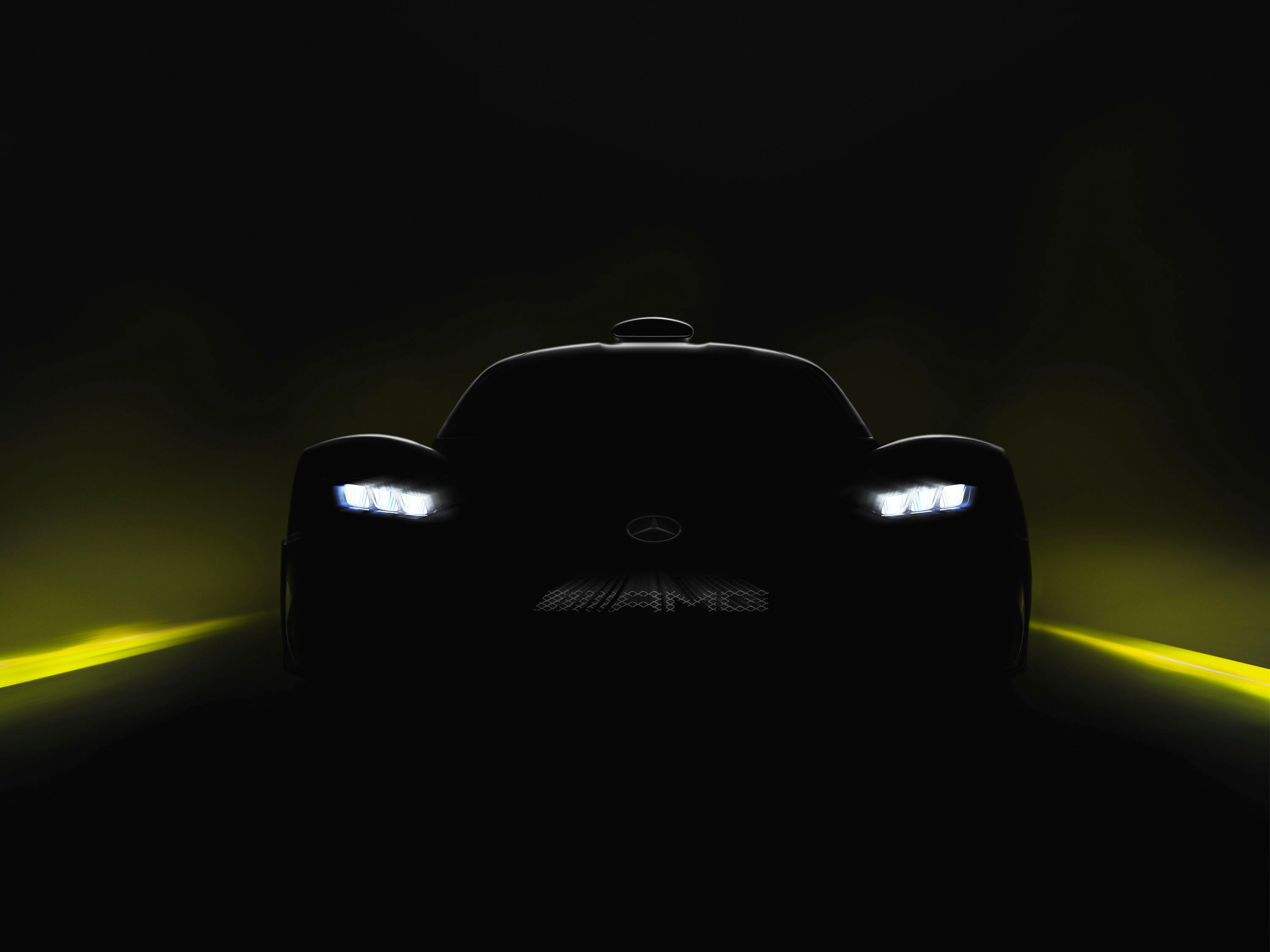



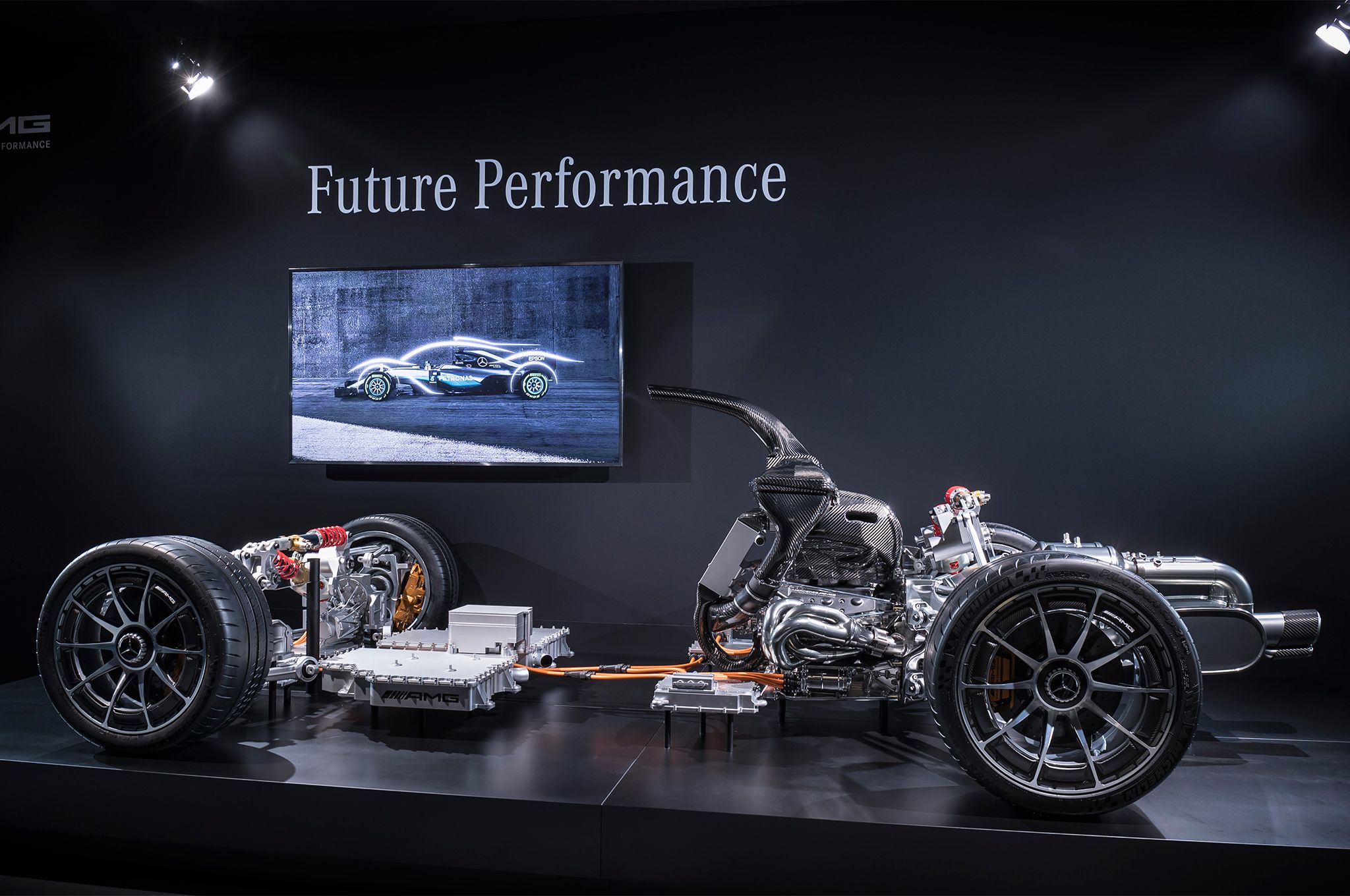
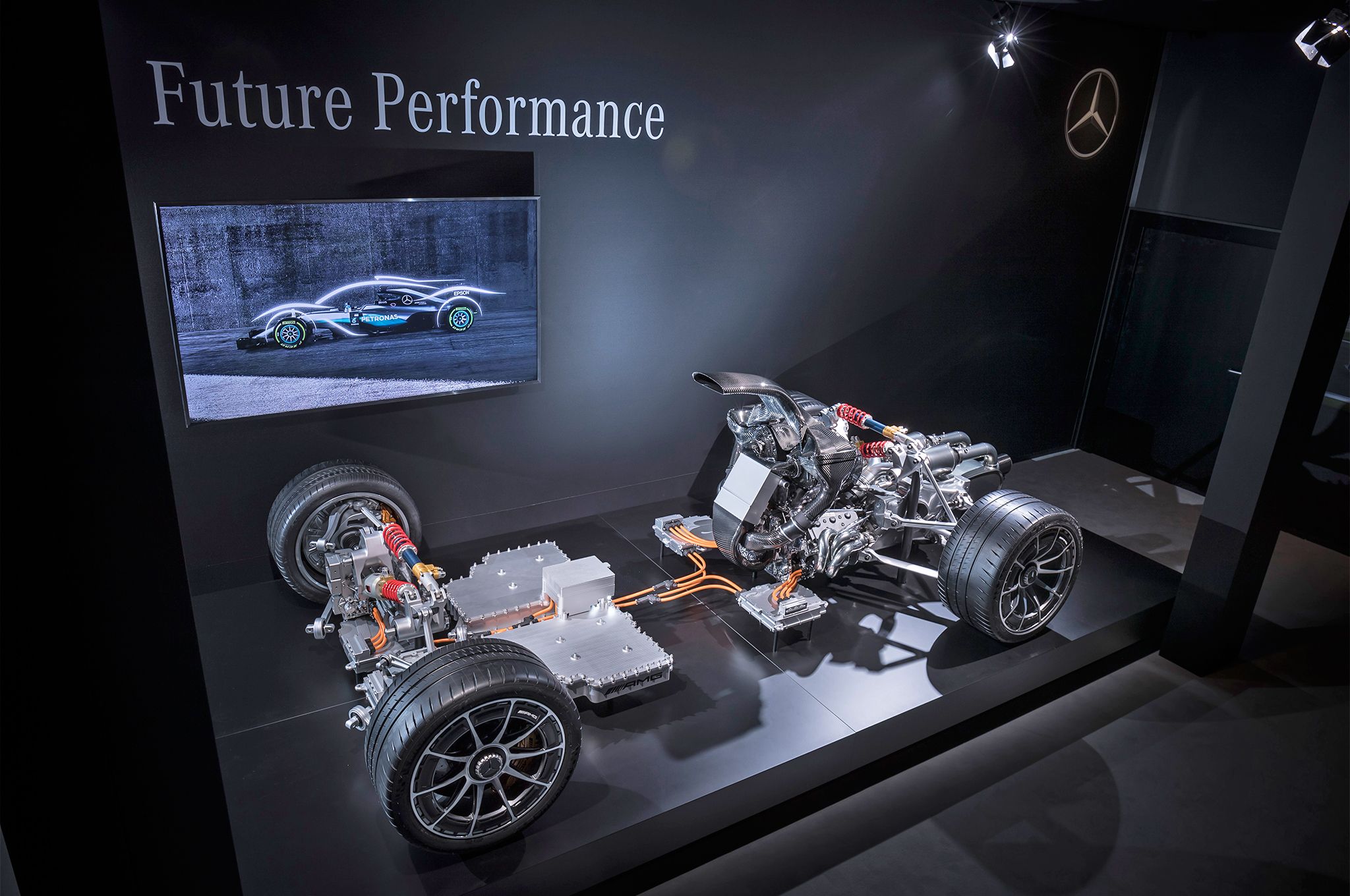
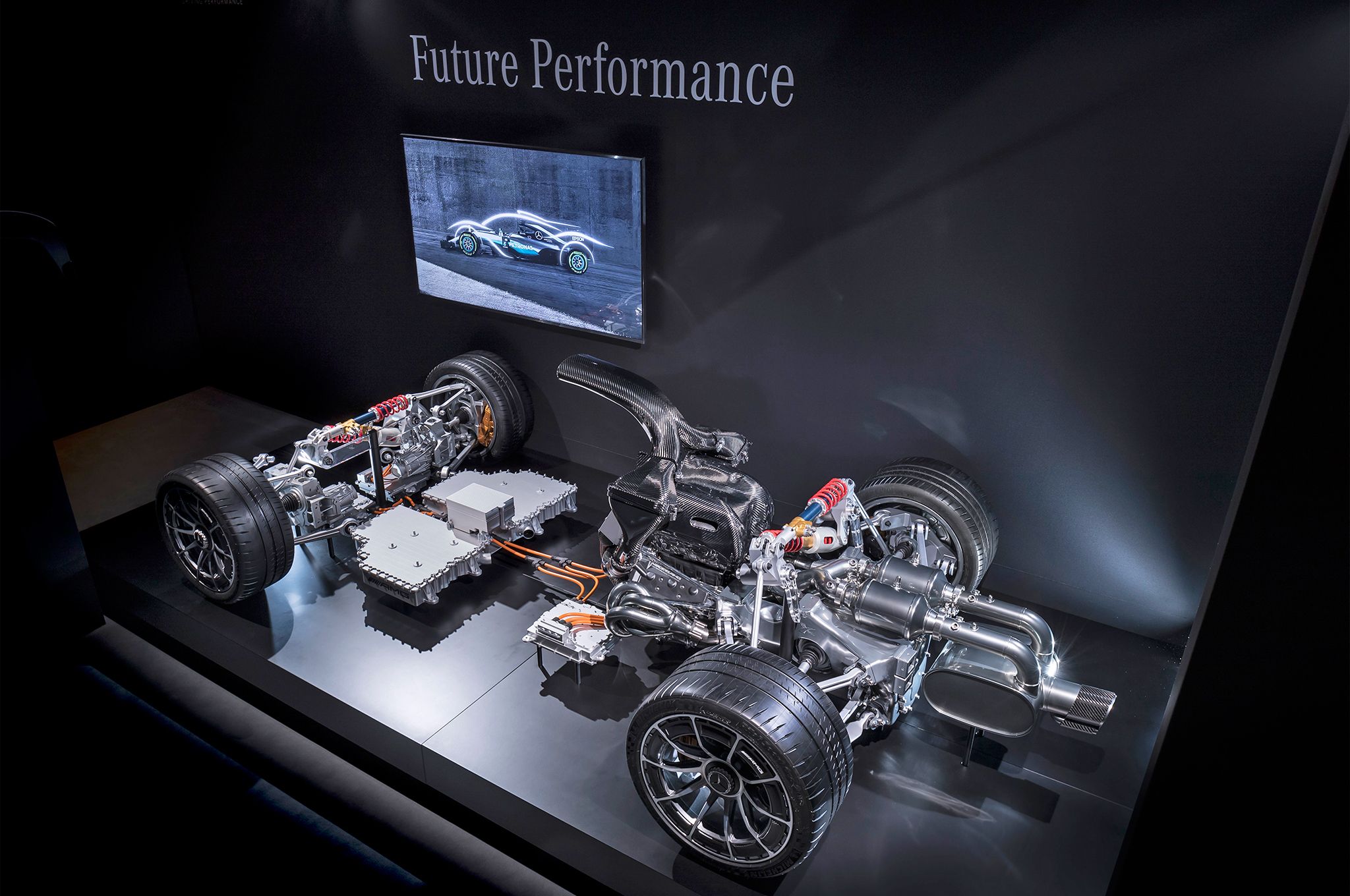
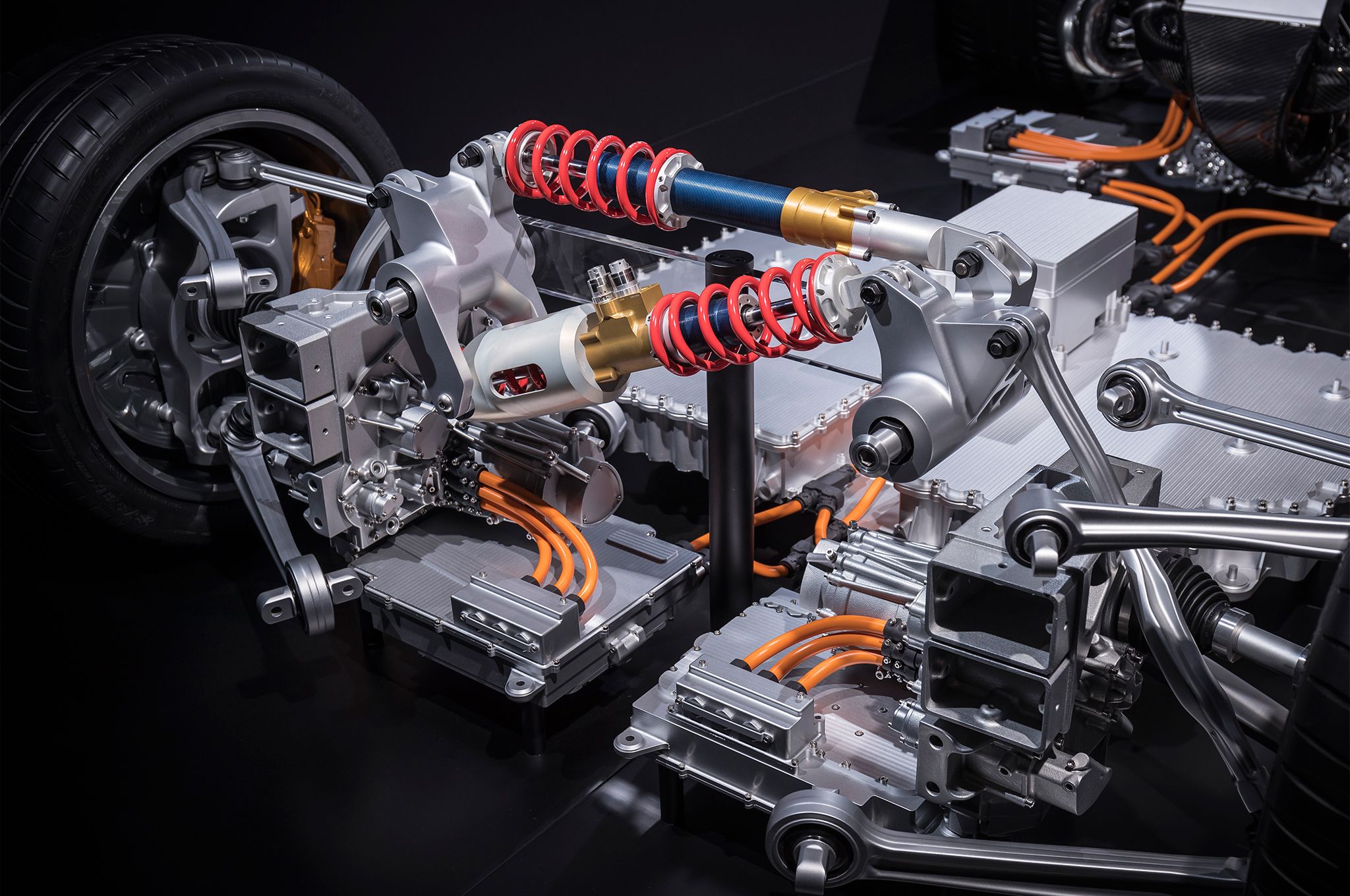
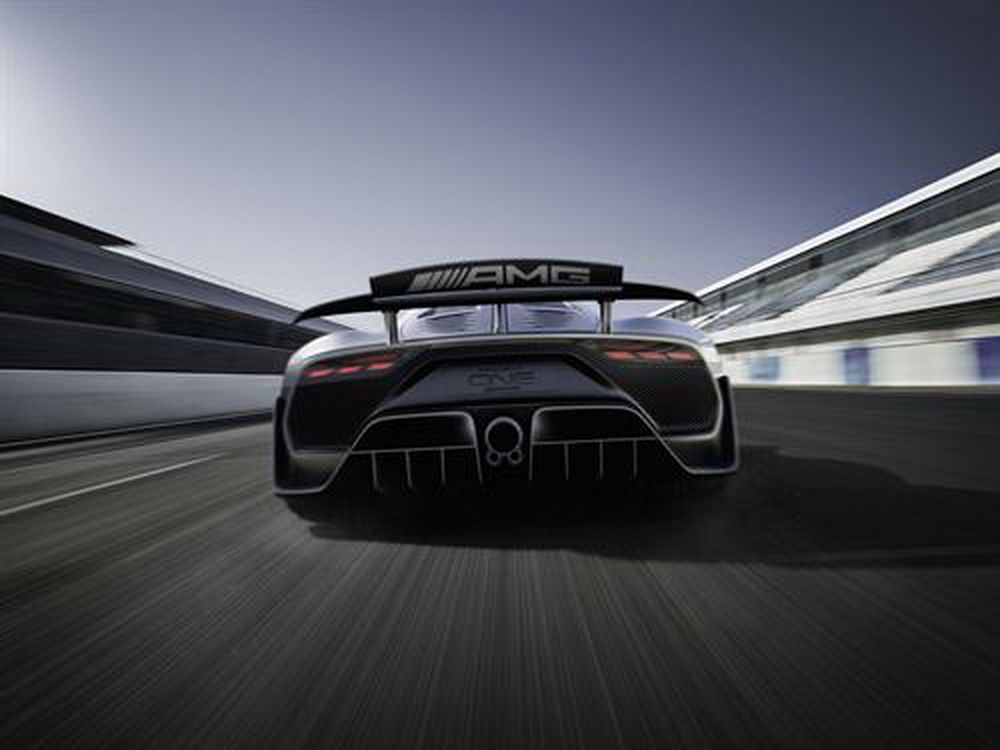

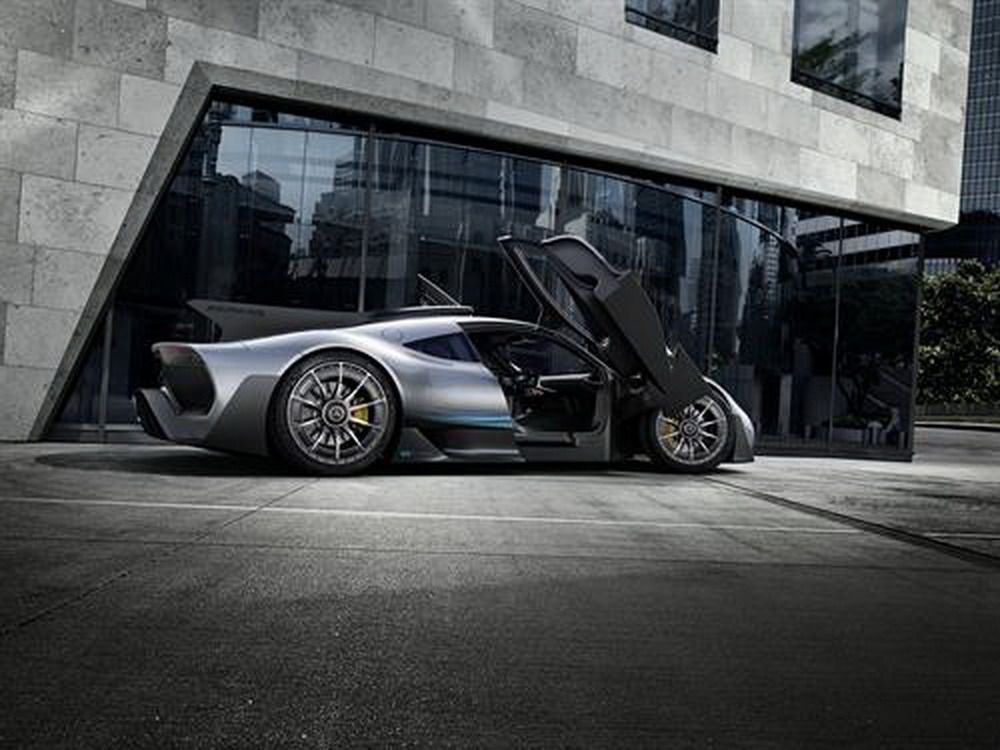
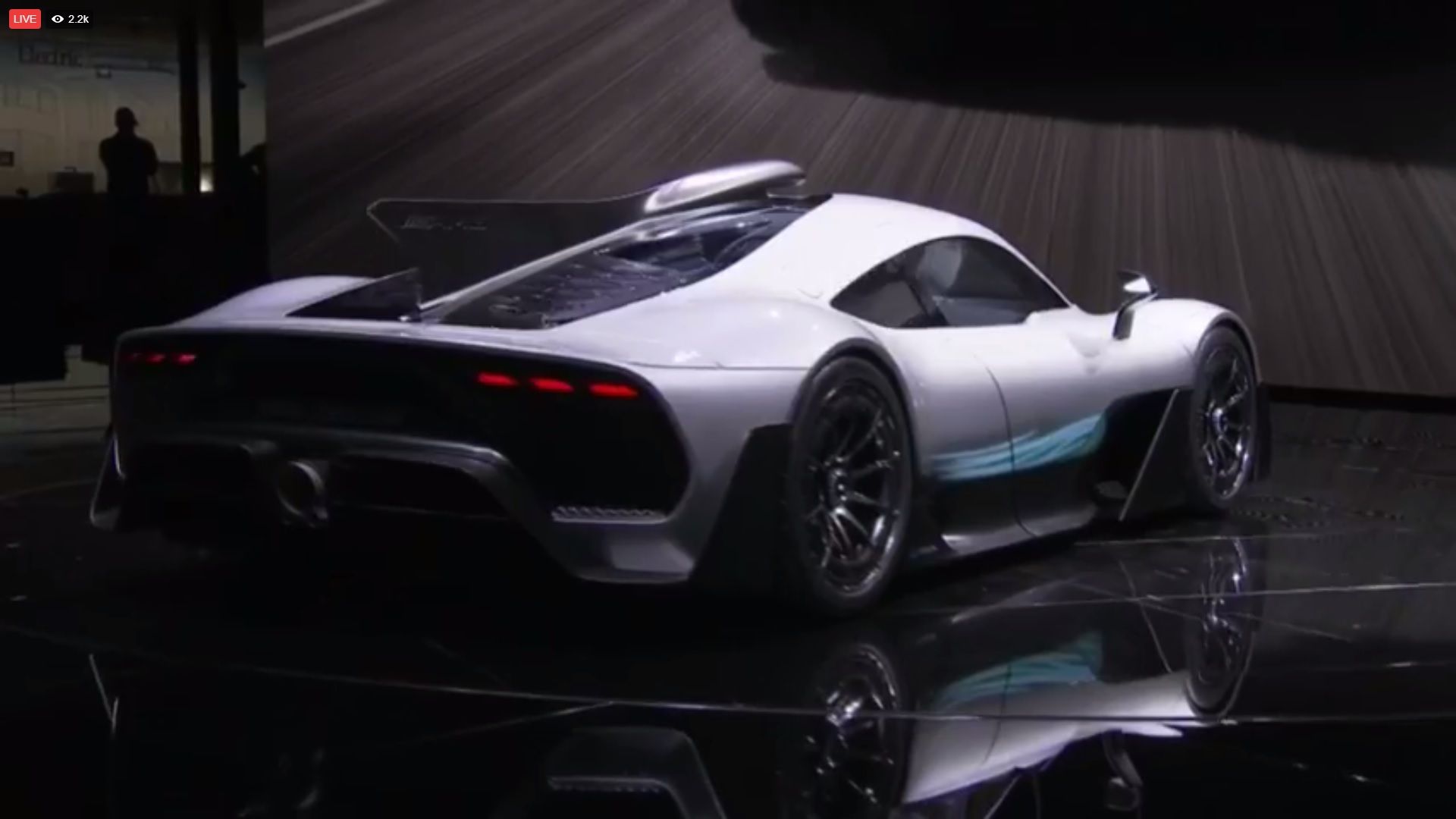

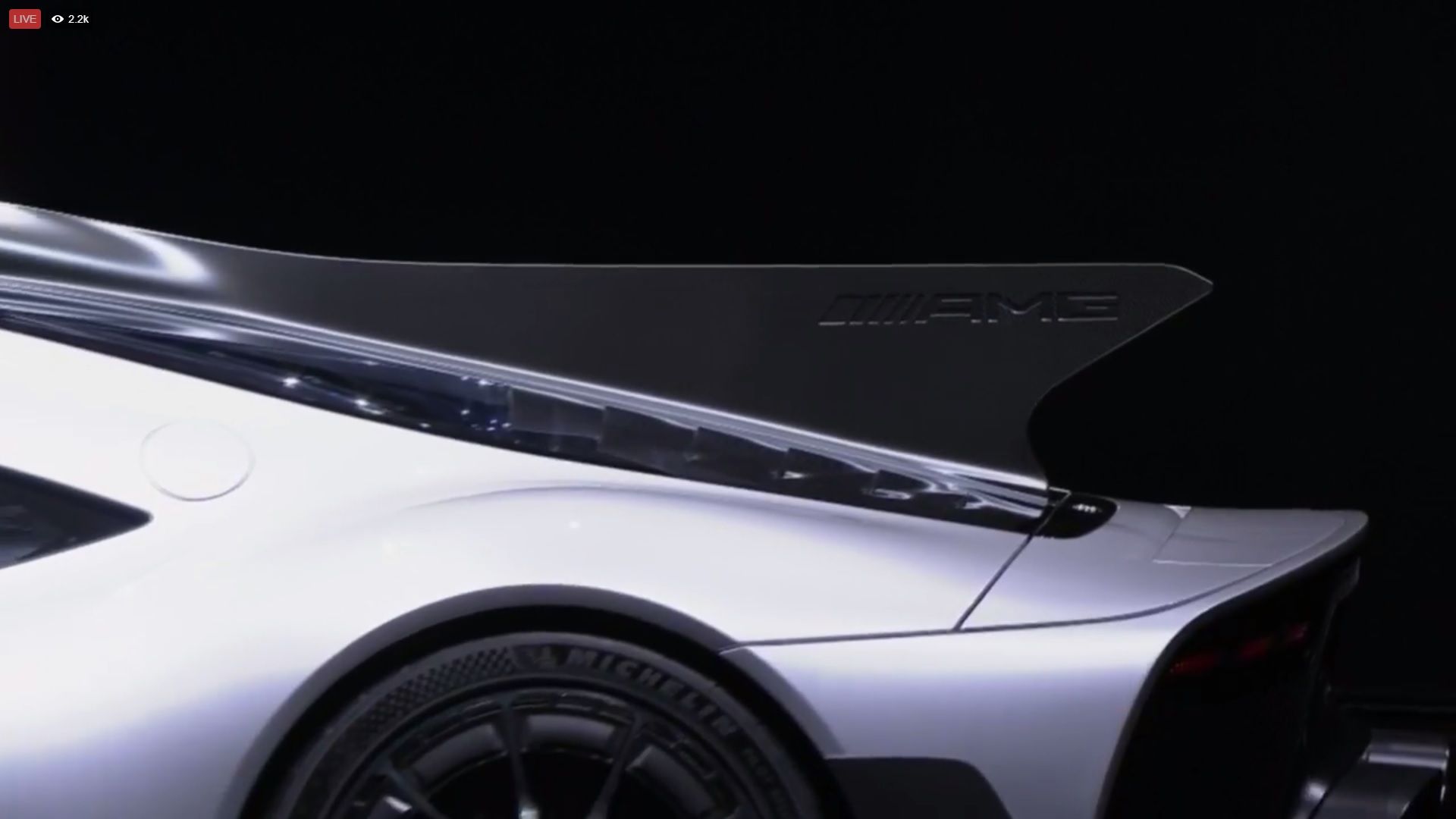
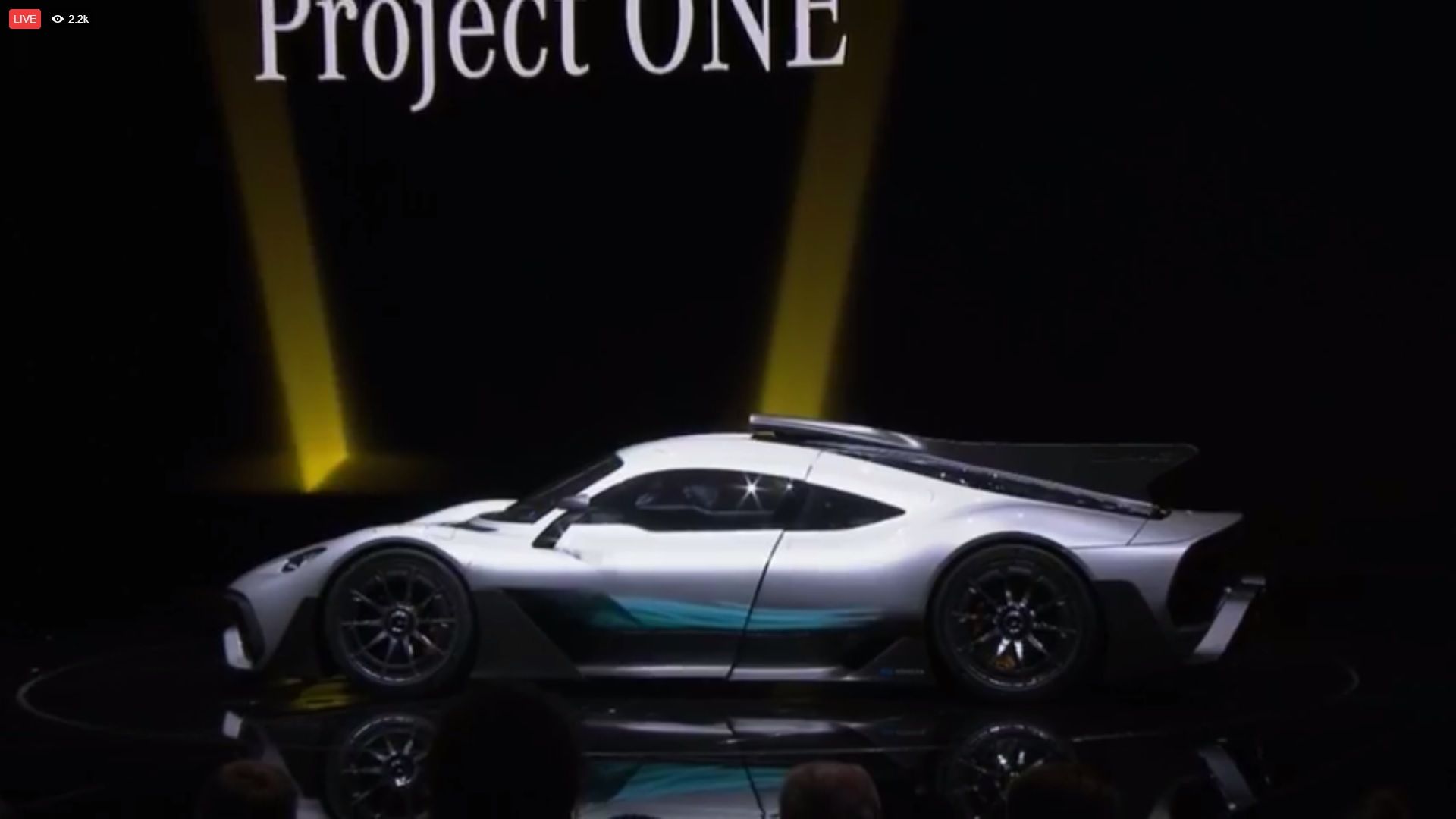
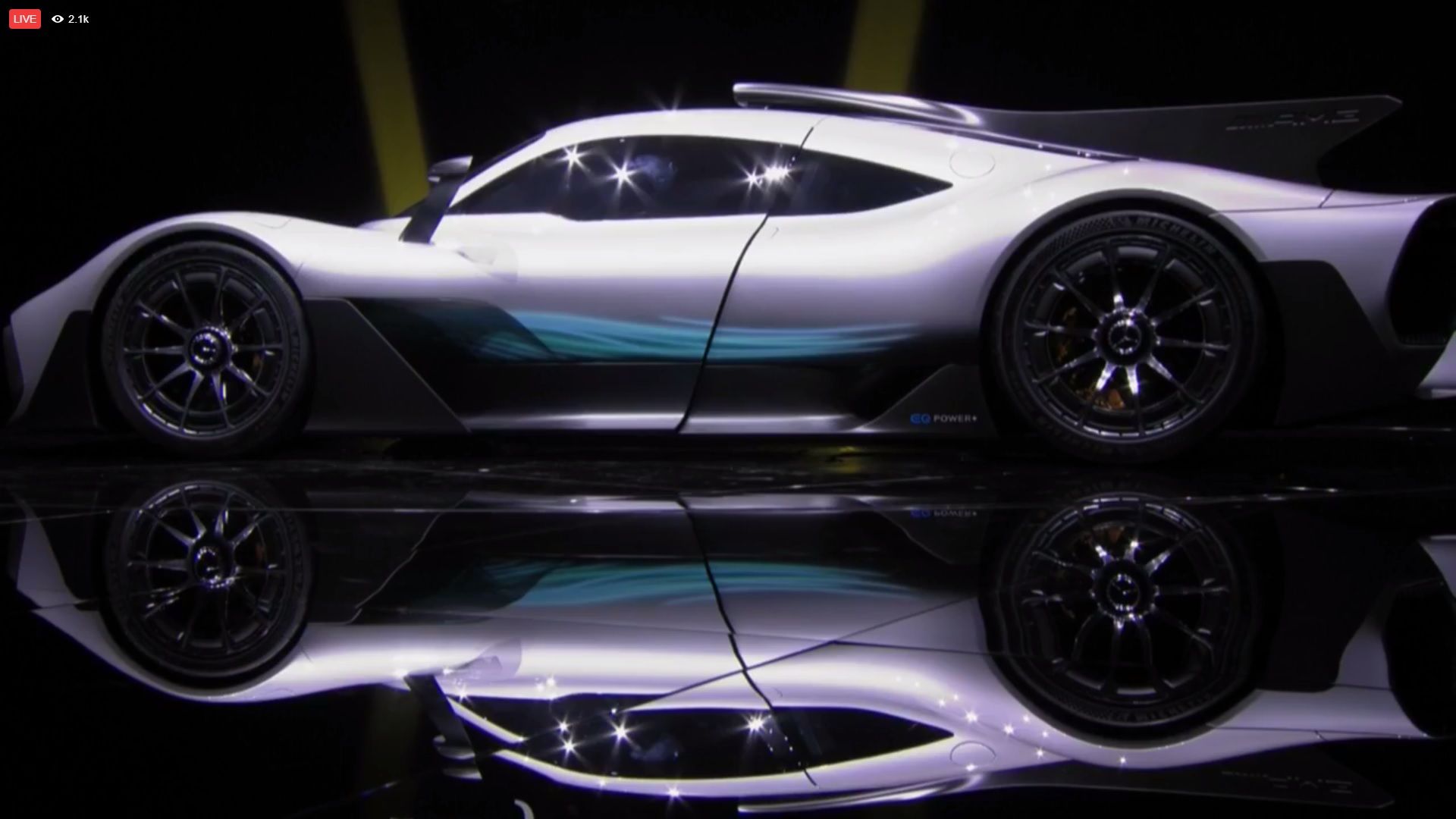
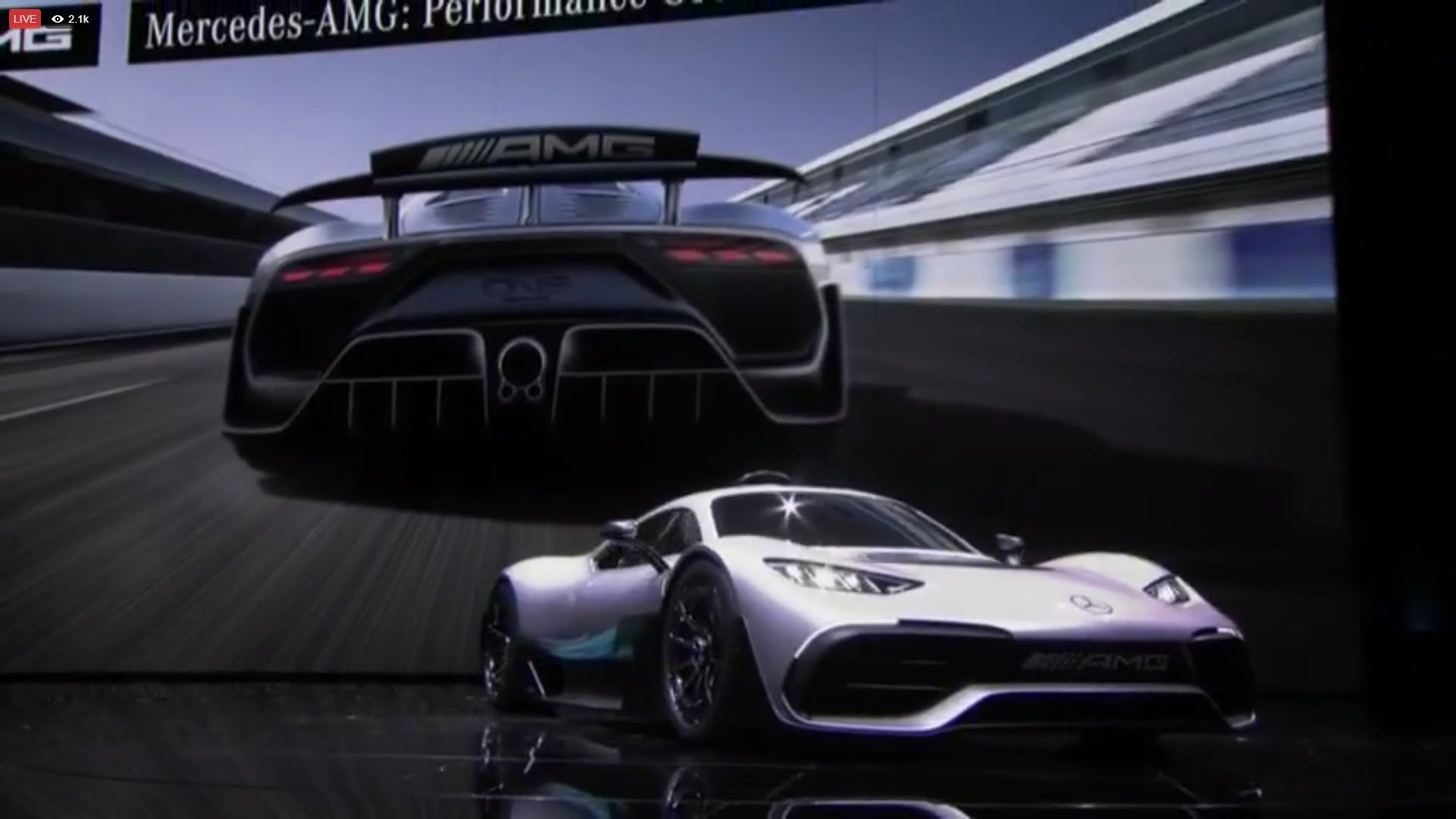
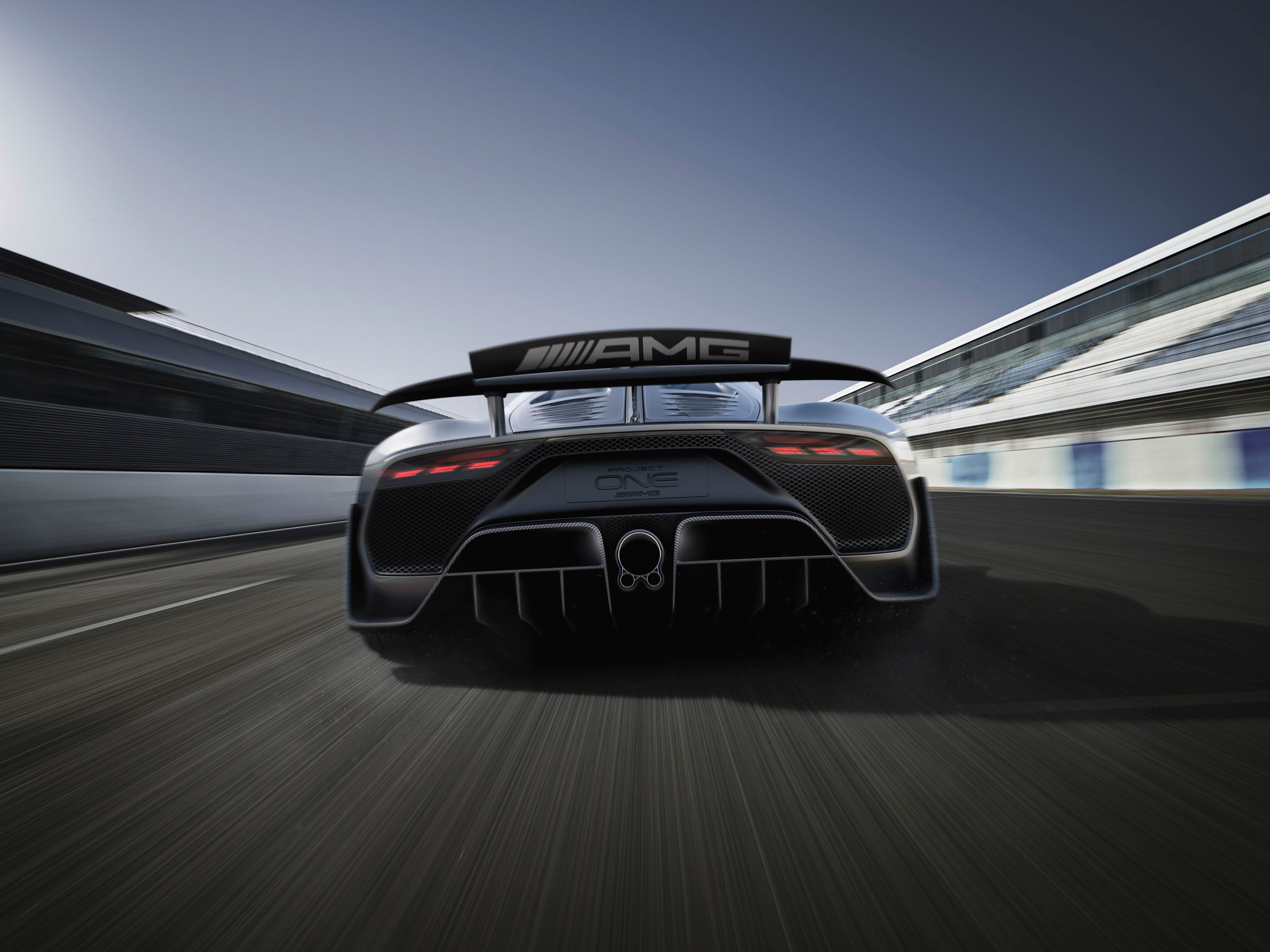

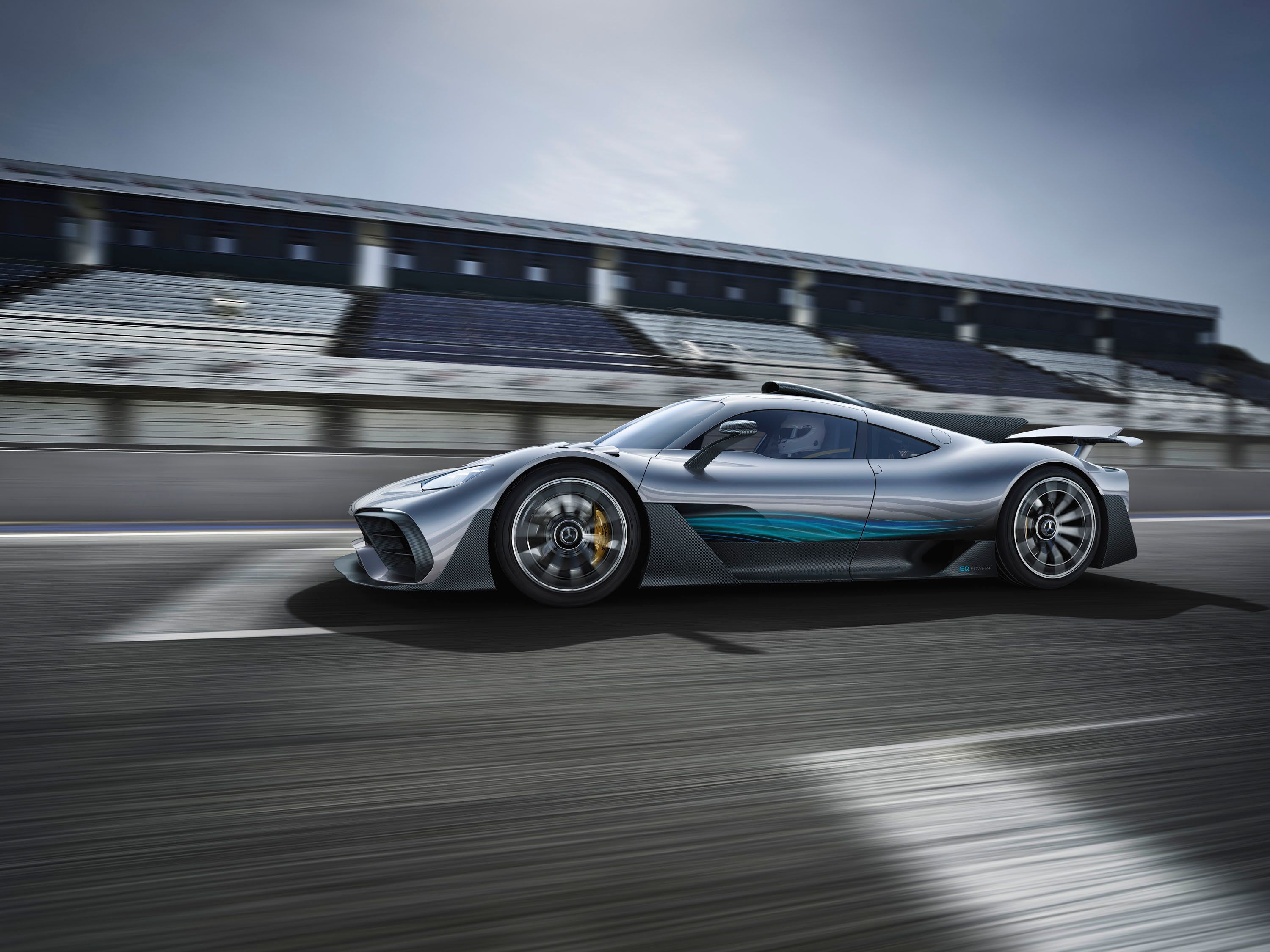

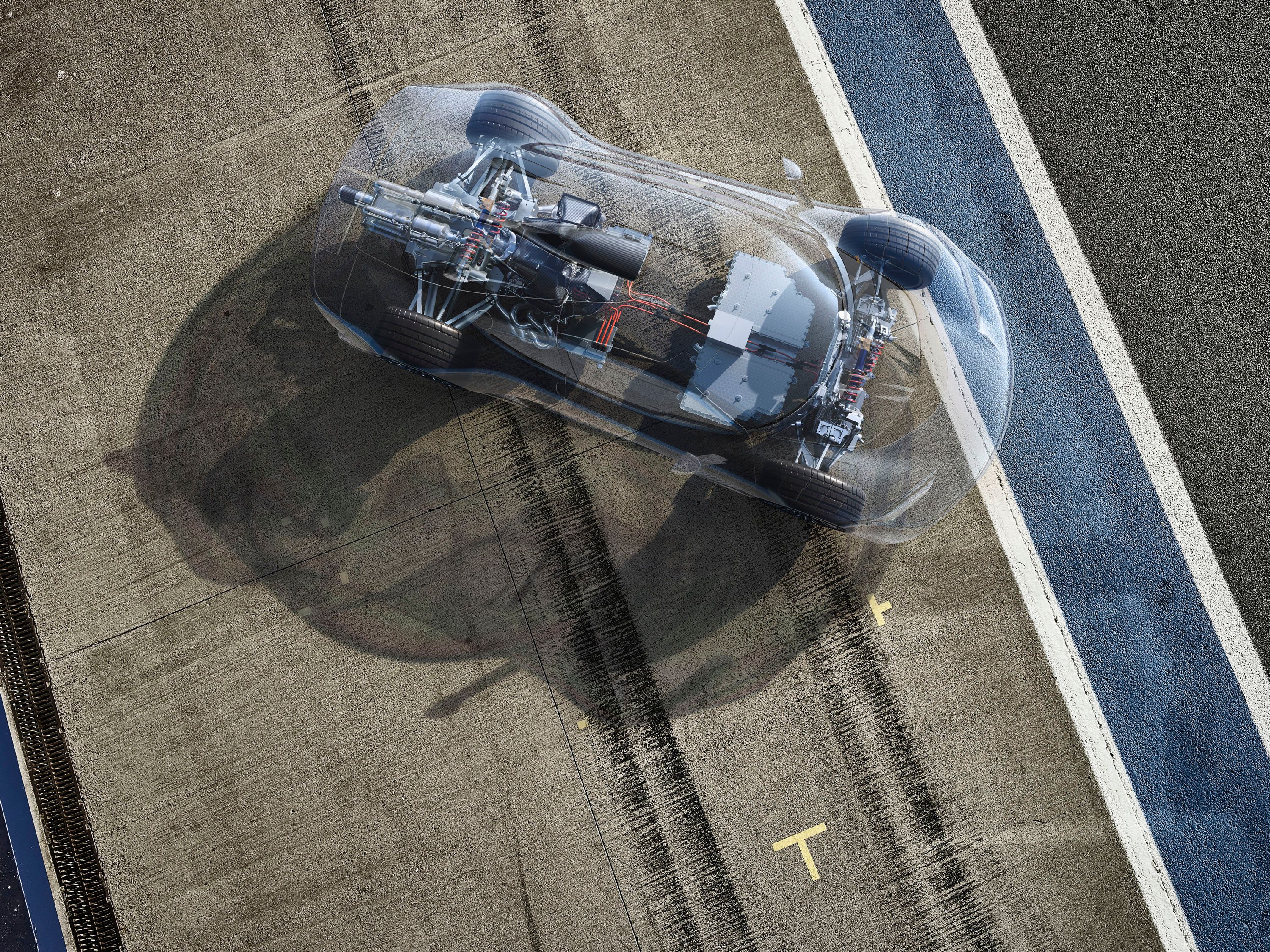
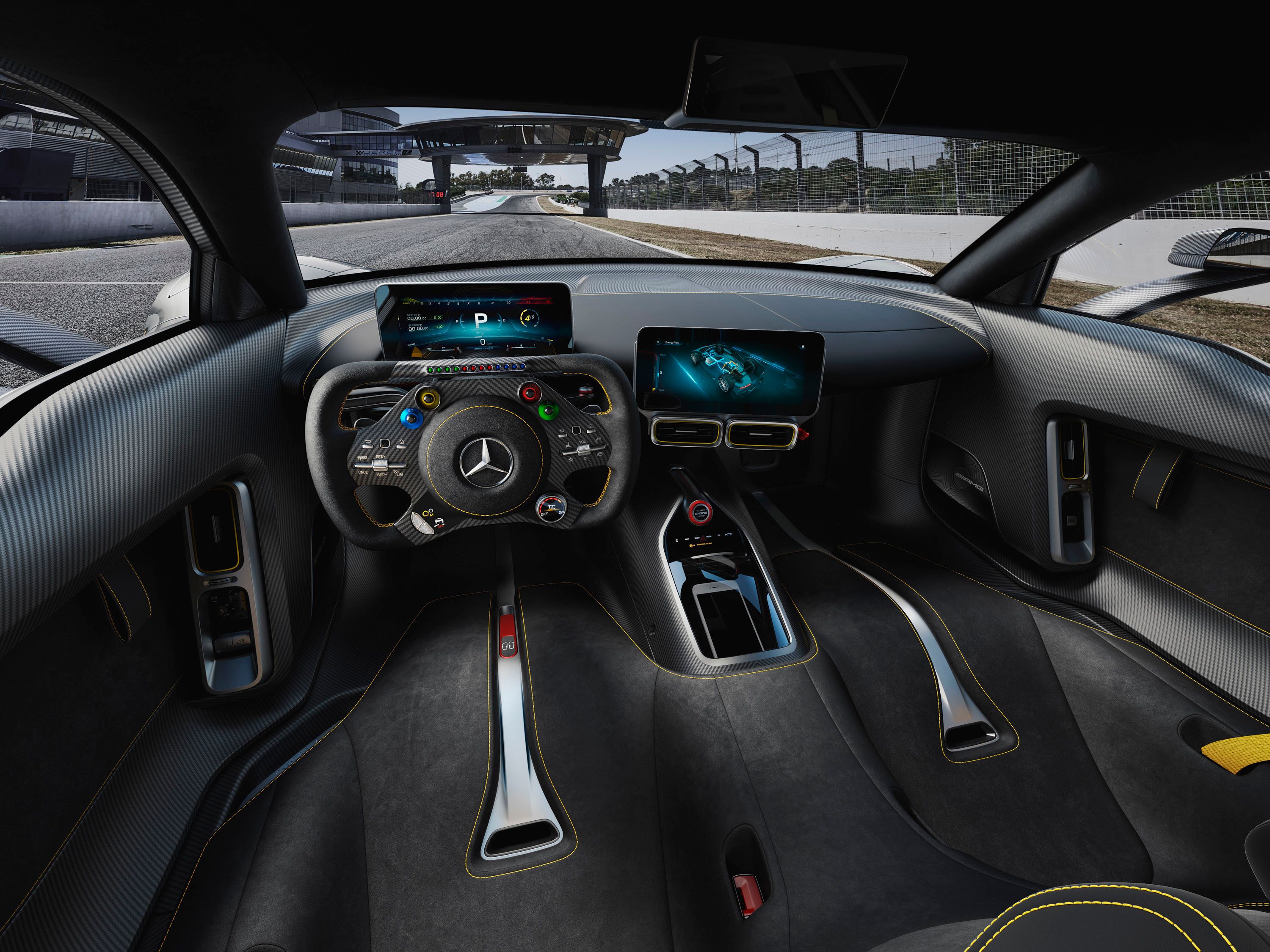
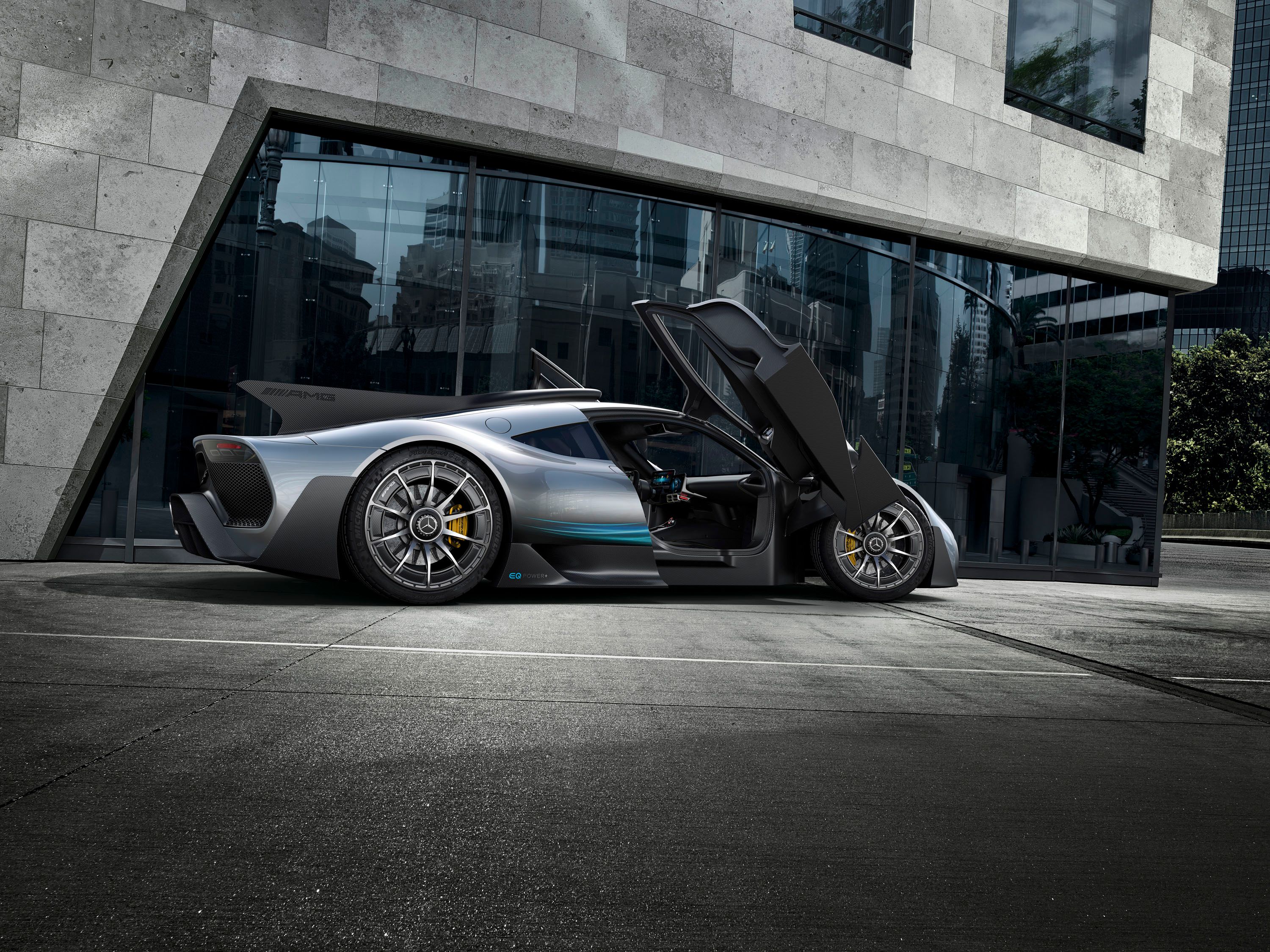

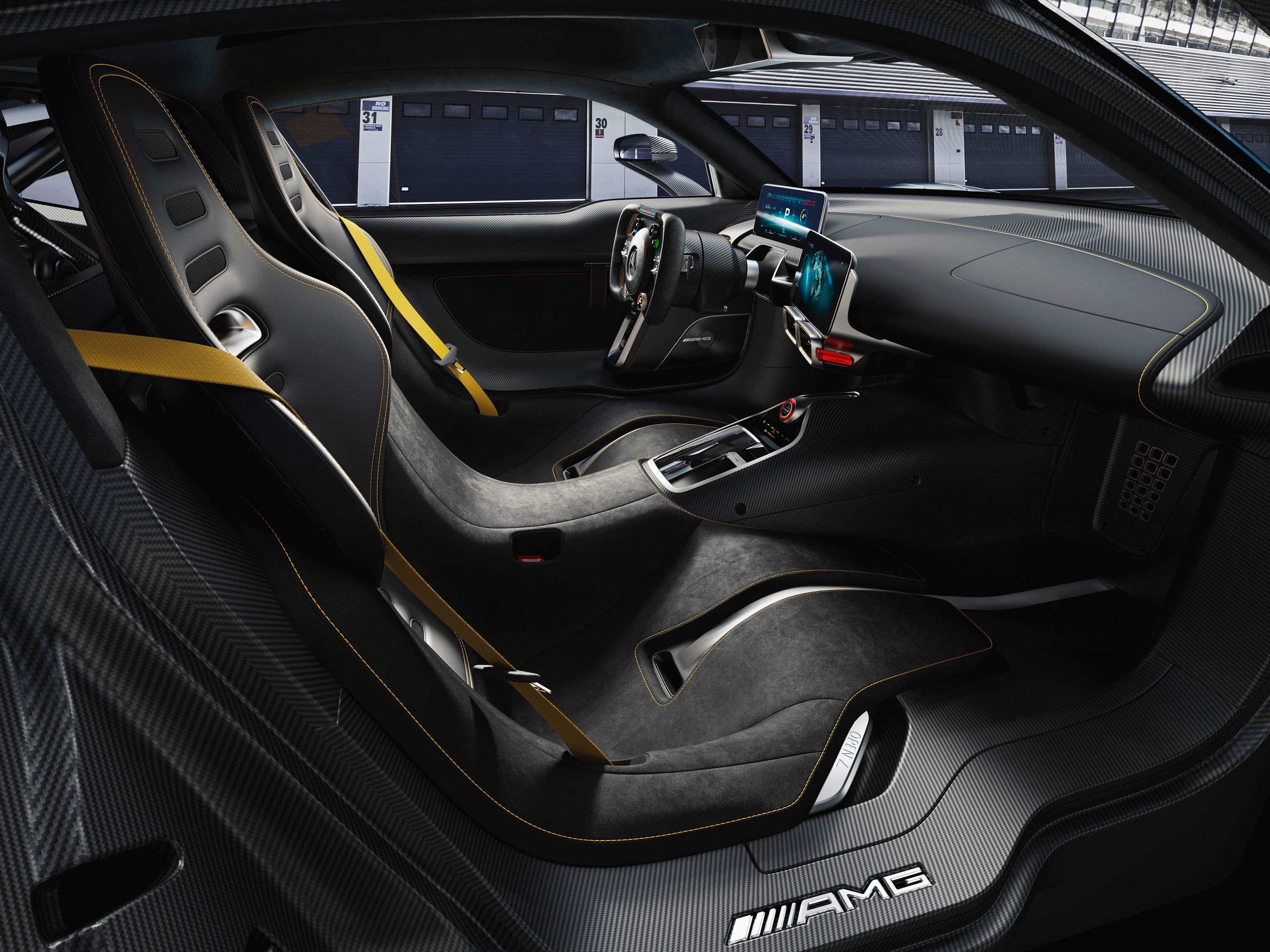
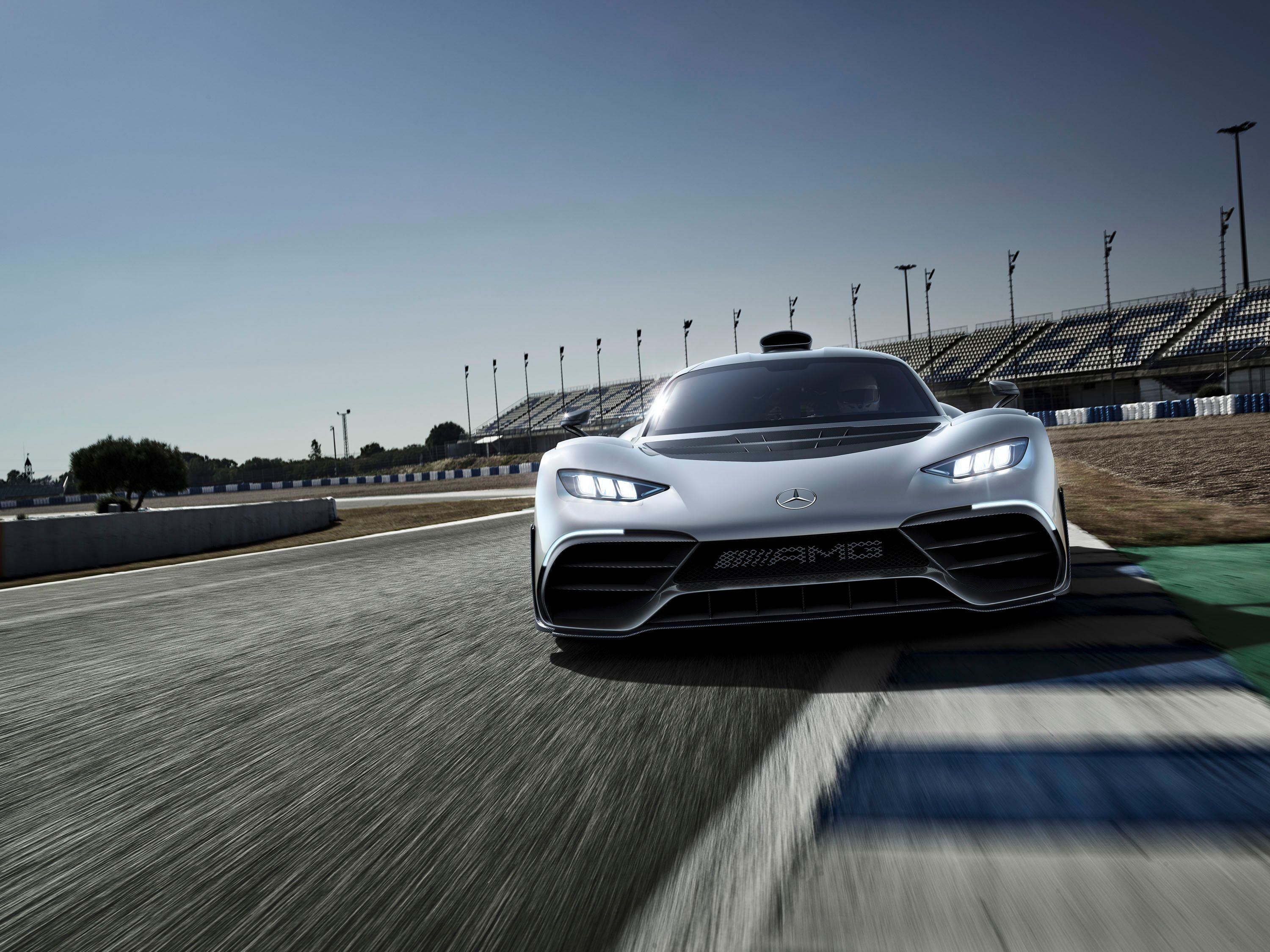
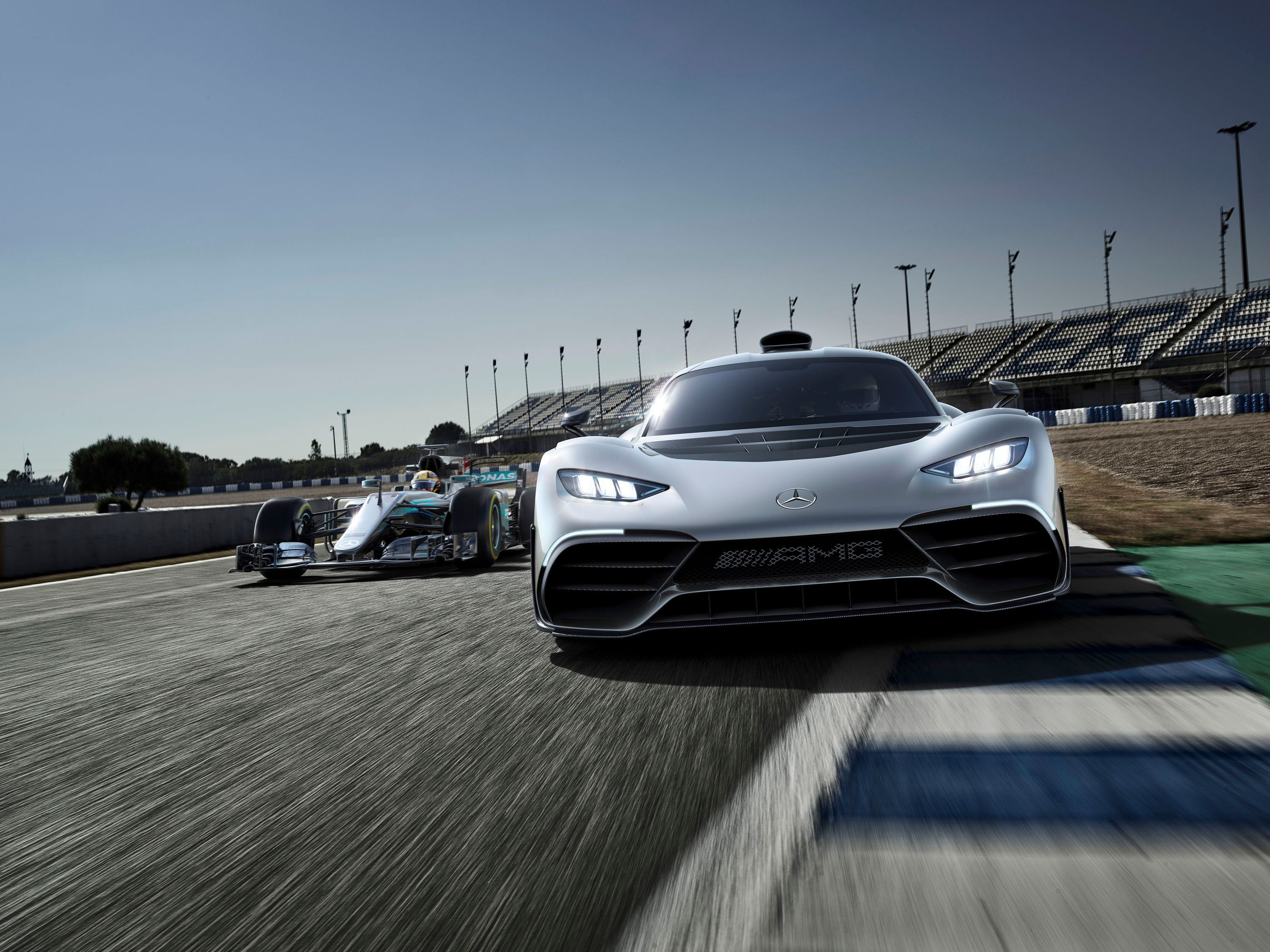
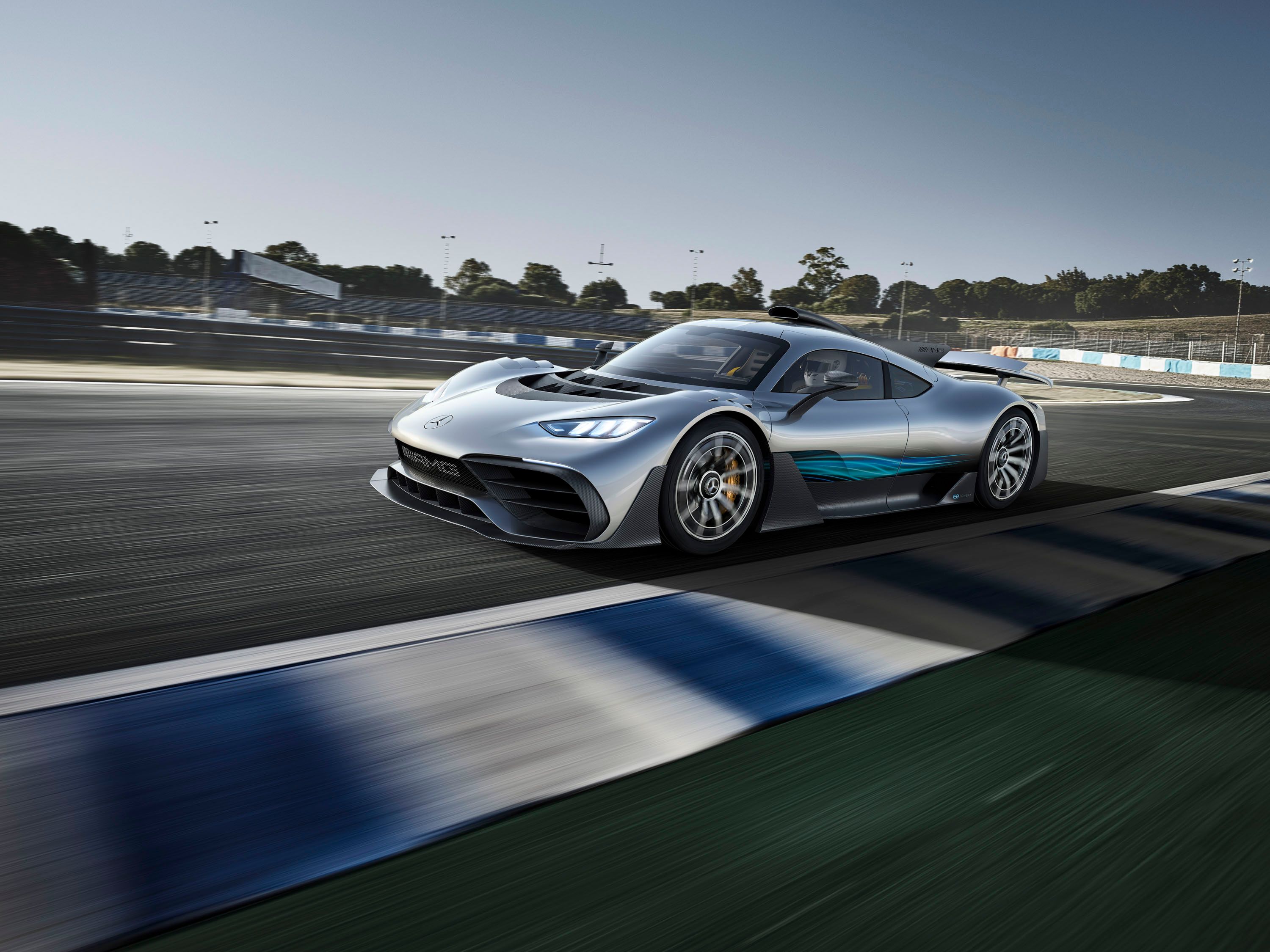
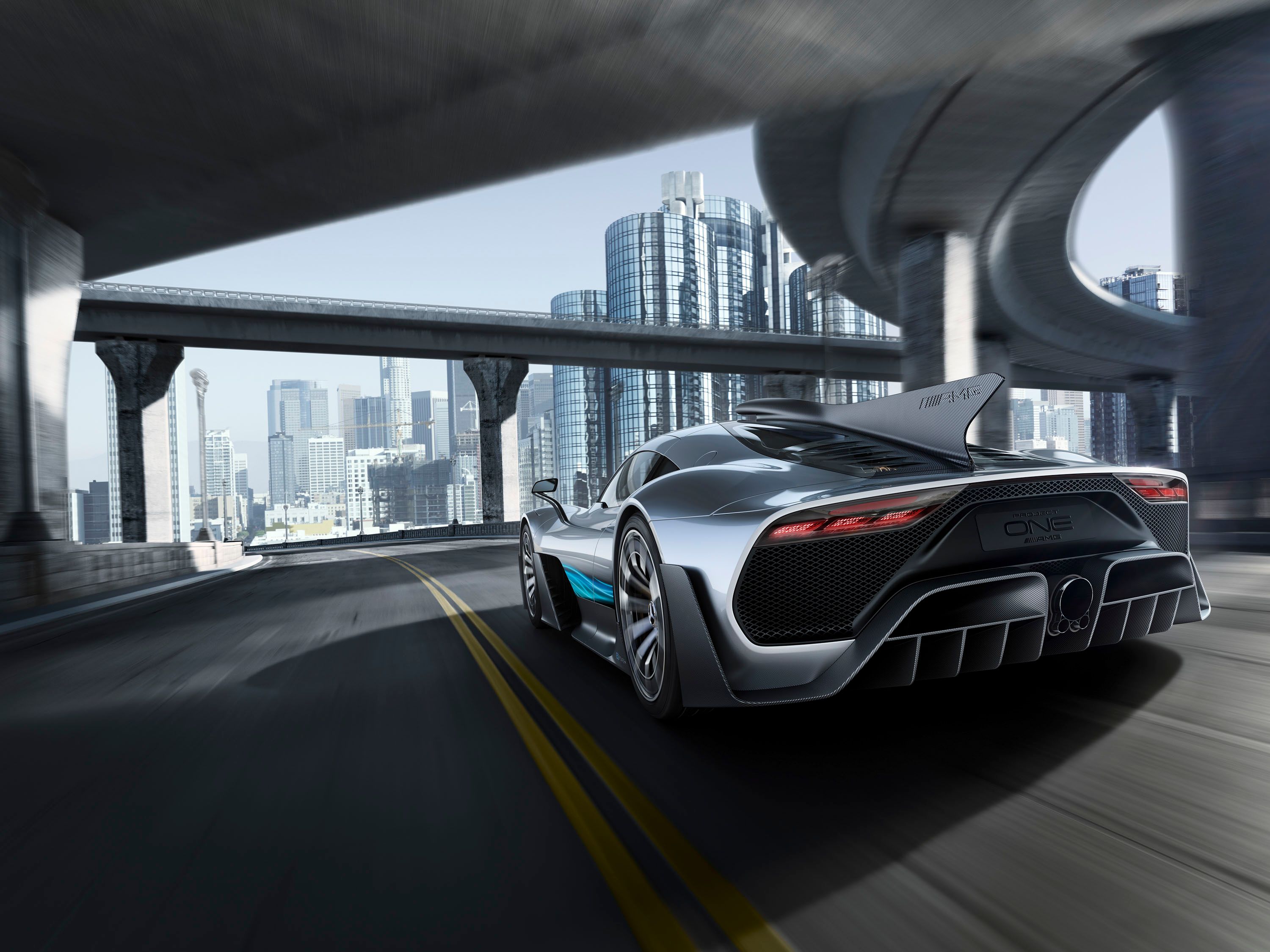
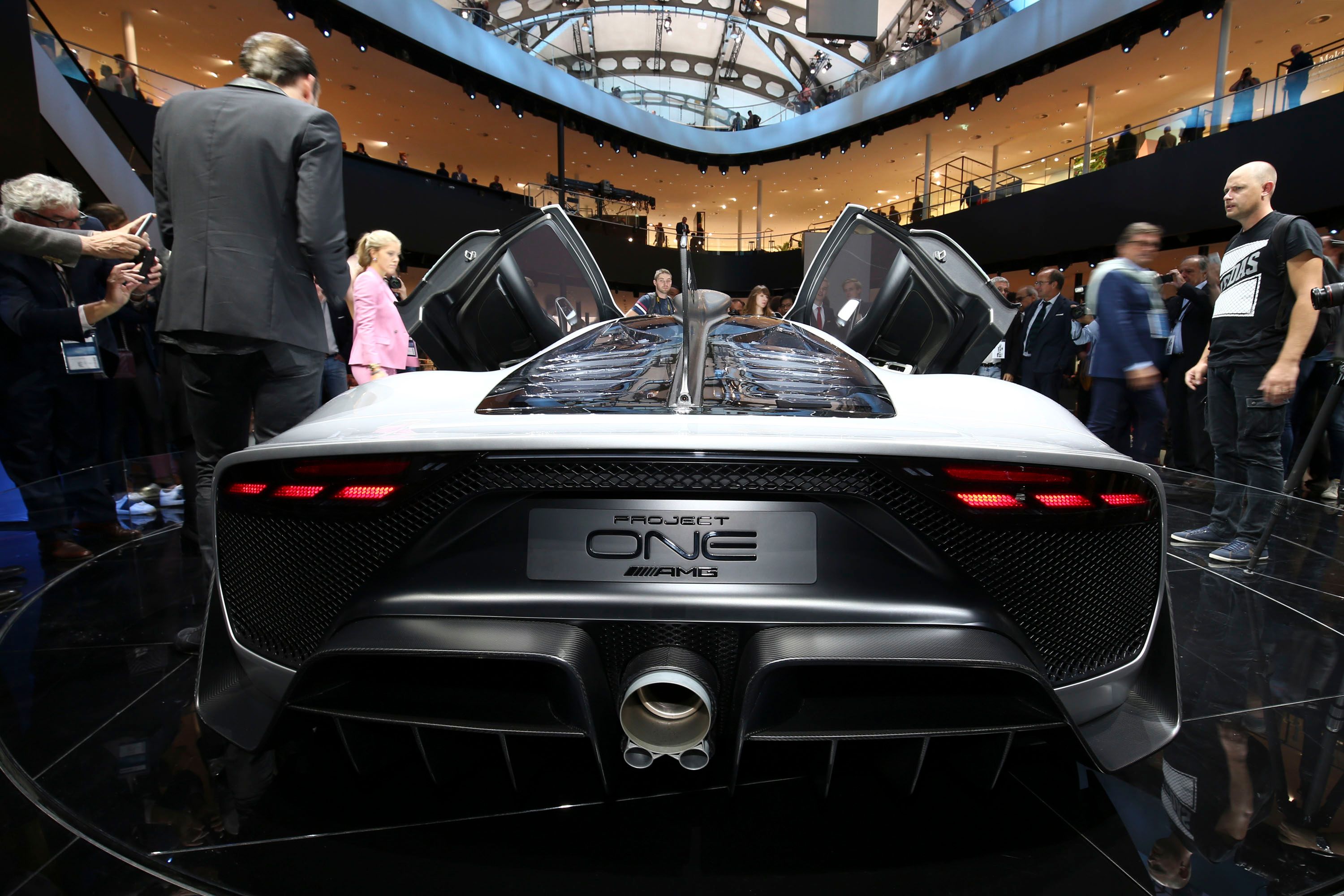
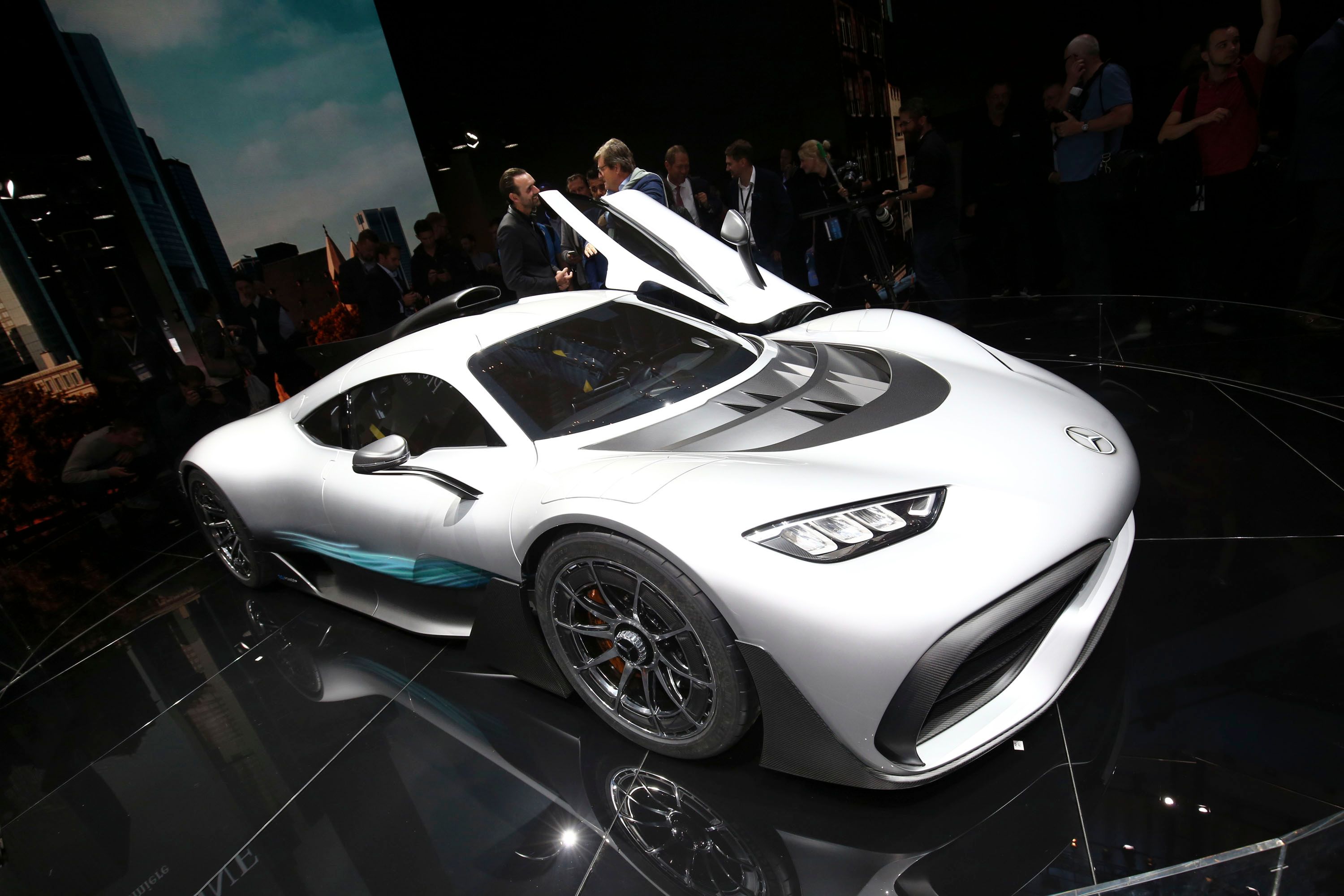
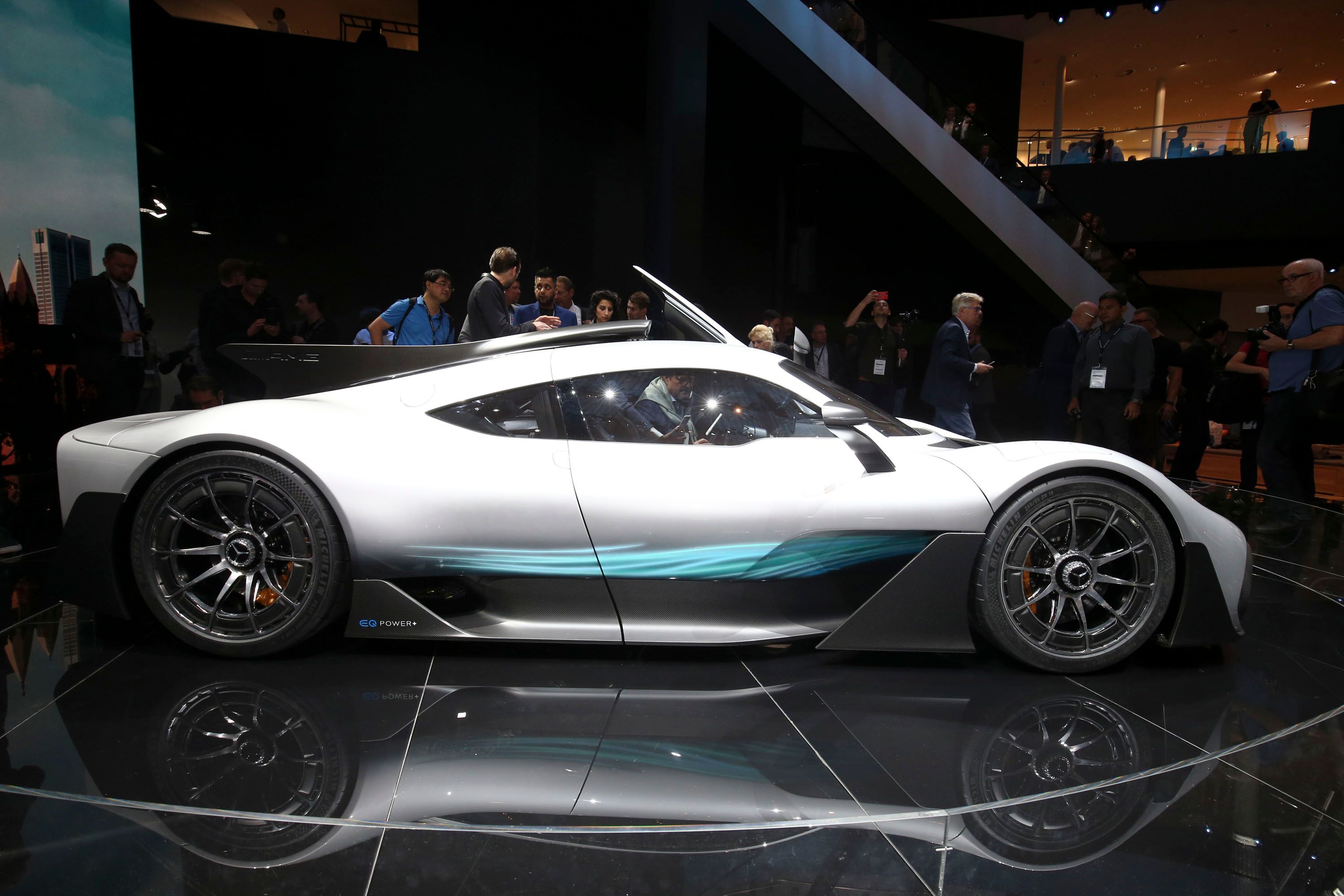
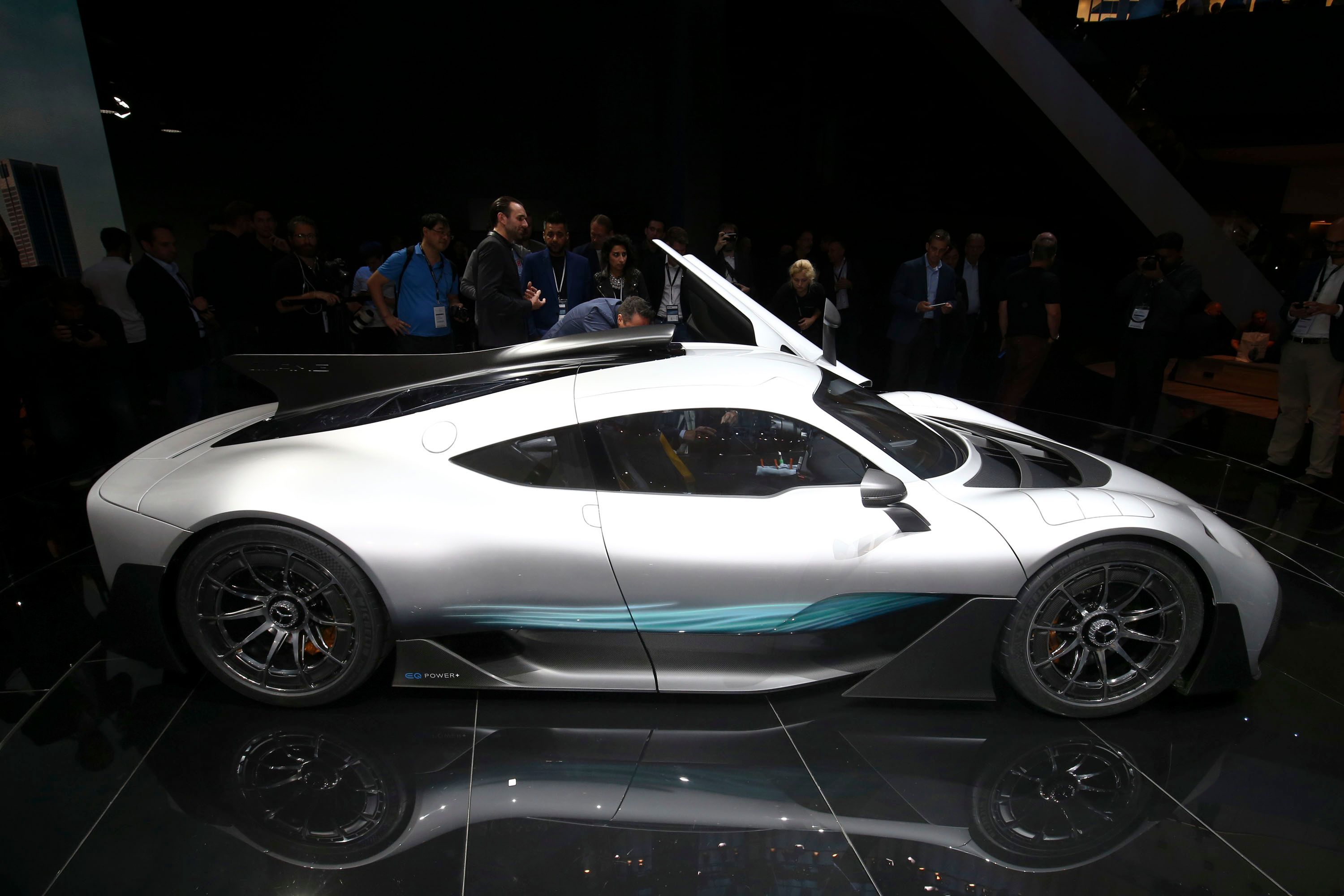
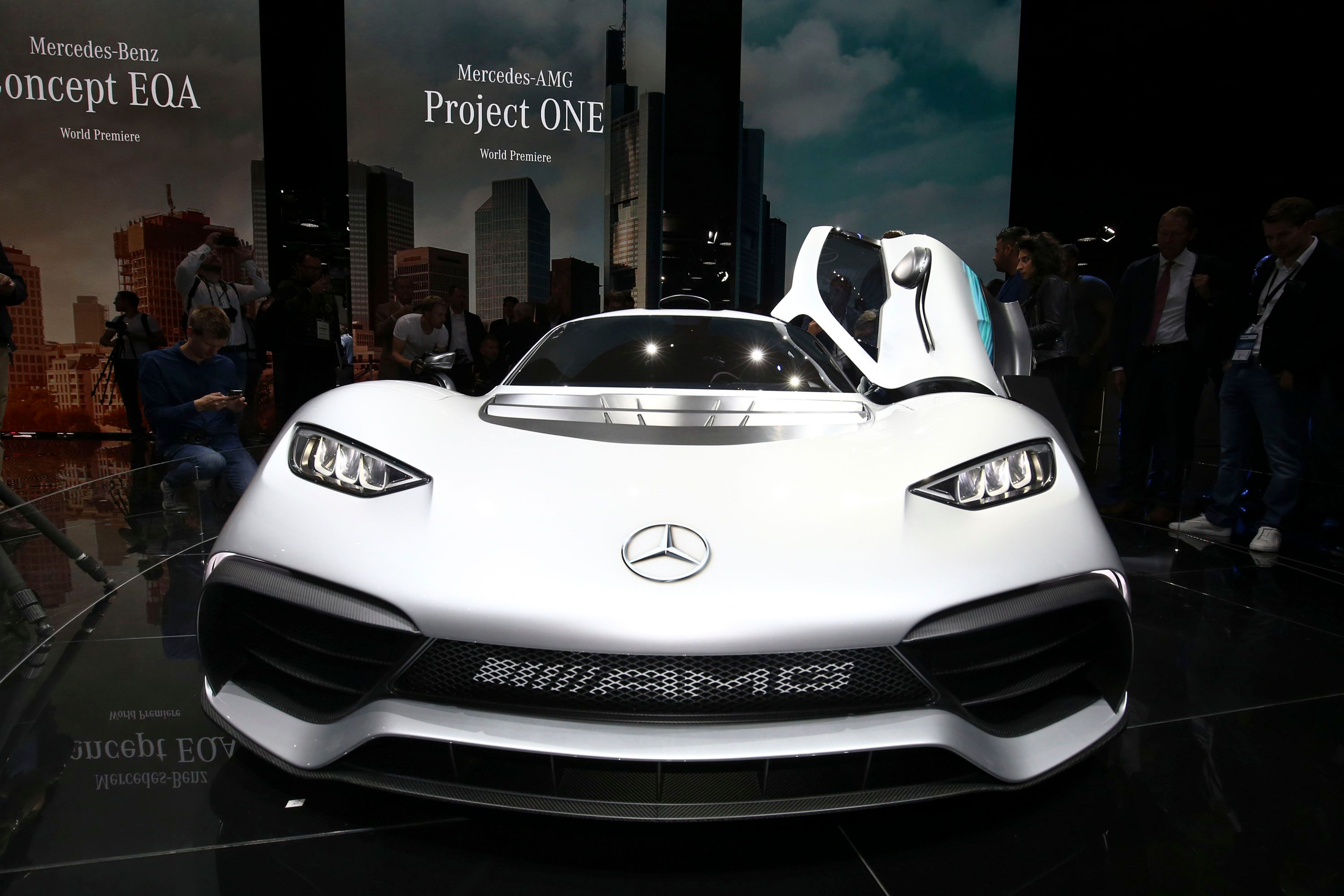
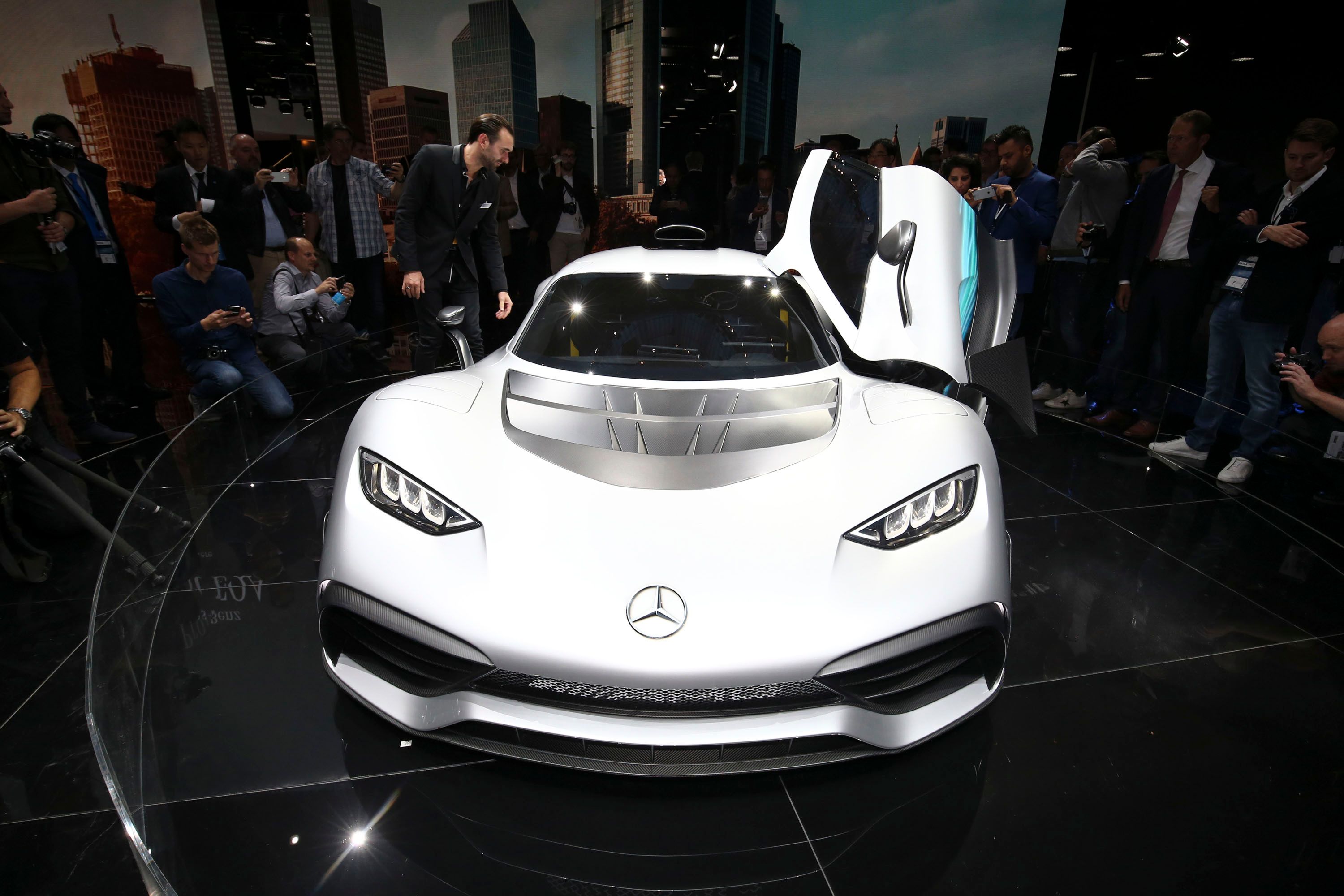
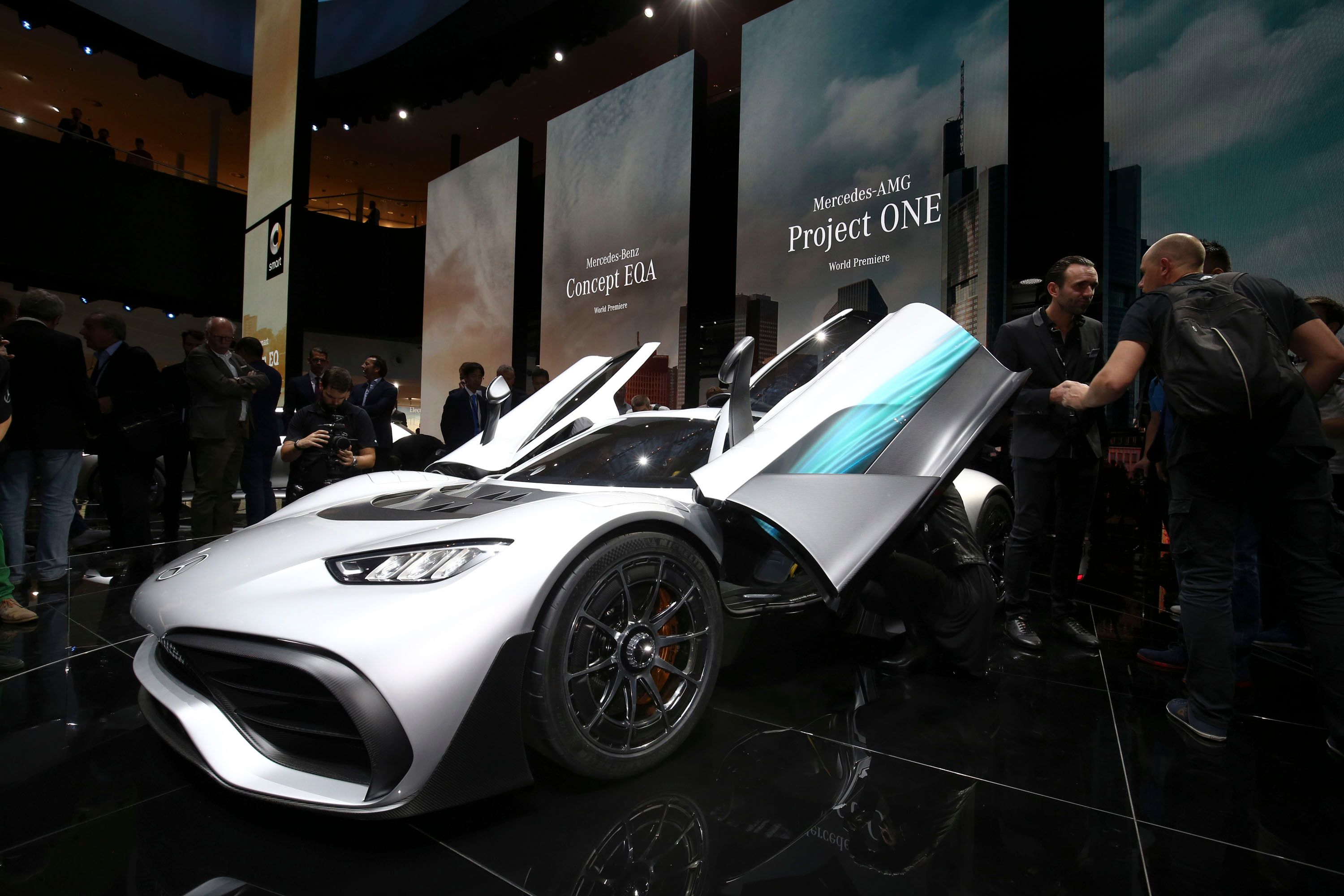
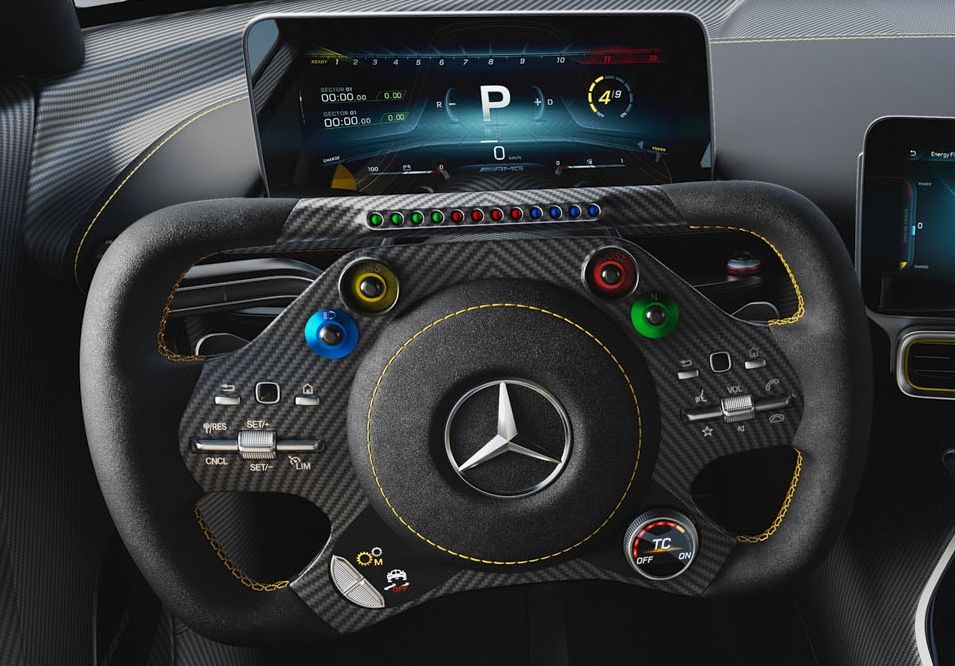
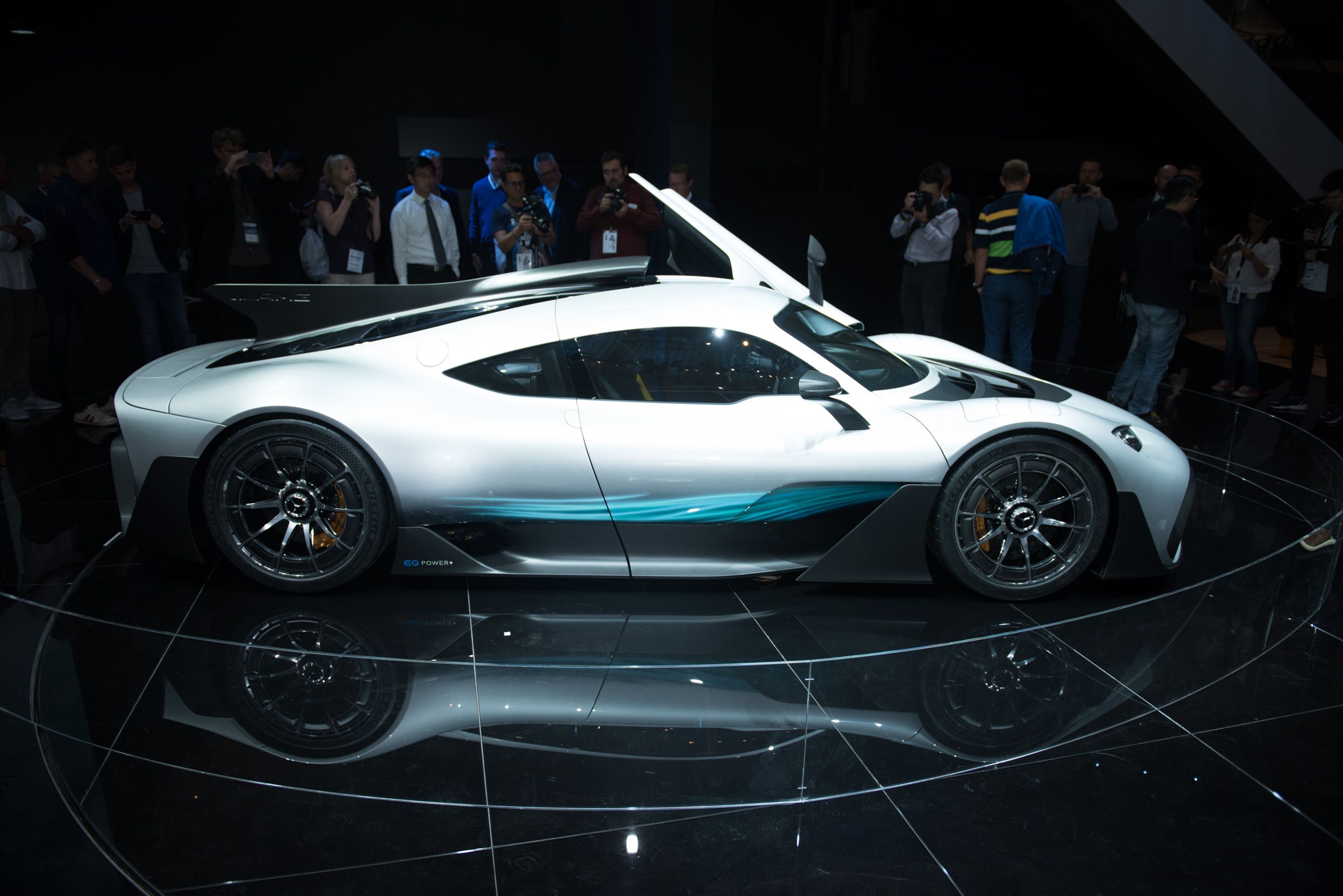
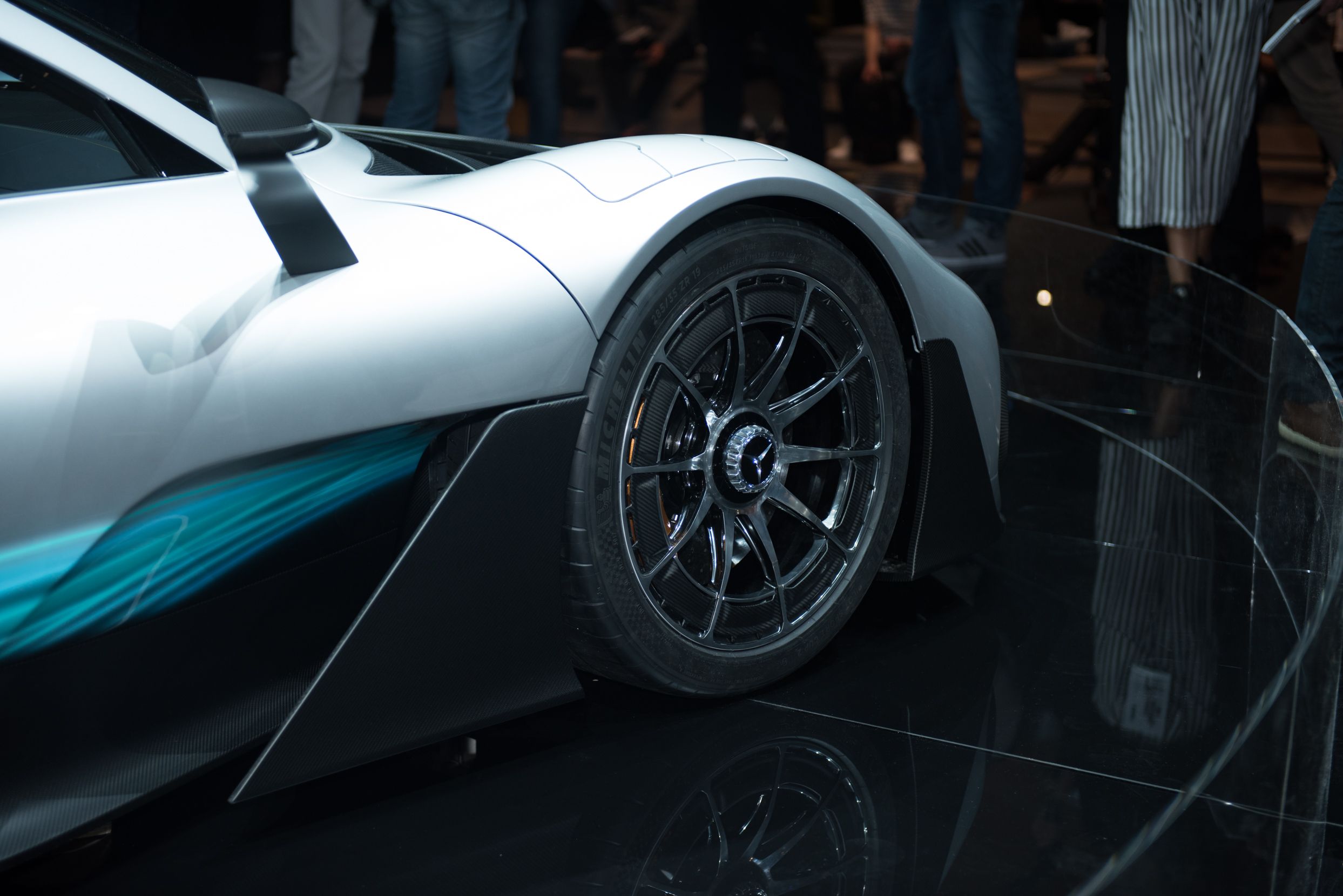
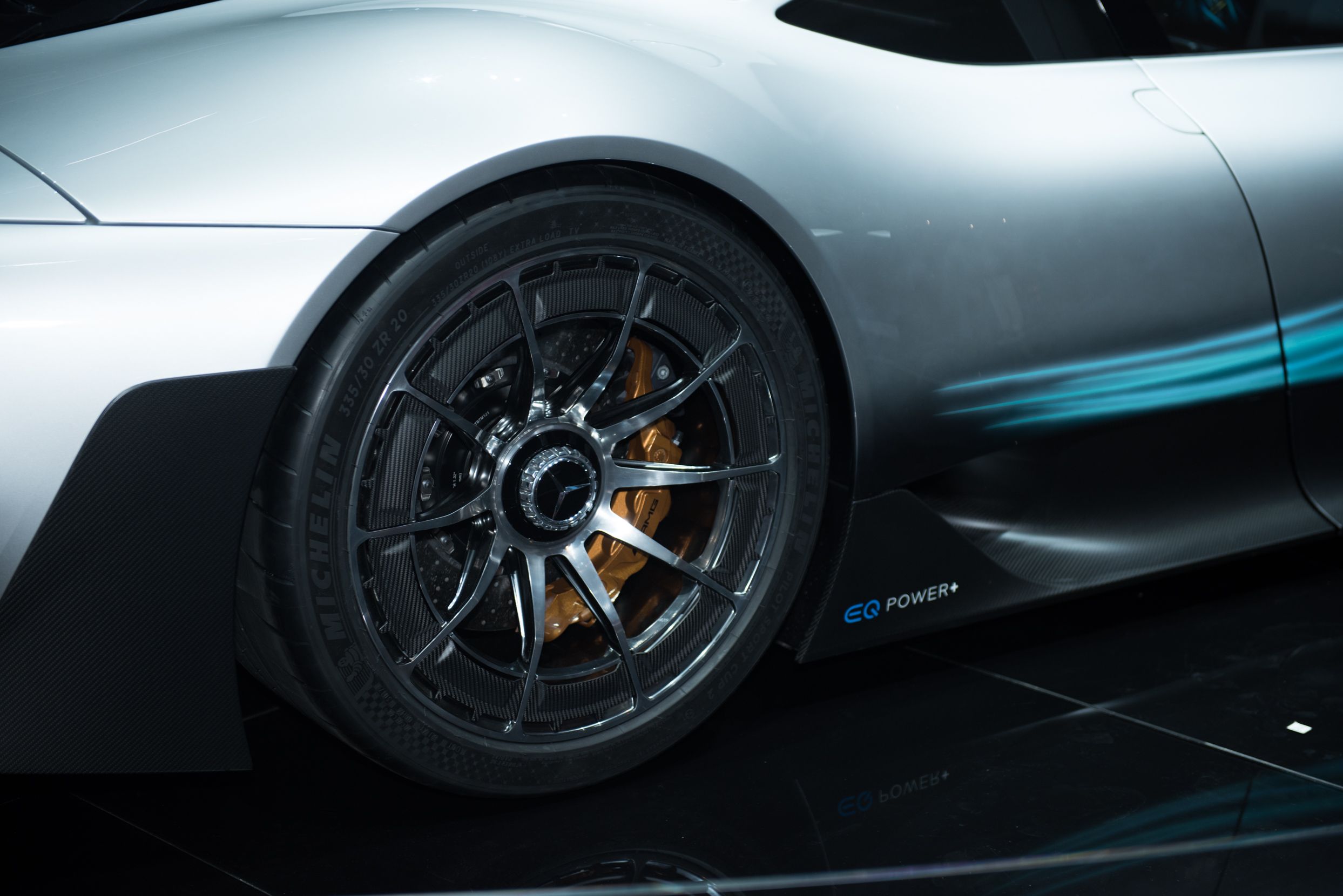
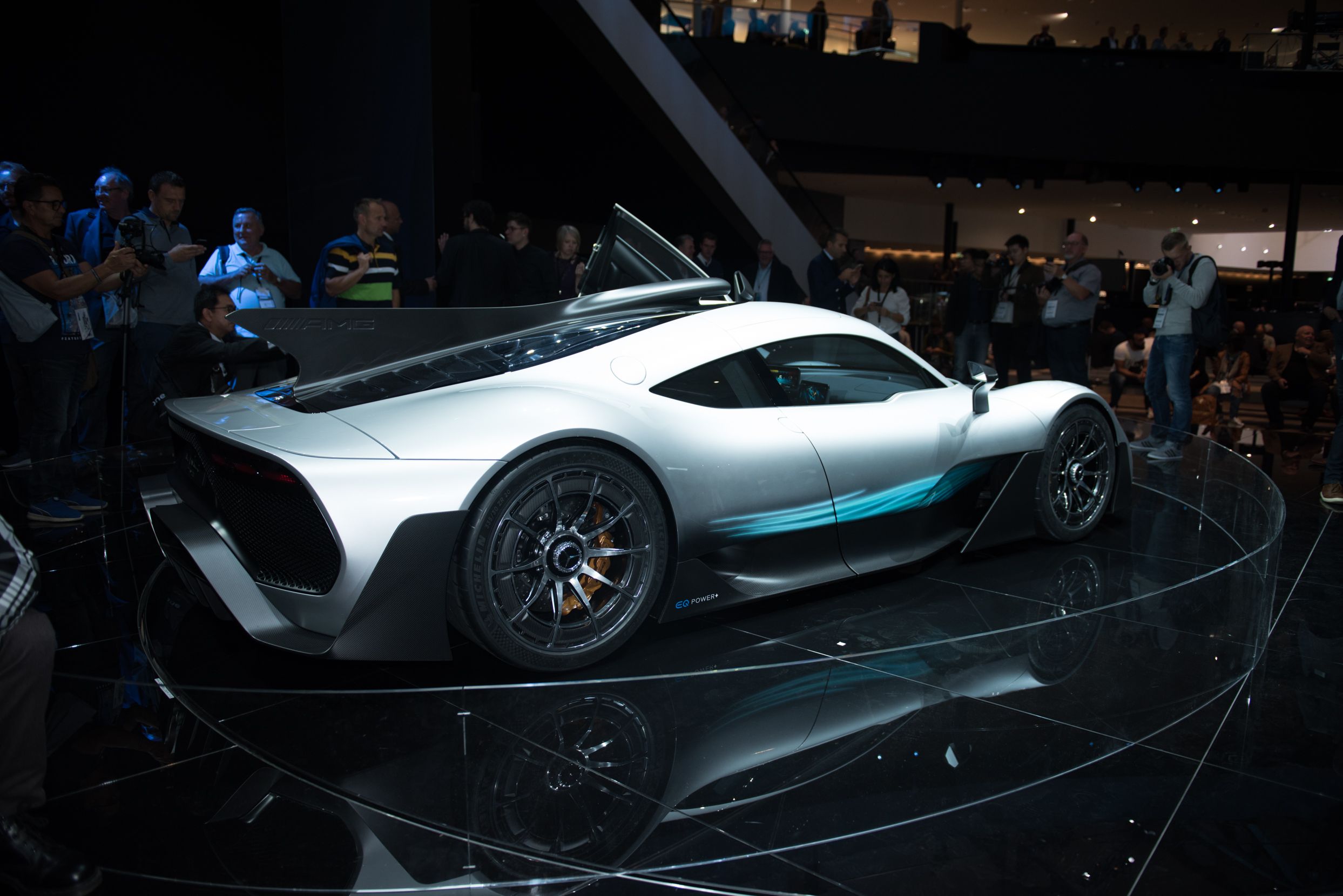
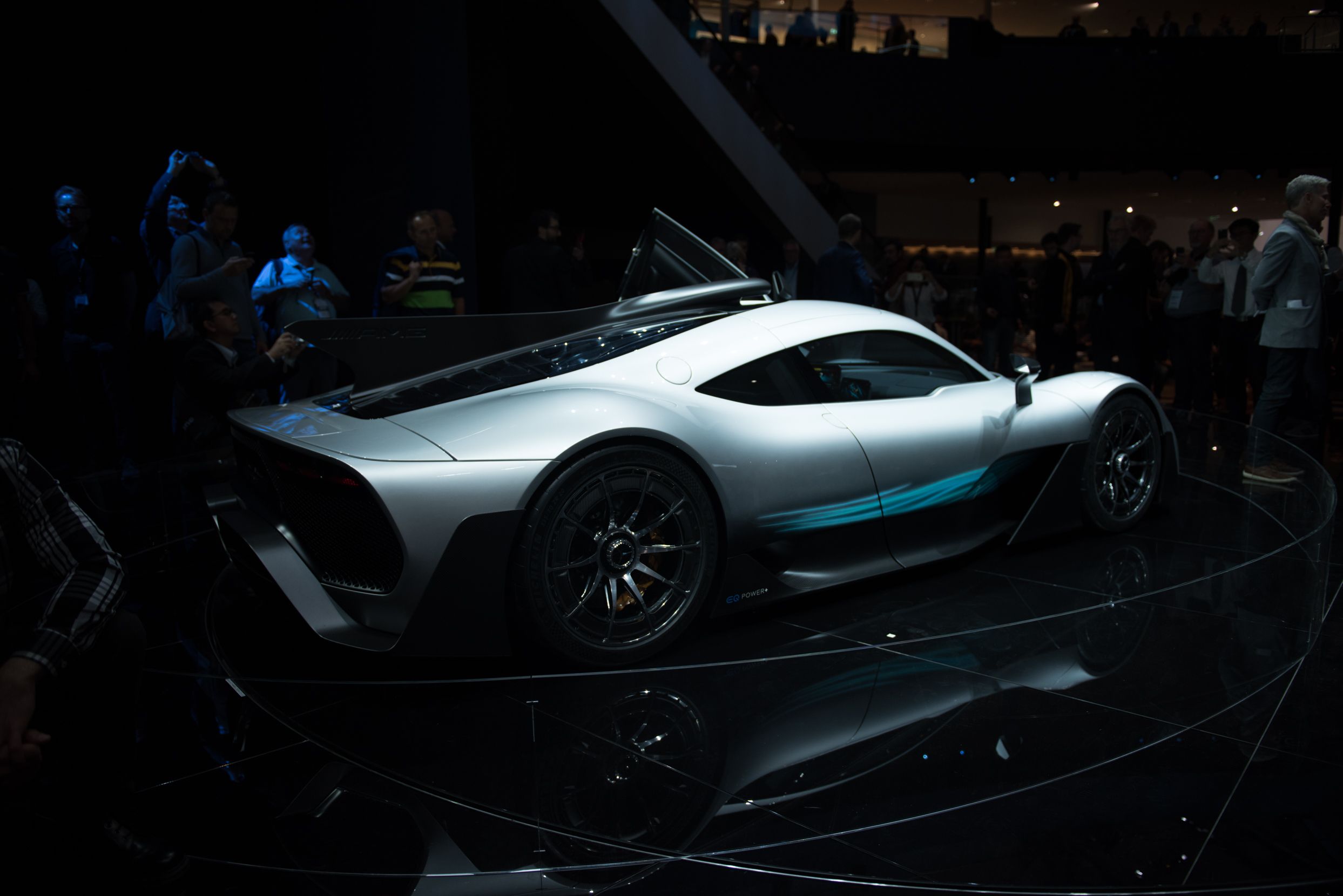
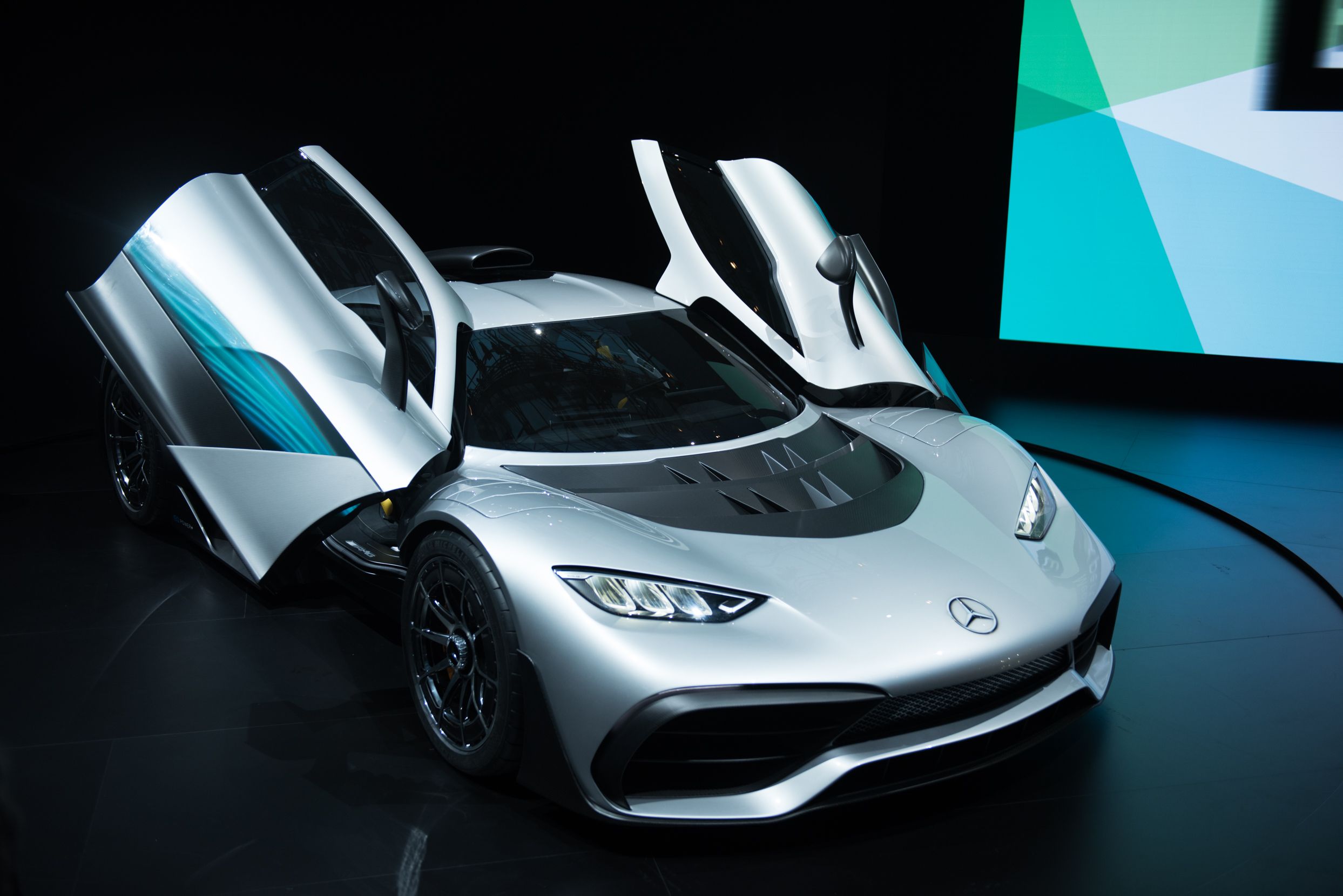
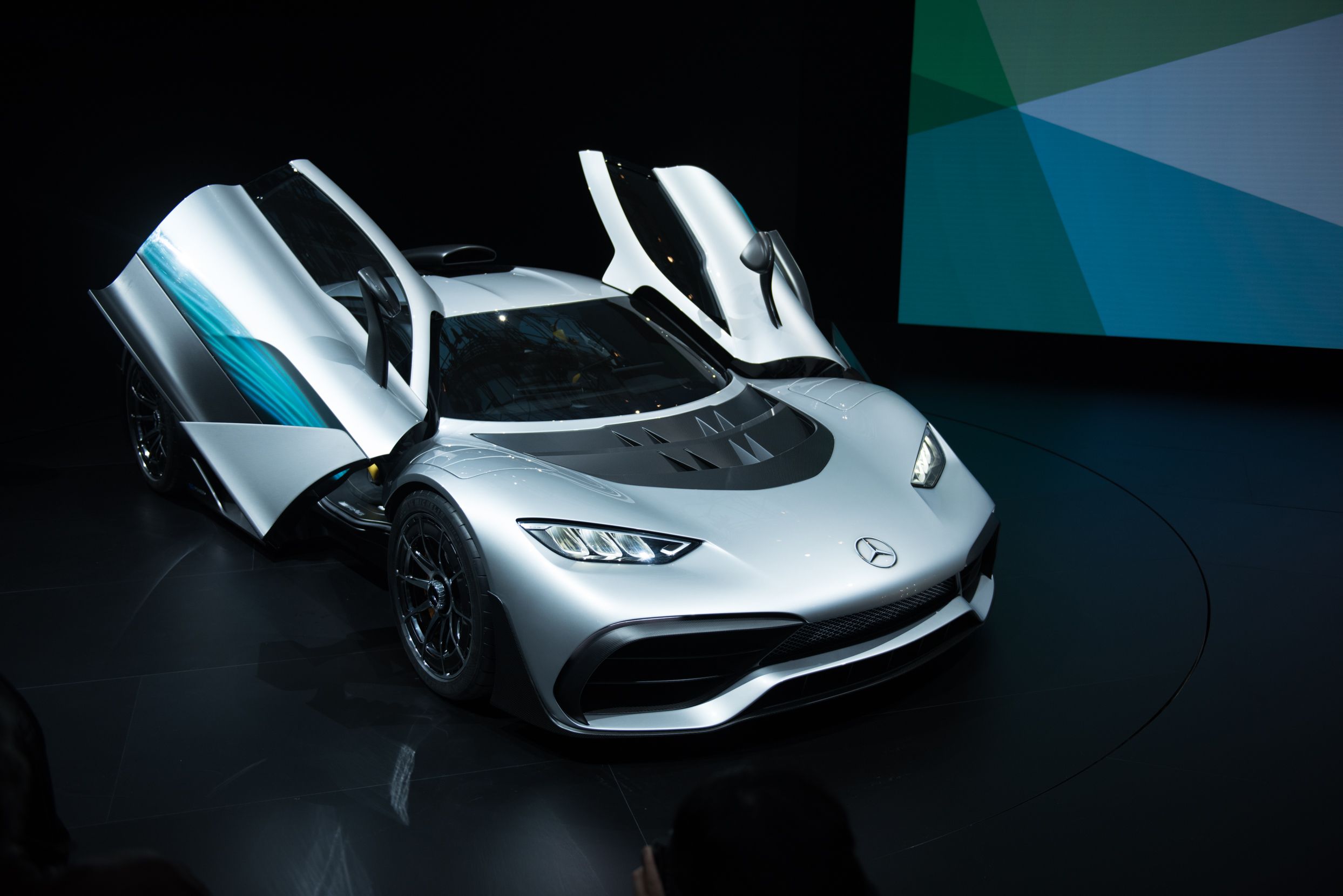
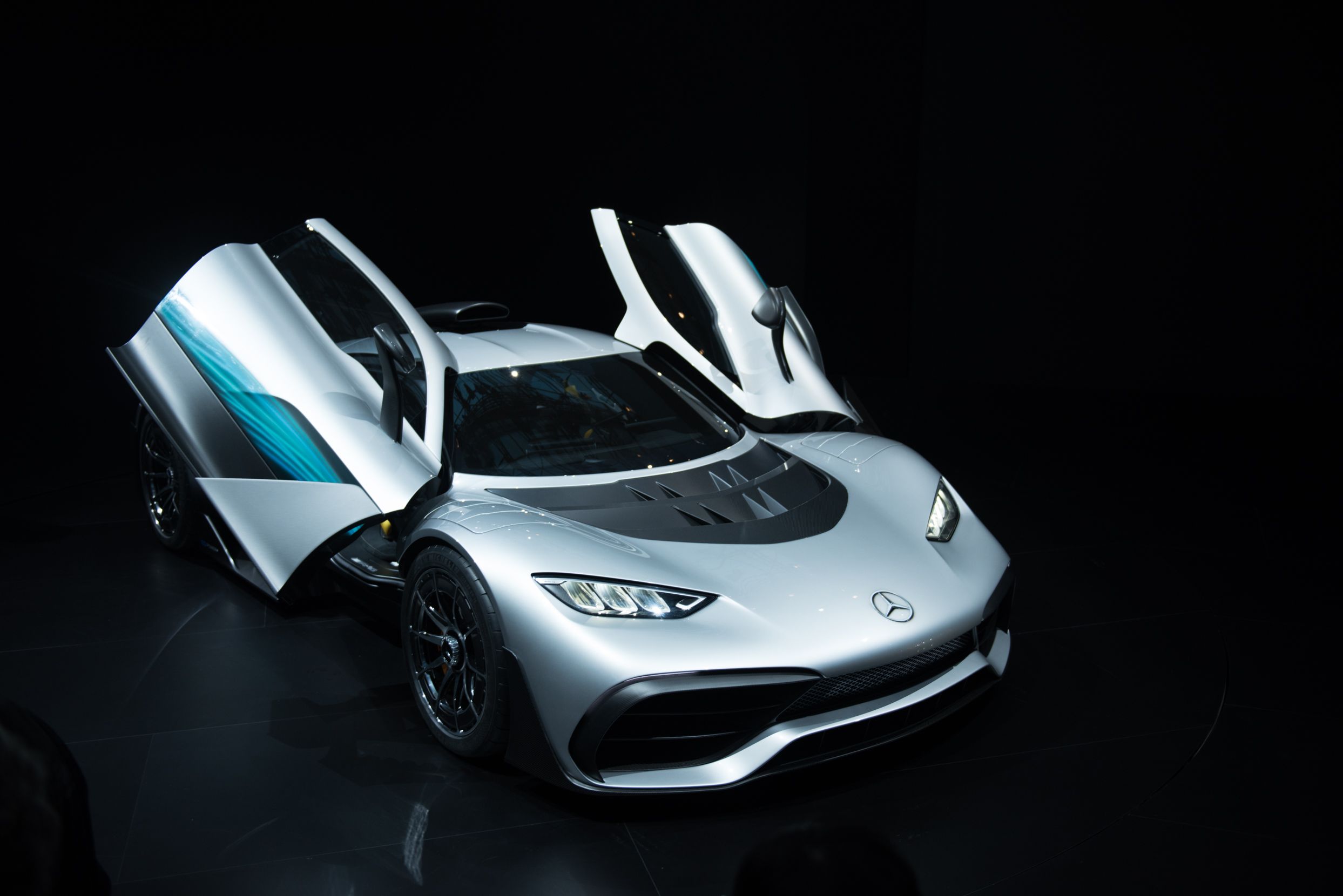
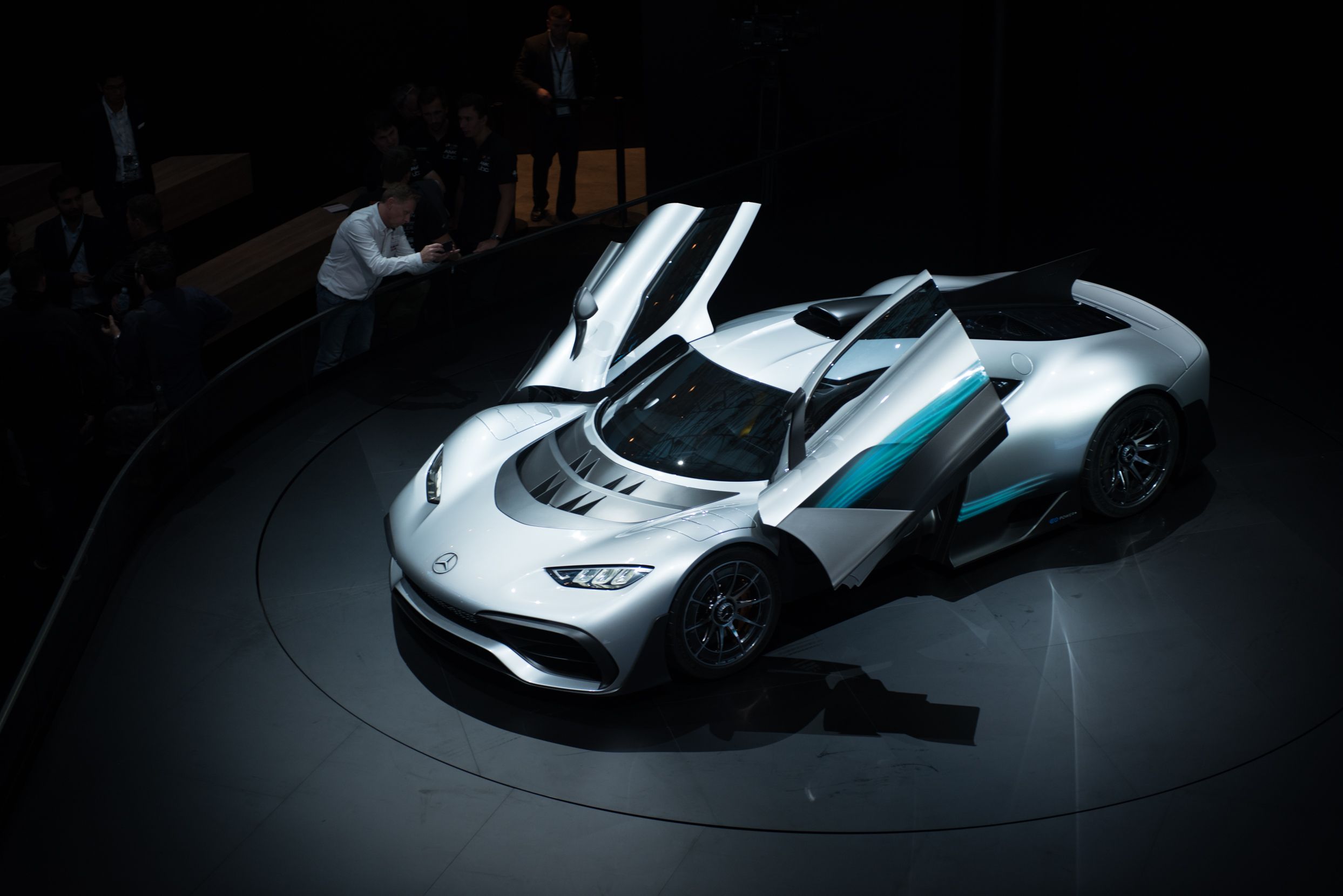
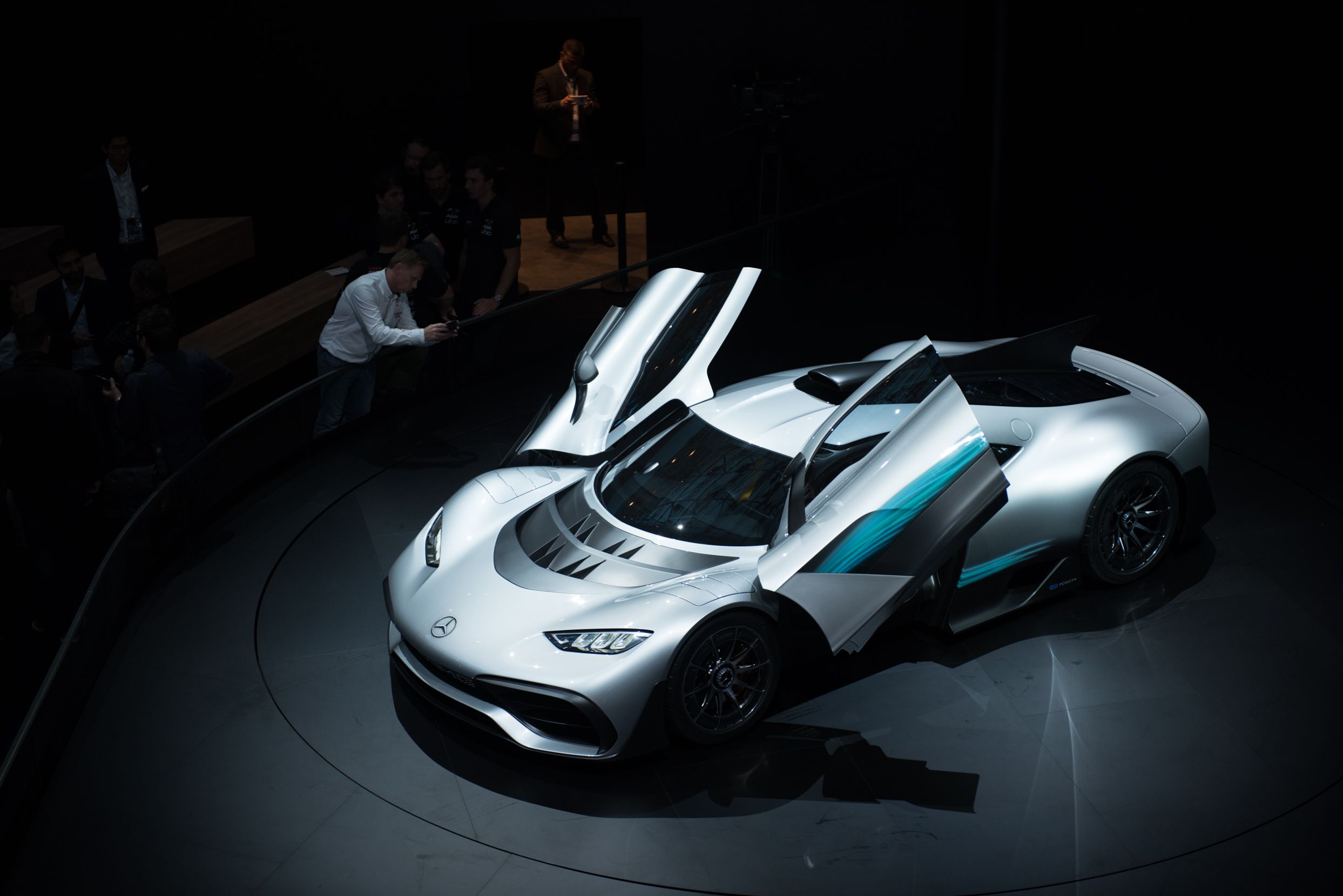

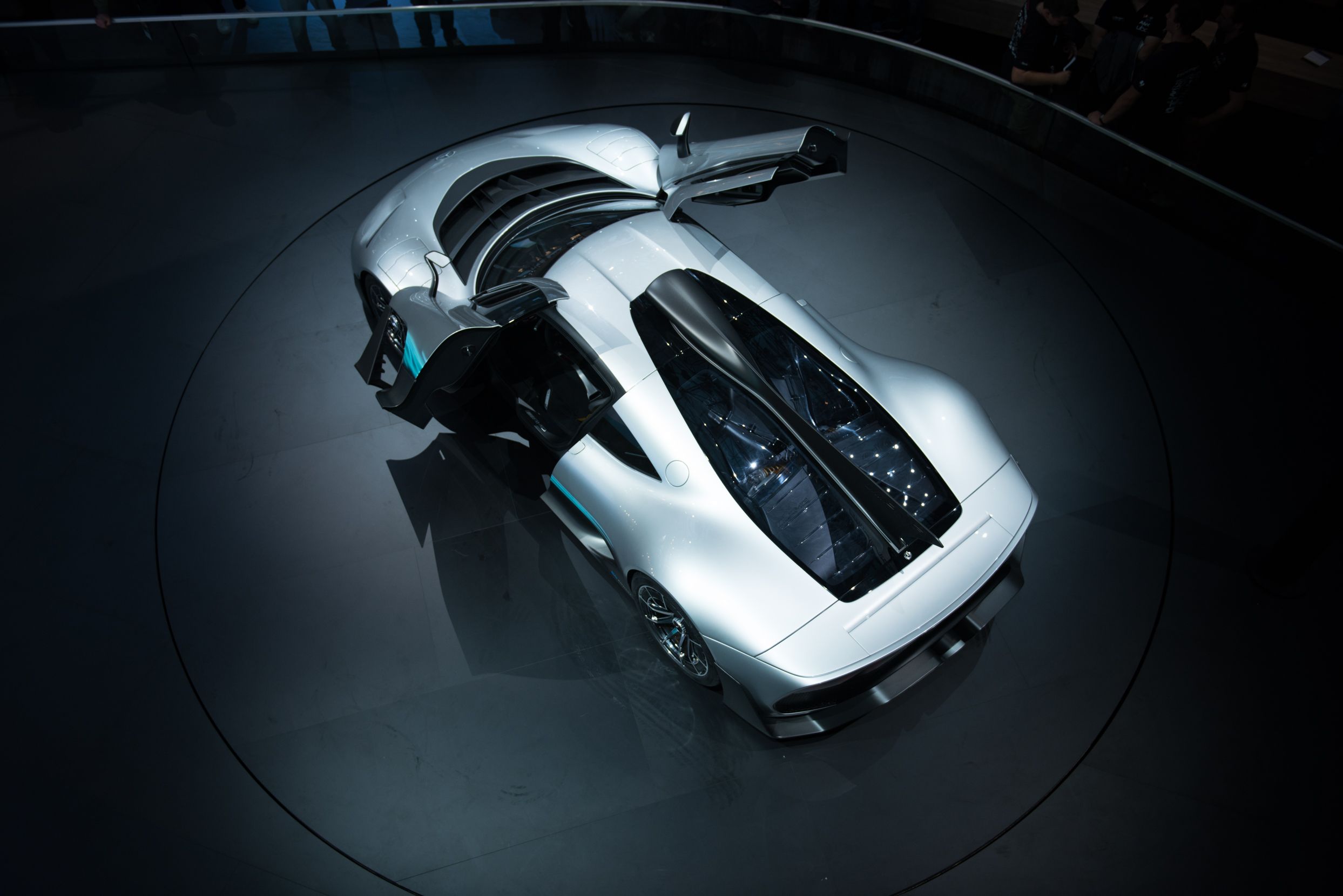
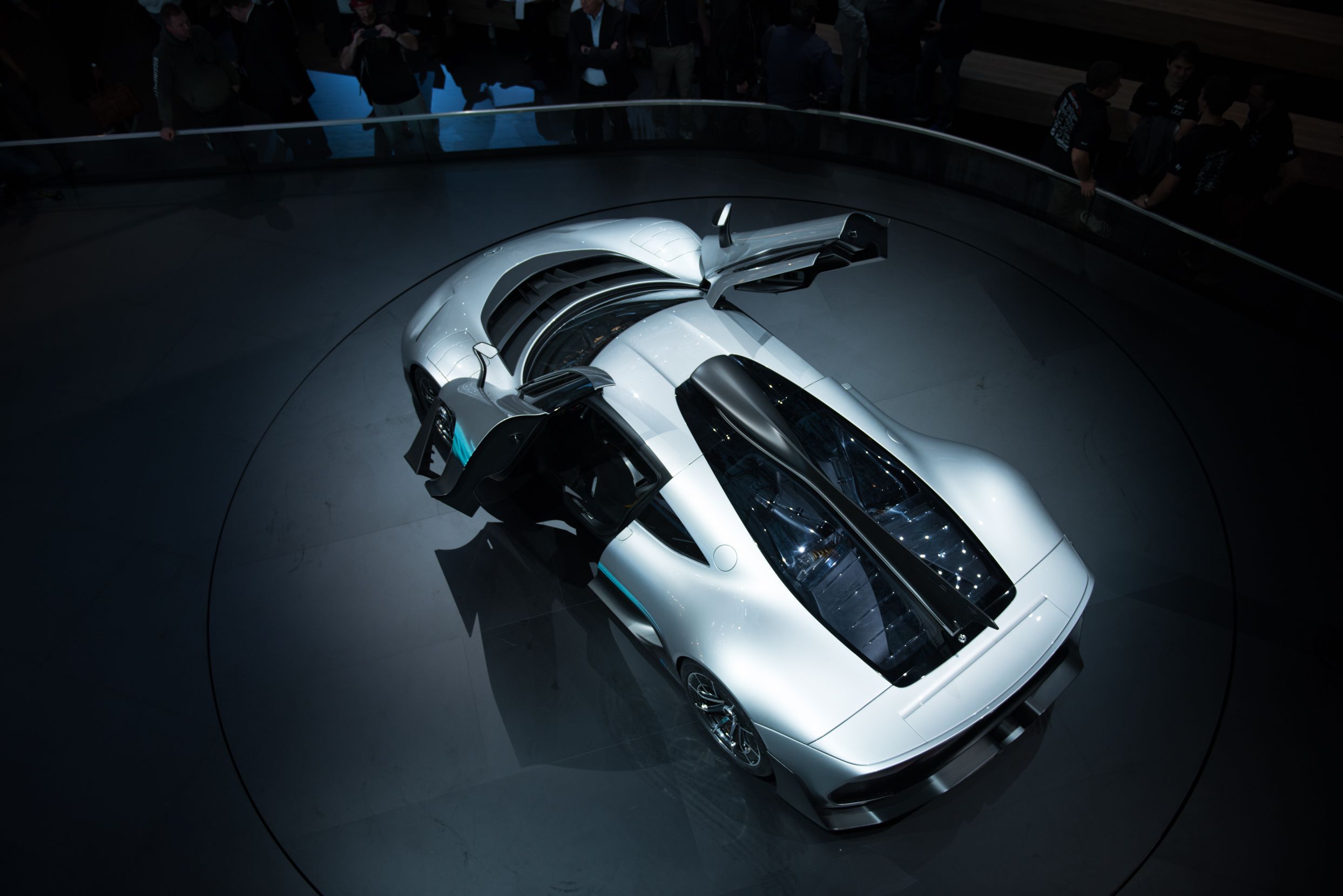
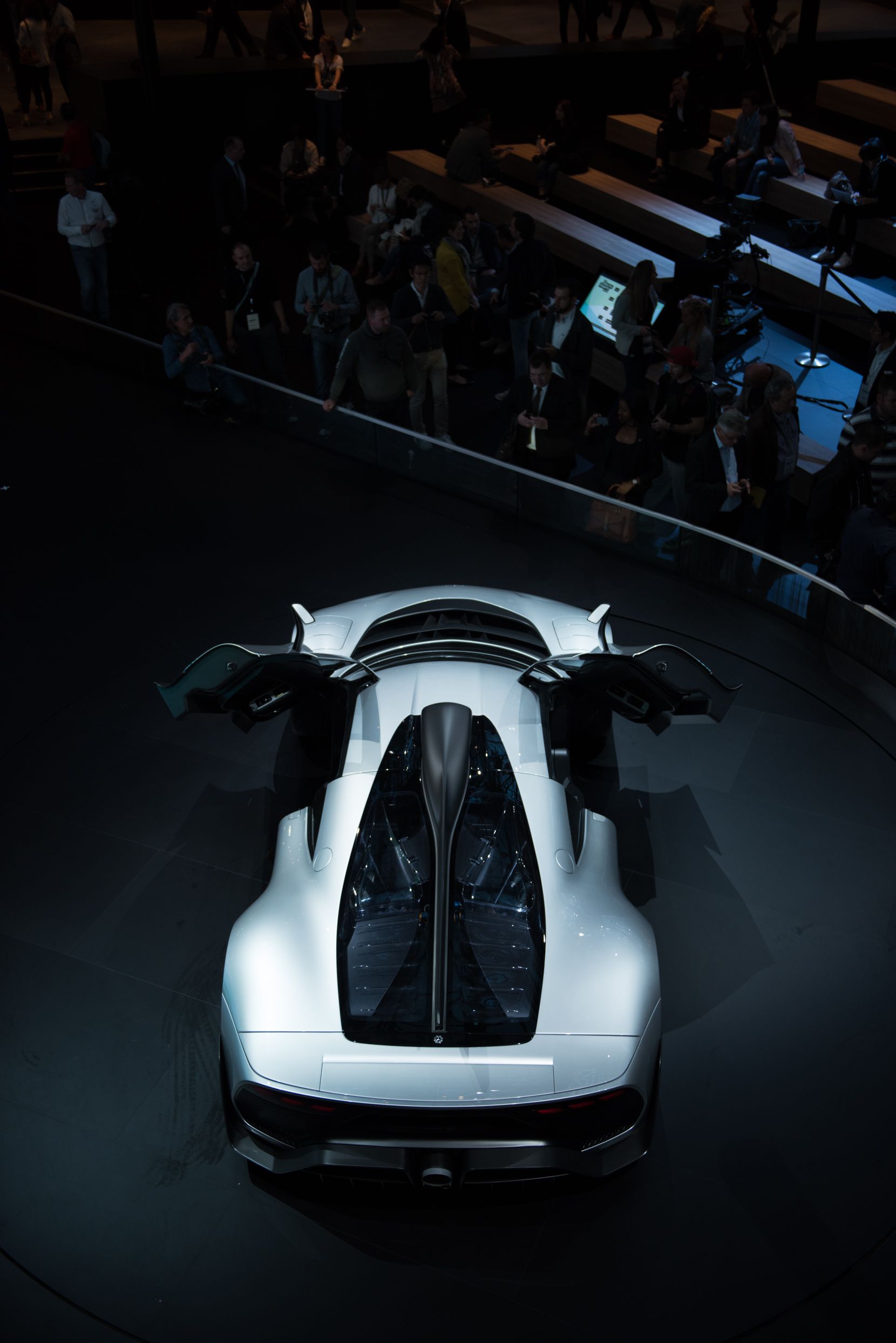
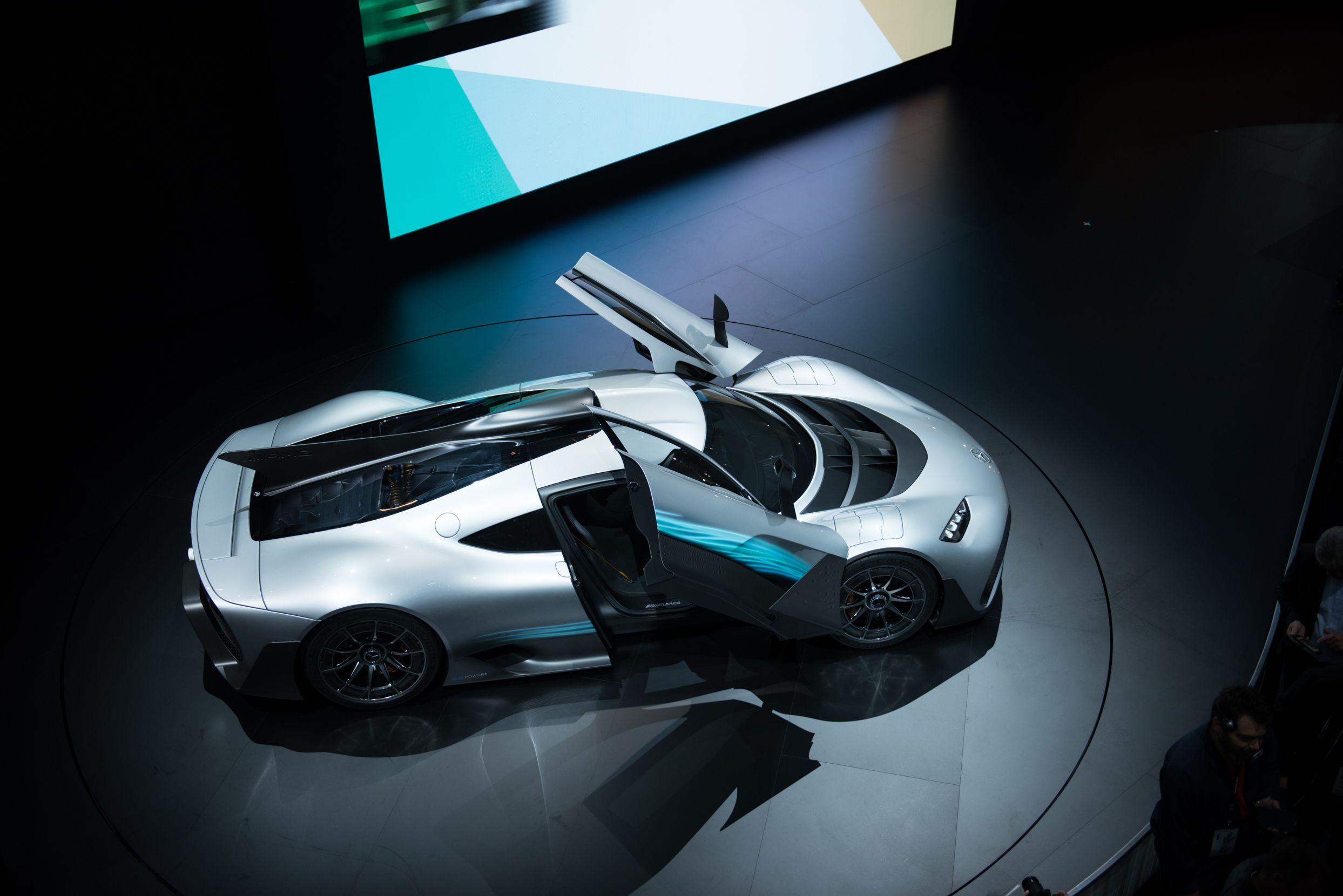
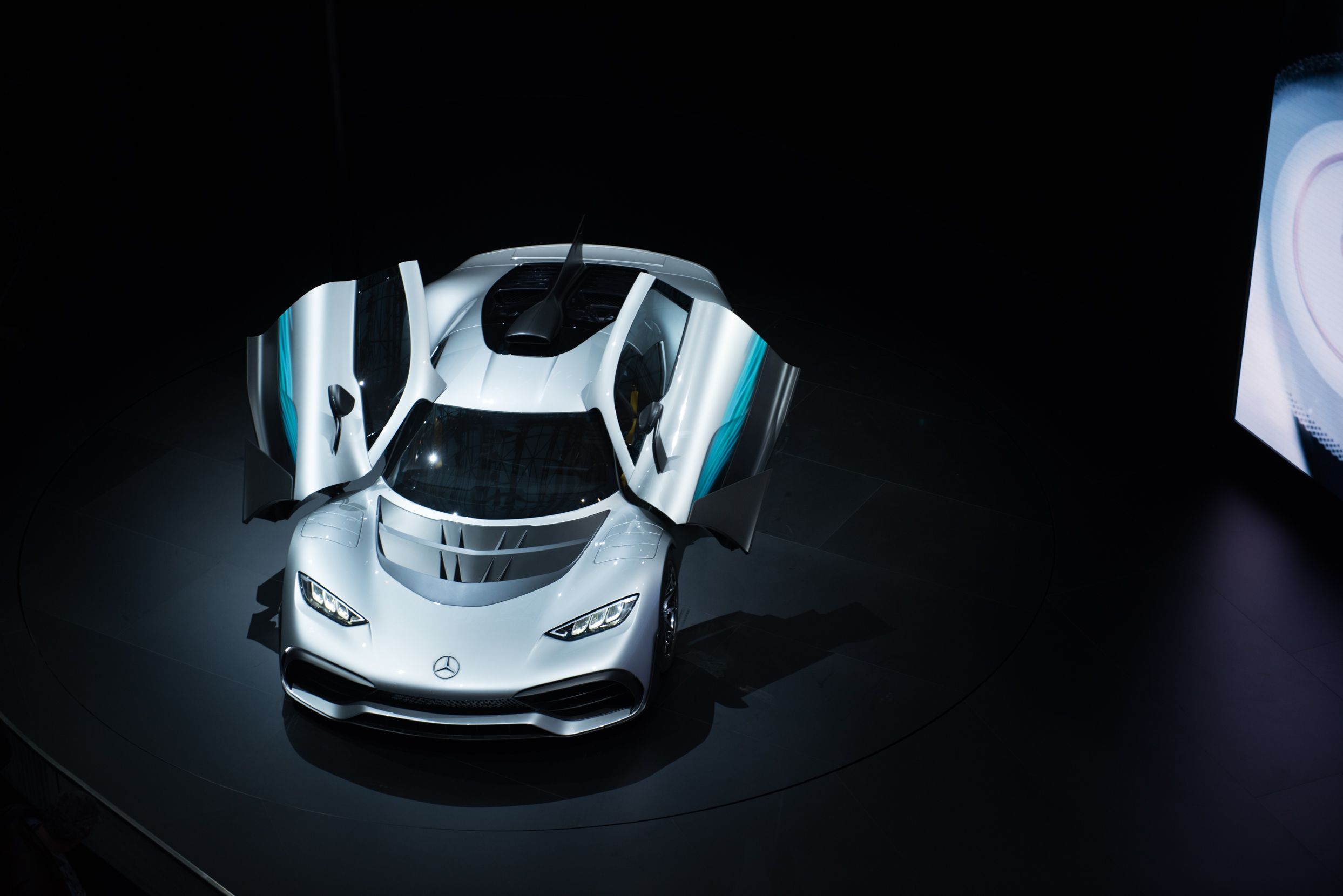

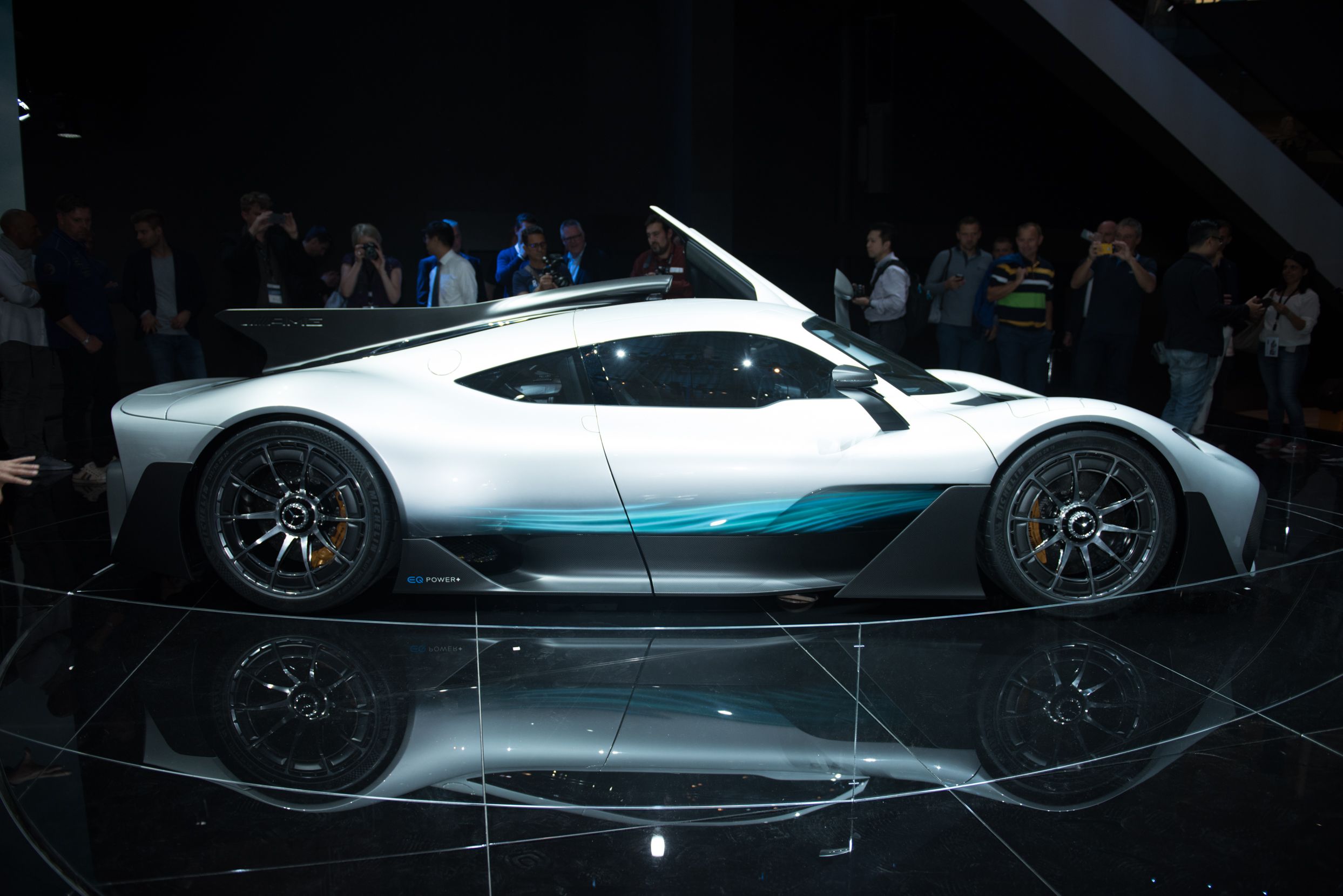
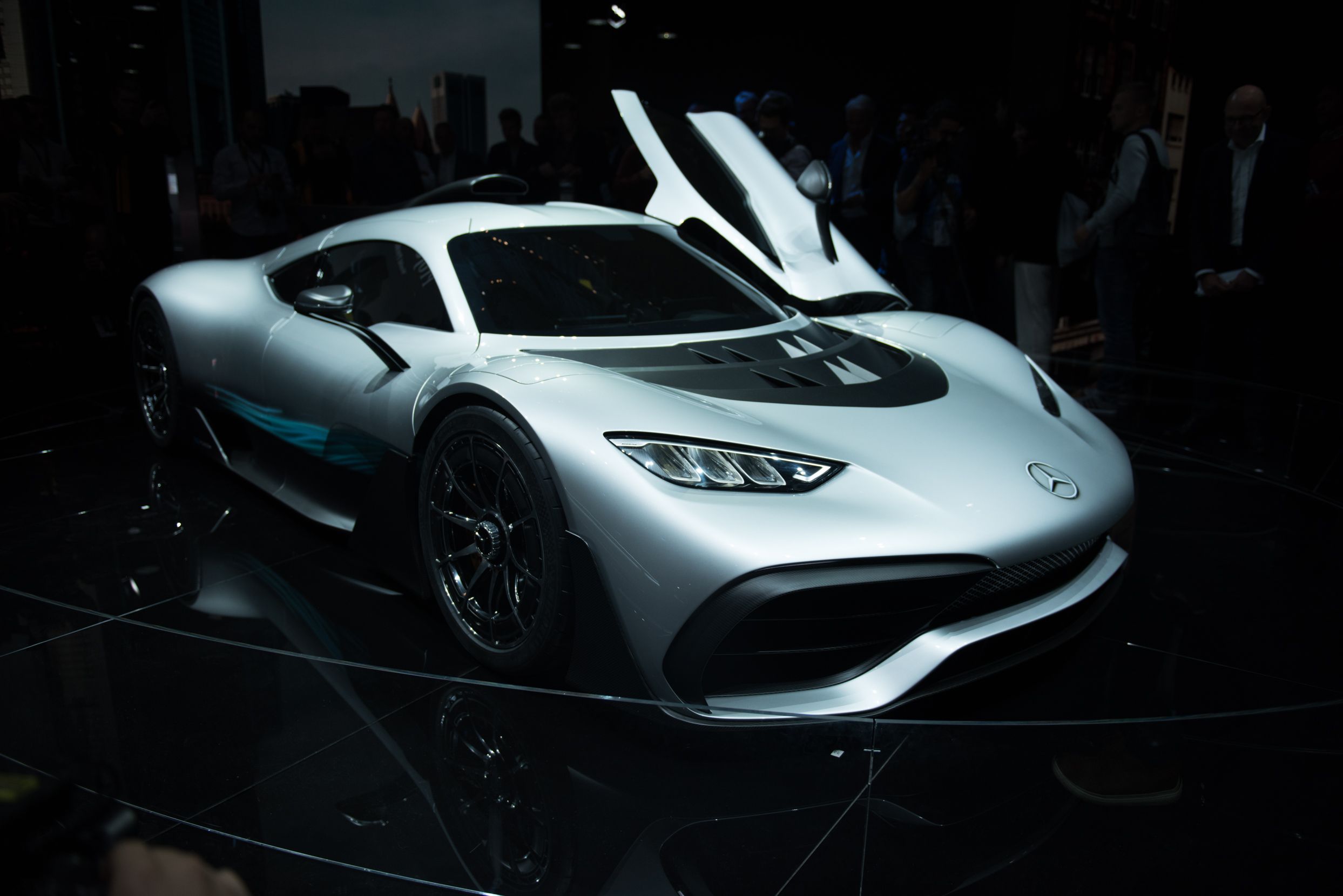
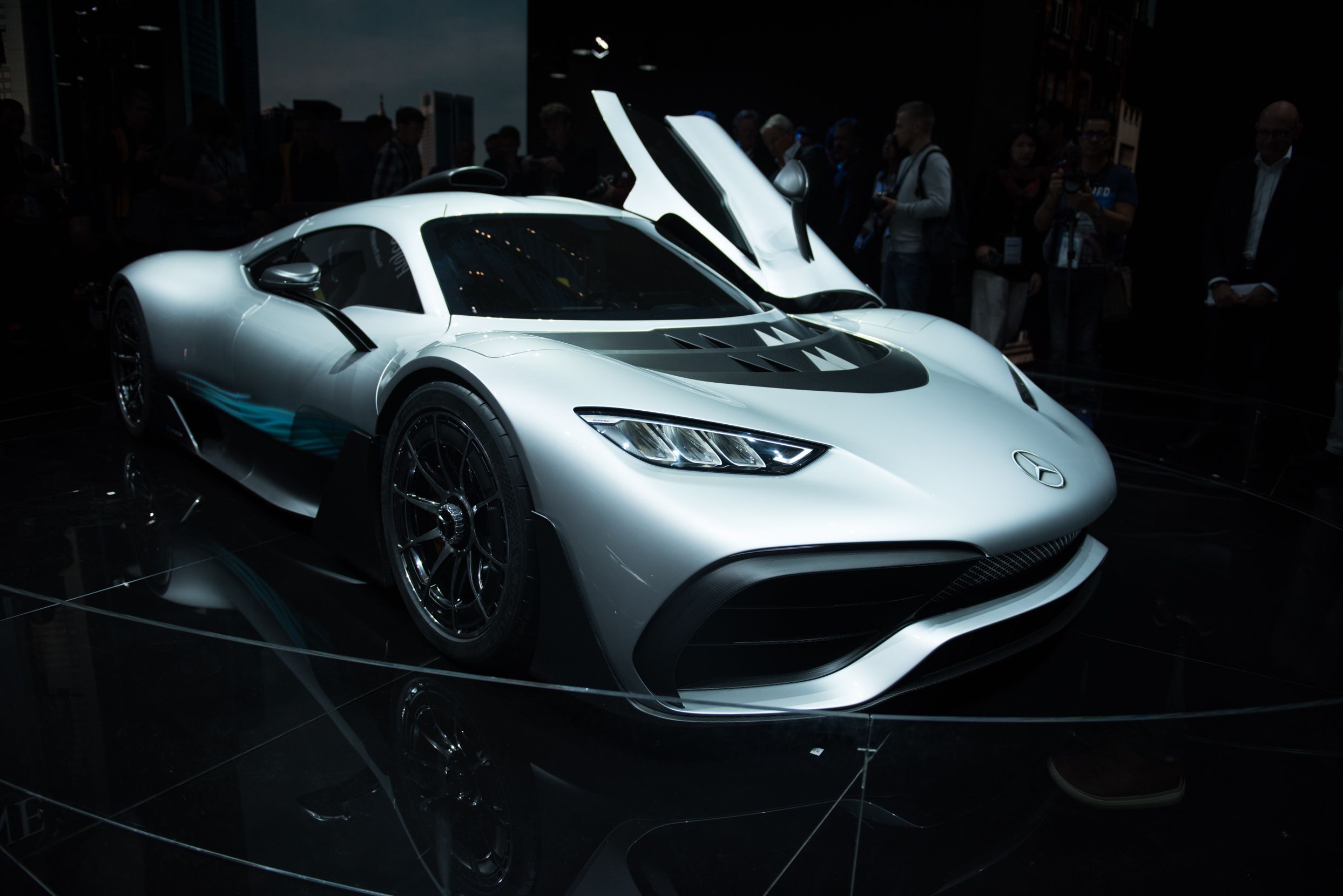



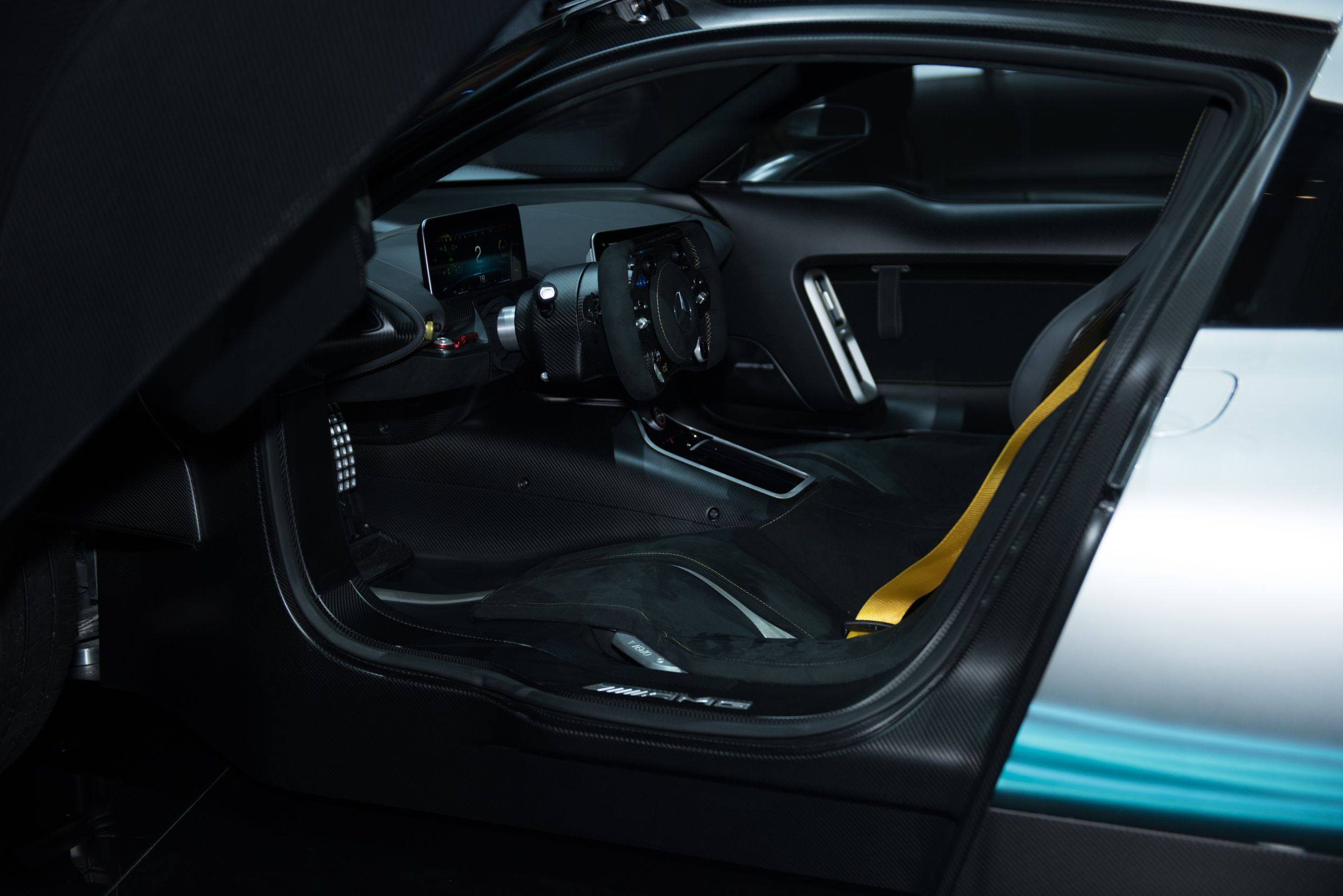
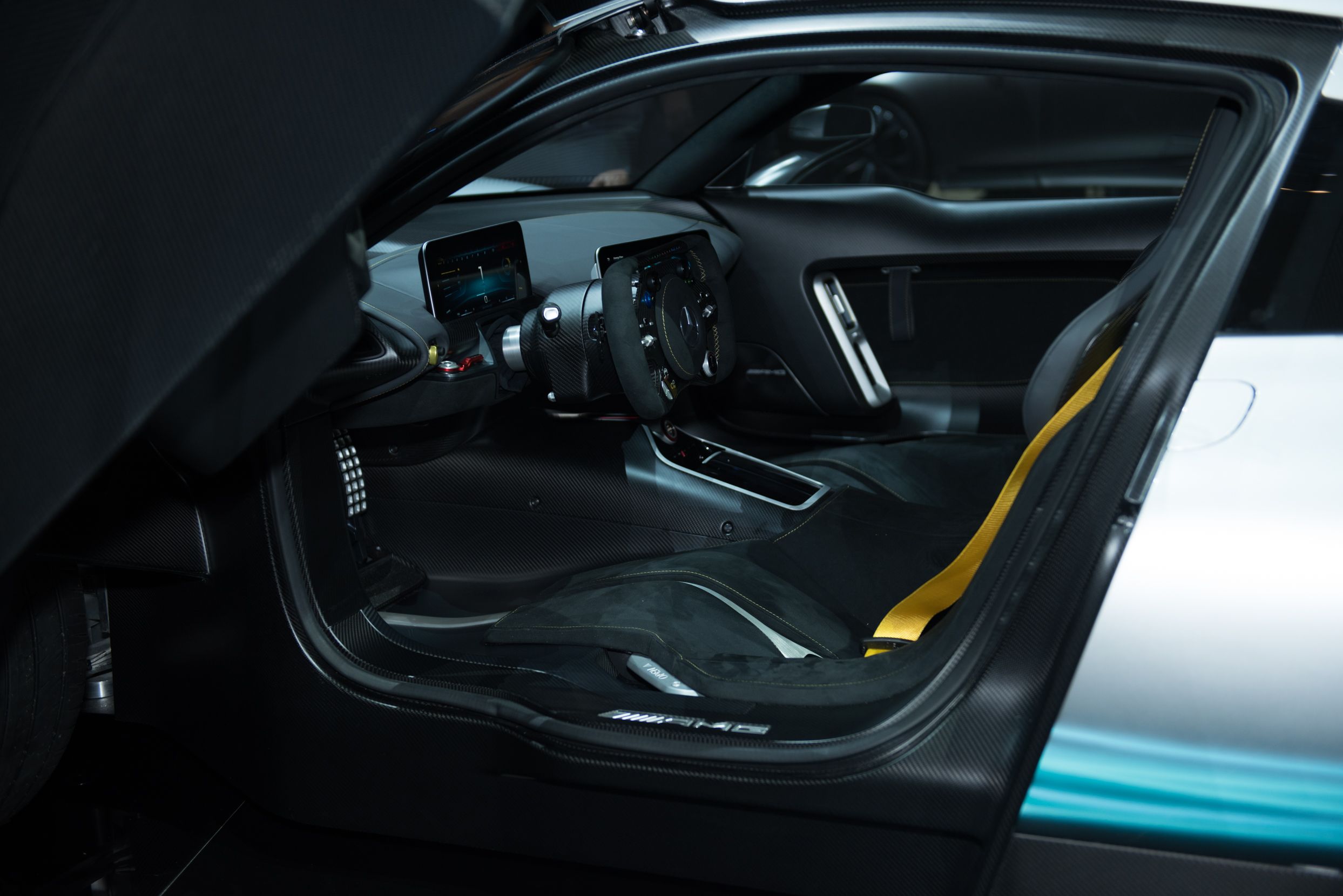
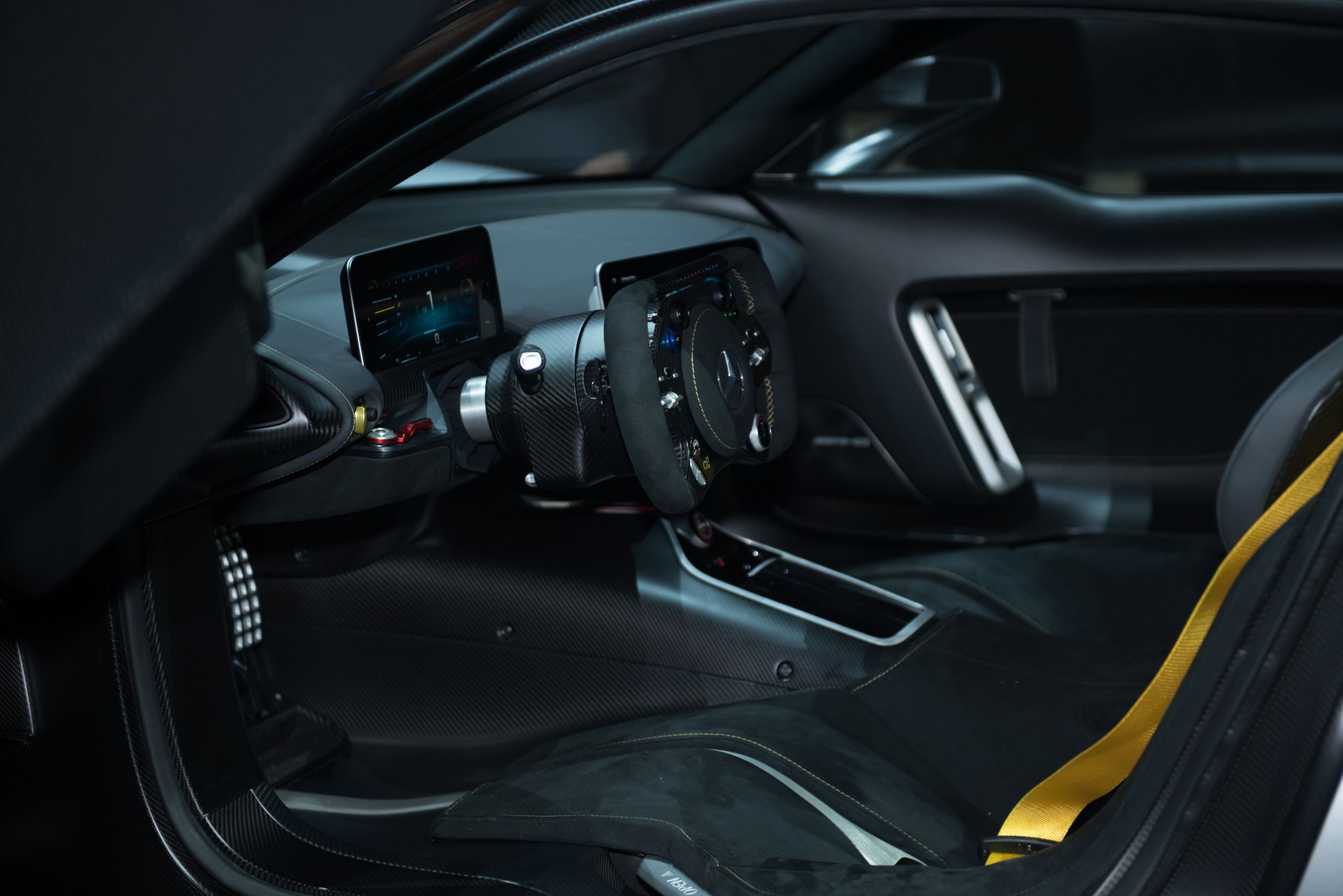
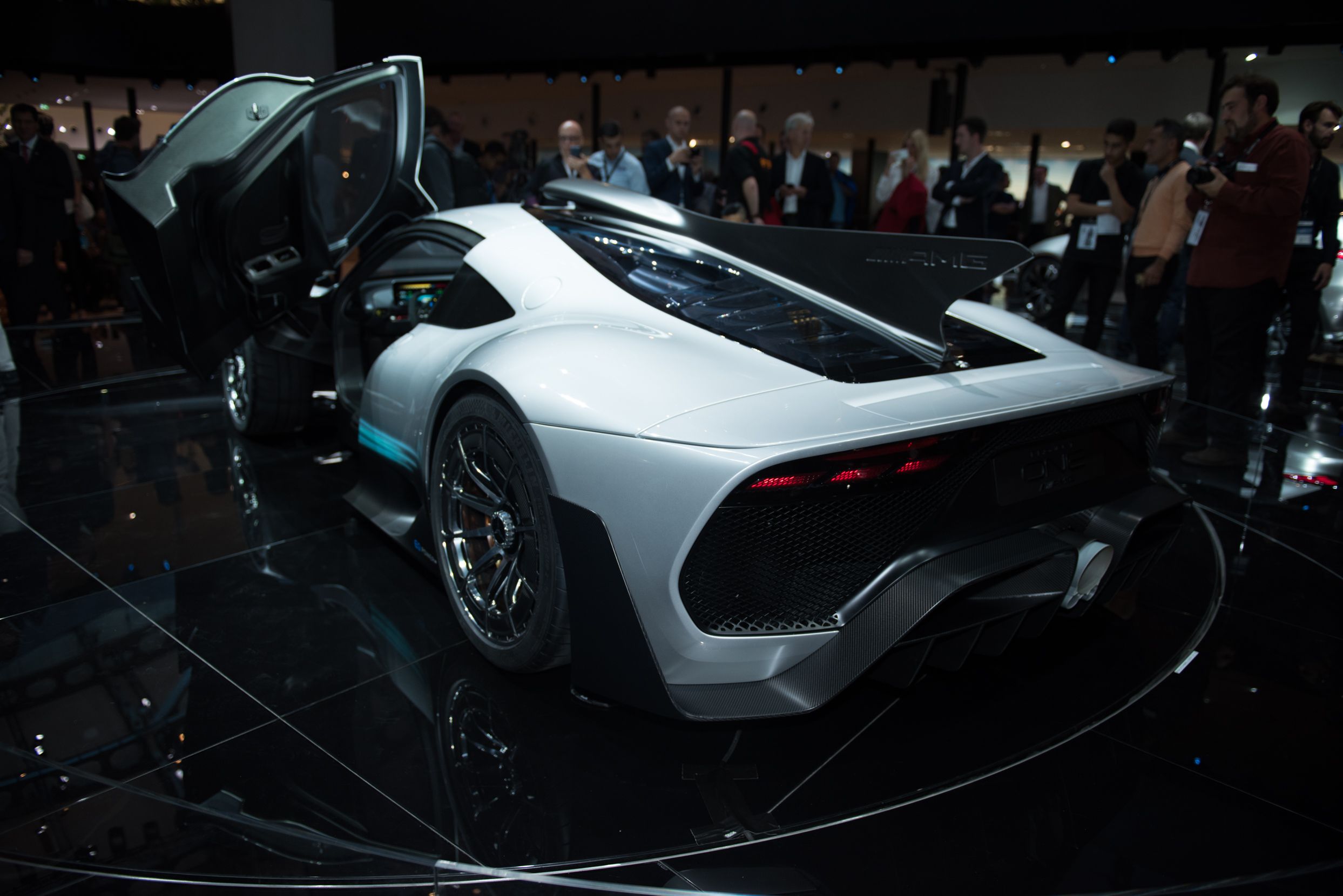
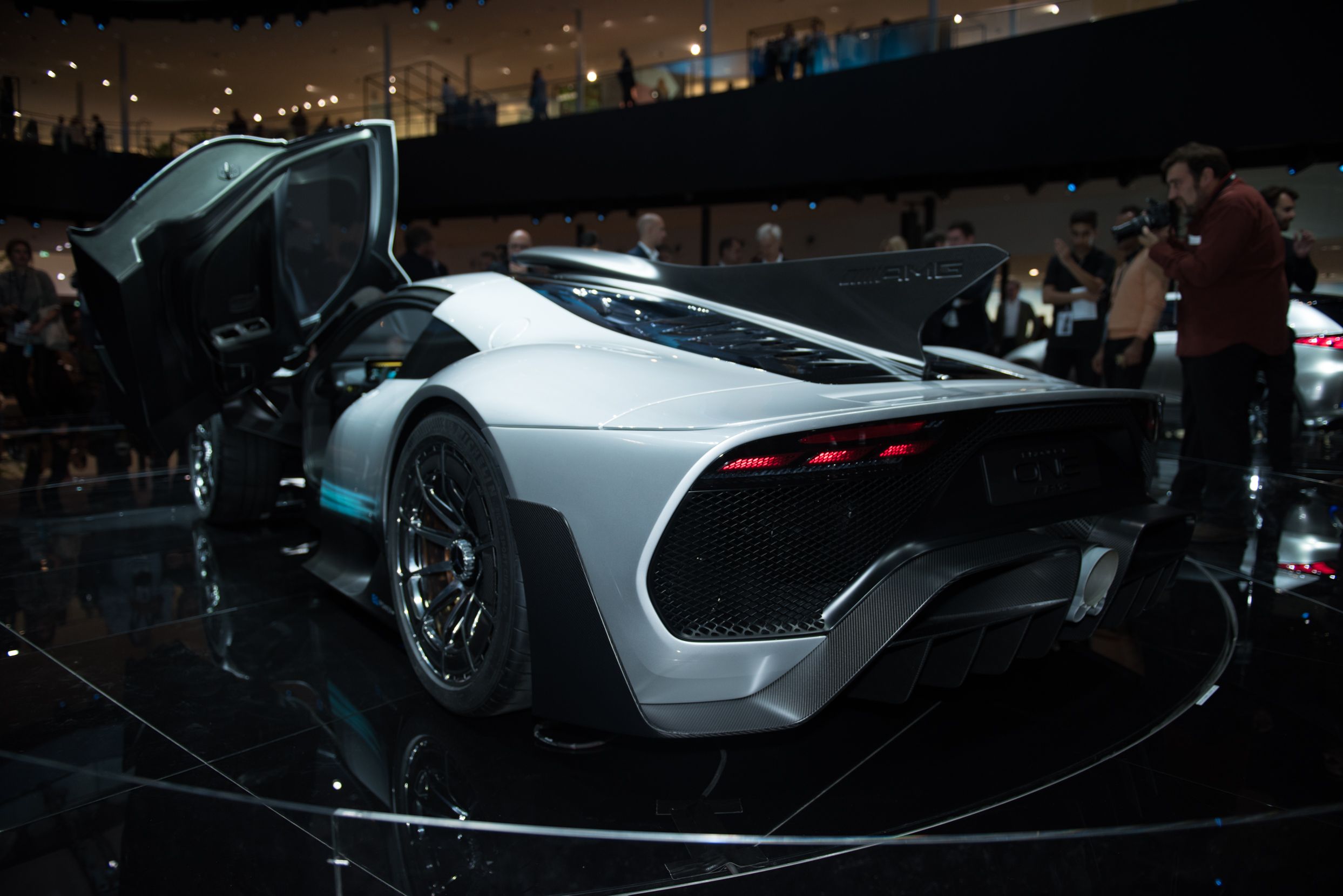
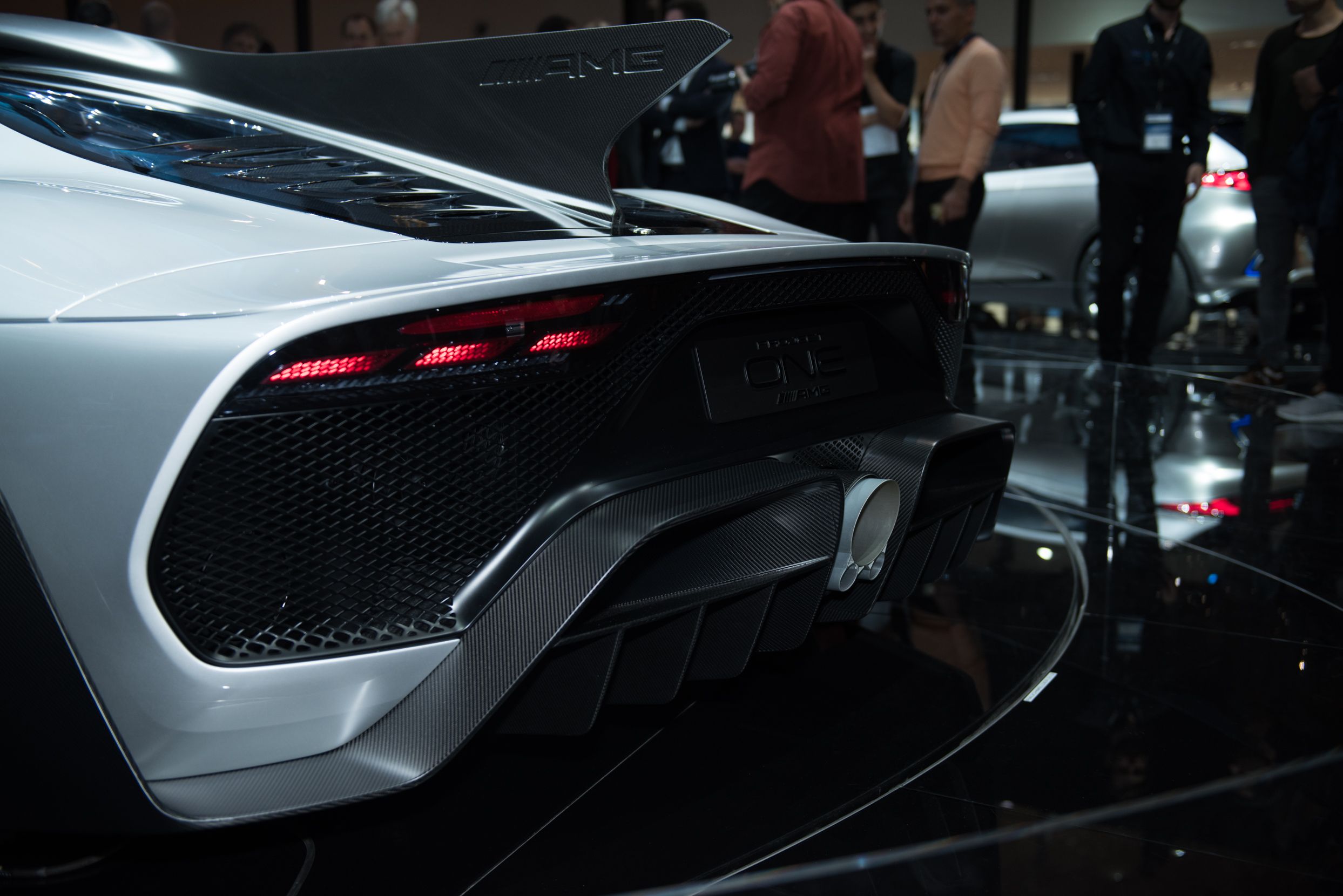
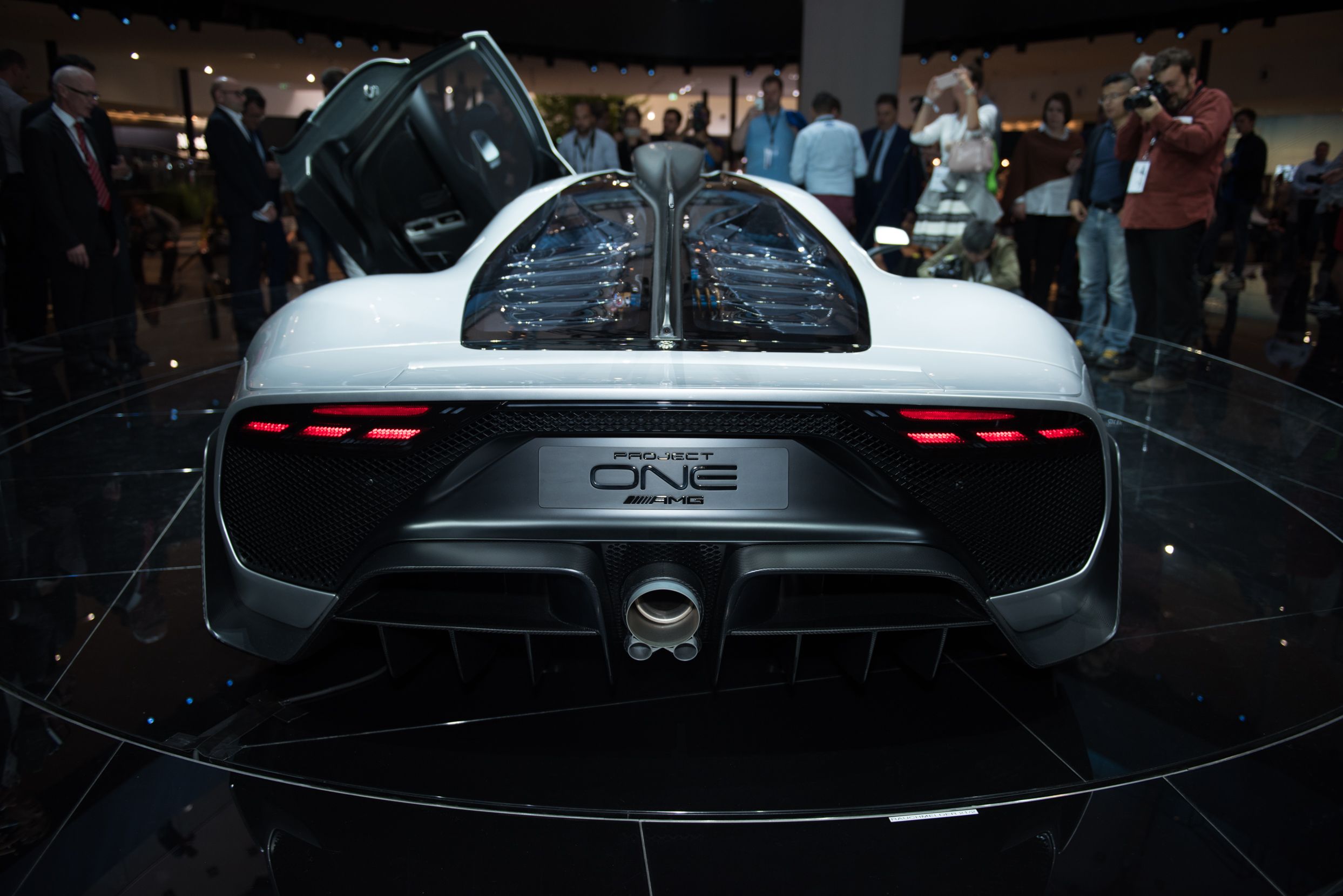
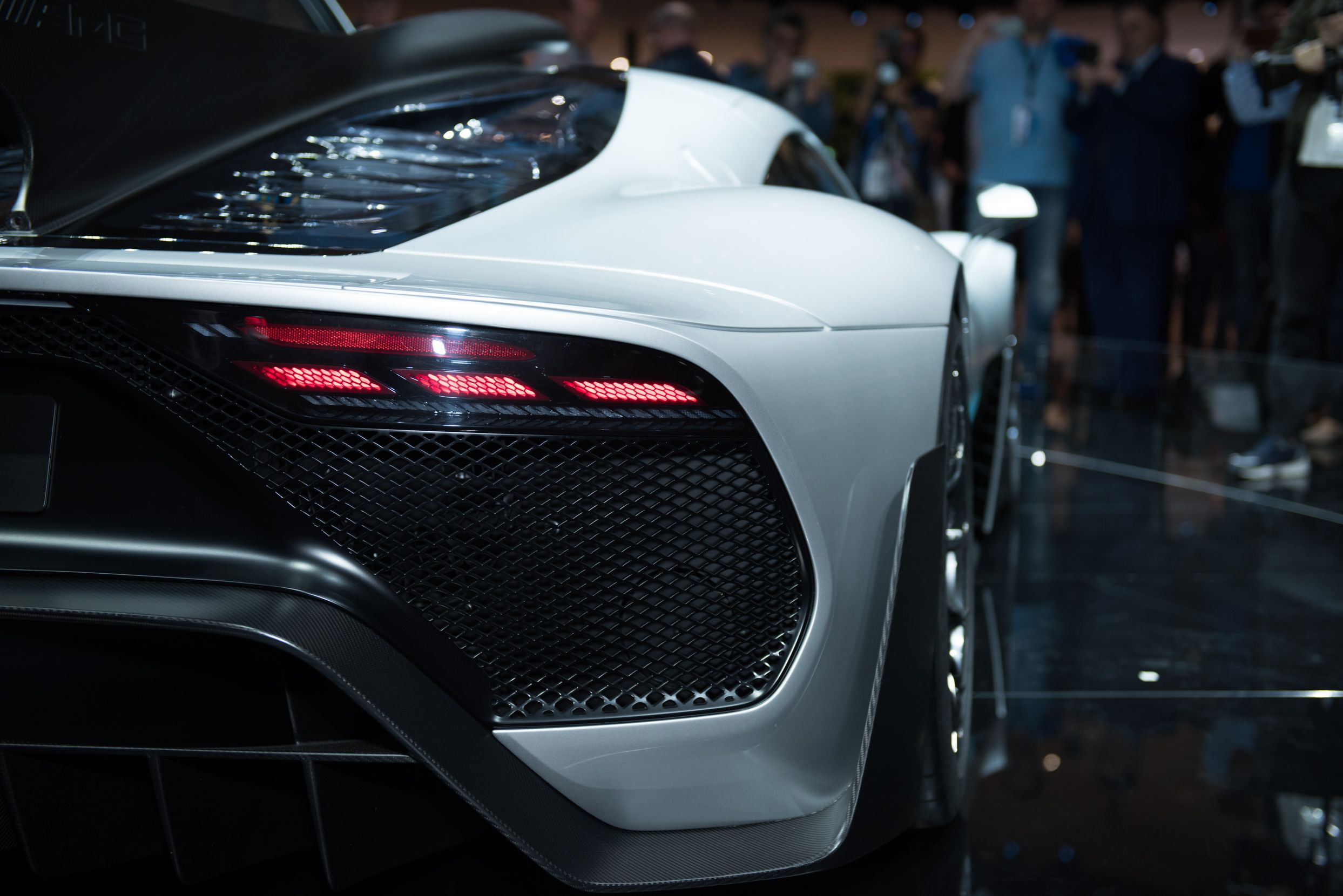
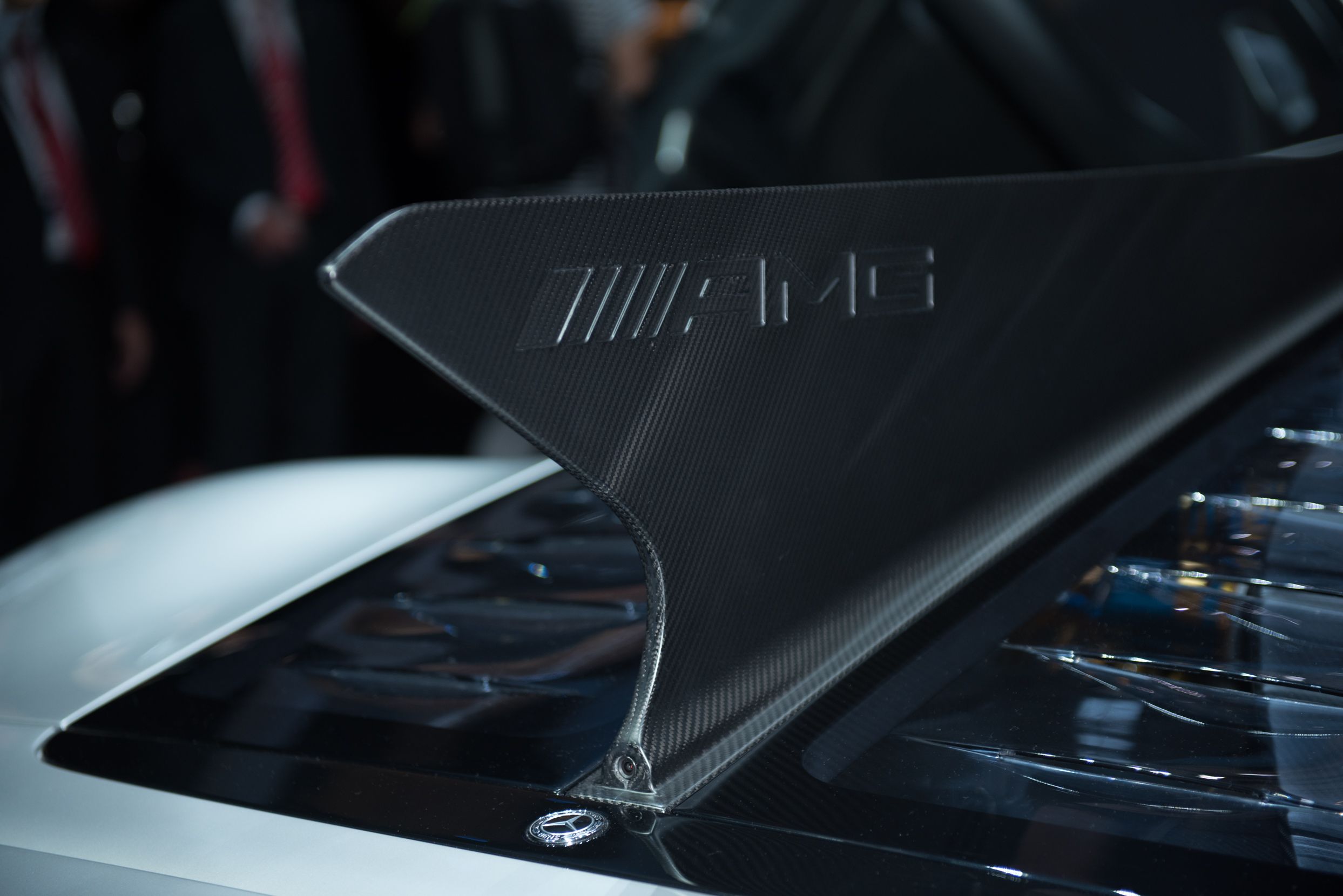
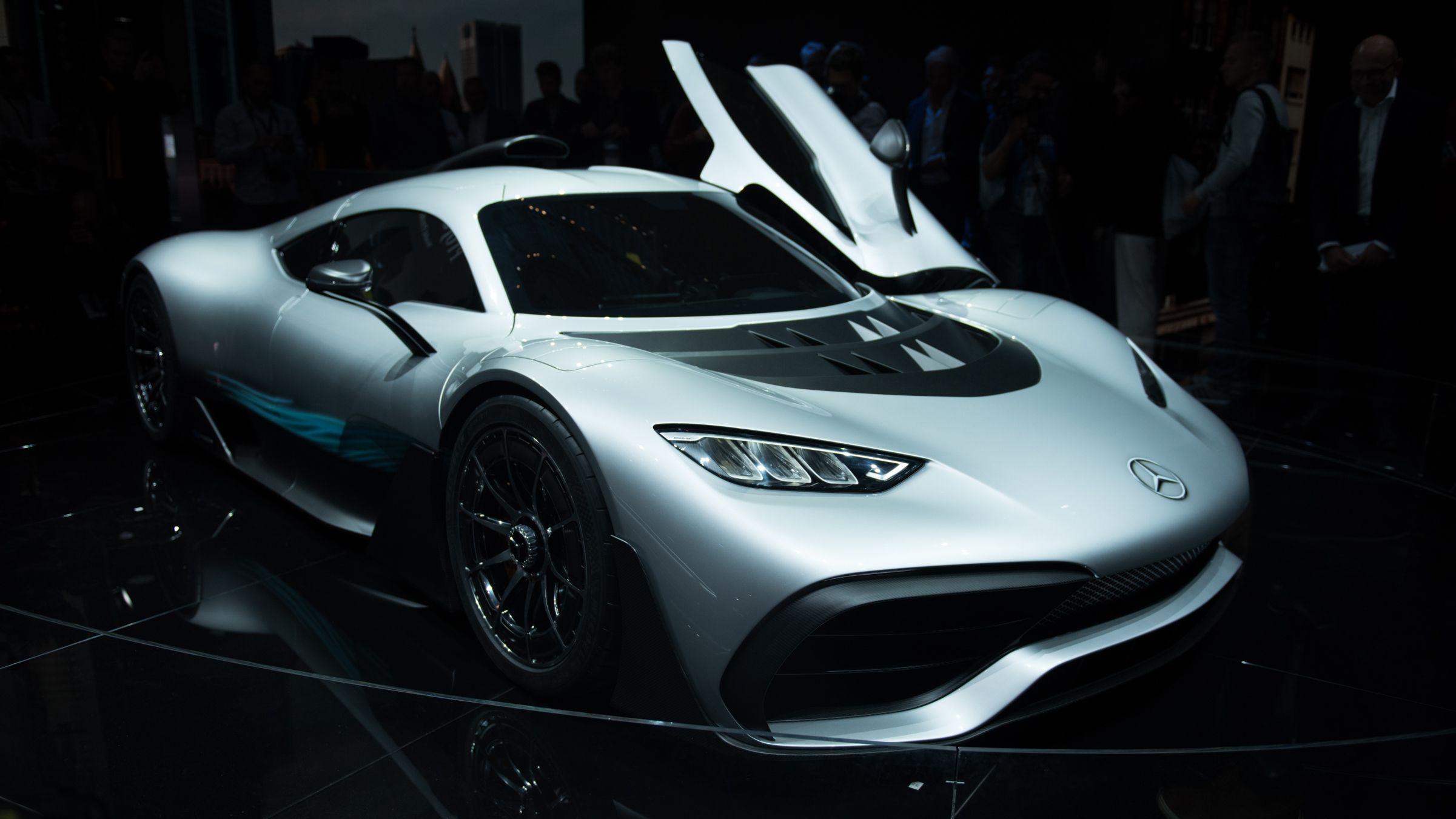



















- Make: Array
- Model: 2020 Mercedes-AMG Project One
- Engine/Motor: V6
- Horsepower: 1000
Exterior

Following a series of murky teaser images, the Project One is now out in its full carbon fiber glory, and our first impressions are… well, mixed. While undoubtedly a striking thing to behold, you’d be hard-pressed to call it “beautiful.” Rather, some of us consider it to be “functionally beautiful,” like a well-engineered tool, as opposed to a traditionally beautiful object like a painting. Others think it’s just downright ugly.

Either way, the Project One was clearly designed for performance over everything else, with aesthetic enhancements only added afterwards. In the nose is a trapezoidal central intake and mesh grille emblazoned with the AMG logo in white, plus the requisite three-pointed Mercedes star in silver higher up on the nose. Flanking the star are flat LED headlights arranged as a trio of squared projectors. Hood-mounted vents near the windshield guide hot air towards the sides of the car and around the cabin, thus allowing colder, fresher air to make its way into the central intake on the roof. Aero enhancements include an auto-extending front splitter, plus active ventilation louvers on the front wheel arches.

Moving rearwards, we find a spherical shape for the greenhouse, on top of which is mounted that oval intake to force feed the engine, looking like it was plucked straight from F1. Behind the intake is a single fin that runs the length of the car’s spine, thus enhancing lateral high-speed stability. Below the greenhouse, we find a dash of green, once again as a nod to the Petronas-sponsored racer.

In the rear, there’s a host of additional aero enhancements, including NACA ducts in place to keep the engine and transmission oil coolers nice and chilly. A two-stage extendible rear spoiler balances the downforce, complemented by a two-section diffuser below. The taillights use three “rhomboid” elements, similar to the headlights, suggestive in shape as the AMG logo. Making the good noise is a central exhaust pipe with two smaller outlets, a design once again used on the F1 car.

In the corners are newly developed 10-spoke wheels made from forged aluminum. These rollers are exclusive to the Project One and get center locks and a radial carbon fiber semi-cover that was aerodynamically optimized to reduce overall drag. The wheels also get three “ventilation slots” to help cool the brakes.
Up front, the wheels are 10 inches wide and 19 inches in diameter, while in the rear, the wheels are a full foot in width and 20 inches in diameter. The tires are Michelin’s Pilot Sport Cup 2 compound, measuring in at 285/35R19 and 335/30R20, front to back, respectively.
With its horizontal front deck line, impressively flared fenders, and roof-mounted intake, the Project One conjures thoughts of Merc’s ‘90s-era racer-turned-street-car, the CLK GTR. Check it out:

Note: Mercedes CLK GTR pictured here.
Obviously, the Project One doesn’t come with open wheels like a true F1 machine, but rather, uses fenders to house the rubber. As a result, the profile and roofline are reminiscent of a Le Mans LMP1 prototype endurance racer.
Note: Le Mans LMP1 prototype racer pictured here.
That all makes sense coming from a company like AMG, as an open-wheel, open-cockpit design would make the Project One much less street friendly, and in all honesty, we can’t really see Mercedes forcing its customers to wear a helmet when driving its halo car.
Furthermore, the design helps substantially when it comes to aerodynamics. All those wings, vortex generators, spoilers, and the like will make the Project One stick with shocking tenacity in the corners, and in this segment, it’ll need all the help it can get.
Interior

Rather than the usual Mercedes gloss, the Project One was “stripped down to the essentials,” all in the name of more performance. “Here too every detail has a function, with nothing included merely for visual reasons,” says Mercedes. Minimalism is the name of the game, and although there’s space for two passengers plus features like ventilation, air conditioning, and power windows included as standard, this thing is still very, very serious.
Passengers settle into bucket seats with adjustable backs, while the pedals and steering column are both adjustable as well. Interestingly, Mercedes says the dash forms an integral structural component of the monocoque. Two high-resolution 10-inch displays, both angled towards the driver, provide visual info, and come equipped with the Comand infotainment system for a bit of digitized support.
Carbon fiber adorns the door panels (real carbon, not the fake stuff), while mounted high is a third screen projecting the digital view captured by a rear-mounted camera. Small storage compartments are scattered here and there for your convenience.

Aesthetically speaking, the Project One interior gets colors and materials inspired by (can you guess?) Merc’s F1 race car. Magma Grey and yellow contrast stitching pervade throughout, while the seats are covered in a microfiber that helps grip passengers and prevent any sliding about. A little Nappa leather was added for a high-quality finish. Gullwing doors are used to get in and out, a nod to the 300 SL of the past and the SLS of the present, and a fittingly dramatic form of ingress and egress for a machine such as this.
Put into perspective, the Project One isn’t the most comfortable thing on the road, but it isn’t a total dungeon, either. Rather, we see it as a back-to-basics sports car, without the frills you see on most AMG-branded offerings. What’s more, in terms of harshness and noise, we expect the Project One to be relatively livable on the street, without the break-your-back attitude of most racers designed for the road.
Also, as a side note, top marks to anyone crazy enough to actually drive this around on the street without a full police escort. We salute you – garage queens are far too common these days.
Drivetrain

Before we dive into the technical specs, let’s just get right to the important numbers. The Mercedes-AMG Project One is powered by a mid-mounted, turbocharged, hybrid gasoline-electric engine juiced by no less than four electric motors. Peak output is rated at over 1,000 horsepower, while top speed clocks in at 217 mph. Launch it in the Race Start mode, and you’ll be doing 112 mph from a dig (0 to 200 km/h) in less than six seconds.
Without a doubt, there’s probably more than a few of you out there unimpressed by those specs. After all, when you’ve got something like the Bugatti Chiron claiming 261 mph at the top end, 217 mph could be seen as a bit of a let down.
But here’s the thing – the Project One isn’t about top speed. The big difference here is that the Merc was inspired by Formula 1 technology, a sport wherein top speed plays second fiddle to grip, acceleration, and aerodynamics. And we’ll have to wait for the inevitable track test, but something tells me the Merc is what you want if lap times are a major concern, not the Bugatti.
With that out of the way, let’s get to the specs, shall we?
Let’s start with the gas engine. Like Merc’s F1 car, the powertrain starts with a 1.6-liter V-6 with direct injection, overhead cams driven by spur gears, and pneumatic valve springs. The lump will even get built in the same factory as the competition engine. Redline is set at 11,000 rpm, which is several thousand rpm less than the F1 car, but it makes sense when considering the Project One must meet the demands of low octane fuel and similar daily driver constraints. And besides, 11,000 rpm is still mighty impressive, don’t you think? Yeah, we can’t wait to hear it either.
Incredibly, Merc claims a thermal efficiency of 40 percent for the ICE, which is frankly pretty insane for any car, let alone a fire-breathing hypercar. Basically, 40 percent thermal efficiency is the kind of number you’d expect from a Prius in a lab. Good stuff.
Now to those electric motors. As previously stated, there’s four of ‘em total – one for the turbo, one for the internal combustion engine’s crankcase, and two for the front axle, with one motor per wheel. Each of the electric motors in front can spin up to 50,000 rpm, a big improvement over the majority of electric motors in use in automotive applications these days (Merc says the average is about 20,000 rpm).

Speaking of high rpm, even the turbo is worthy of note. In designing the snail, Merc separated the compressor and exhaust gas turbine such that they were optimally placed on the intake and exhaust sides of the V-6, respectively. Connected by a shaft, one of the electric motors is used to spin the compressor, thus creating on-demand boost. The motor also produces upwards of 90 kW of power all on its own, and can spin the turbo up to 100,000 rpm without any assistance from the exhaust gasses. Those of you familiar with F1 tech will recognize this as the Motor Generator Unit Heat (or MGU-H), and the ultimate result is razor-sharp throttle response (Merc says it’s even better than a naturally aspirated V-8). What’s more, the set-up helps to generate surplus electricity from the exhaust gasses, which is then either stored in the battery pack or sent to the motor in the crankshaft for additional power.
While we’re on the topic, the motor in the crankshaft produces 120 kW, and links to crankshaft via a spur gear. In F1 parlance, this is the Motor Generator Unit Kinetic, or MGU-K.

Moving to the electrically motivated front axle, Mercedes says both of the nose-mounted electric motors can generate 120 kW of power, which is sent to the wheels by way of a reduction gear. Yep, that’s well over a Subaru WRX STI’s worth of all-electric motivation just for the front wheels. These motors also enable individual acceleration and braking per wheel, thus enhancing torque vectoring capabilities and overall handling as a result. Furthermore, upwards of 80 percent of braking energy is reclaimed under normal use, enhancing efficiency even further.
Quick side note – while AWD is another clear break from F1 tradition, it makes a whole lot of sense in a car like this. After all, 1,000 horsepower in the hands of a novice is a daunting proposition, so you might as well give ‘em all the traction you possibly can.
Storing all those electrons is a lithium-ion battery pack, offering a similar arrangement and cooling system as Merc’s F1 car. However, the Project One comes equipped with more batteries than the racing car, giving it more all-electric power and practicality as a result.
Multiple drive modes help to maximize the efficacy of available energy, ranging between an efficient all-electric mode, to maximum power mode. The onboard computer will even automatically switch between all-electric and gas power depending on driver inputs.
Finally, an all-new, hydraulically activated eight-speed automatic transmission handles the cog swaps. Developed specifically for the Project One, this gearbox offers both an automatic mode, or if more control is desired, a manual mode via steering wheel shift paddles.
Drivetrain Specifications
|
Rear-wheel drive |
1.6-liter V6 with direct injection, four valves per cylinder, four overhead camshafts and electrically boosted single turbocharger, electric motor connected to the crankshaft |
|
Engine capacity |
1,600 cc |
|
Rear-wheel drive output |
> 500 kW |
|
Front-wheel drive output |
2 x 120 kW |
|
System output |
> 740 kW (> 1,000 hp) |
|
Electric range |
25 km |
|
Drive system |
Variable AMG Performance 4MATIC+ all-wheel drive with hybrid-drive rear axle, electrically driven front axle and torque vectoring |
|
Transmission |
Automated AMG SPEEDSHIFT 8-speed manual transmission |
|
Acceleration 0-200 km/h |
< 6 secs. |
|
Top speed |
> 350 km/h (217 mph) |
Suspension And Chassis

Unsurprisingly, the Mercedes-AMG Project one utilizes a carbon fiber monocoque chassis, mating low weight with high rigidity. The engine and transmission are both integrated as load-bearing components in the chassis, and act to support the rear suspension in keeping the tail in line. A multi-link set-up with pushrods is used in all four corners, with the springs and dampers replacing a traditional tubular cross member.
On the digital side of things, the suspension system integrates with the AWD, system, torque vectoring system, ABS, multi-stage ESP, and various other onboard tech for a comprehensive, holistic approach to going really ‘effin fast.
Hauling it down are lightweight ceramic brakes, which reduce unsprung mass and offer high performance even after repeated hard stops. The phrase “AMG Carbon Ceramic” is branded onto the calipers, just in case you forget.
Prices

The Mercedes-AMG Project One costs $2.7 million a pop. Production is limited to 275 units total, 50 of which will head stateside, and so far, just about every unit is already spoken for.
Competition
Aston Martin Valkyrie
If you’re looking for F1-style performance for the street, then Aston Martin has an alternative to the Project One. Teaming up with the championship-winning Red Bull Racing team and RBR’s chief technical officer Adrian Newey, Aston is offering up this, the AM-RB 001, matching the Merc blow for blow in terms of motorsport-style speed. Making it go is a naturally aspirated V-12 powerplant pumping out enough ponies to match the Merc’s insane speed potential. Look for it to drop next year.
Read the full review on the Aston Martin Valkyrie.
Ferrari LaFerrari
Of course, we had to include one of the original members of the hybrid hypercar holy trinity in the competition list, and nothing scream F1 quite like a Ferrari. Powered by a hybrid 6.3-liter V-12, the Ferrari Squared manages to hit 60 mph in the low-two-second range, while top speed matches the Project One at around 217 mph. I for one can’t wait to see this thing line up against the Merc.
Read the full review on the Ferrari LaFerrari.
Conclusion

All told, the Mercedes-AMG Project One still is a massively impressive machine, sporting some of the craziest go-faster tech we’ve seen in a while. The engineering hurtles Mercedes had to overcome to make this thing work are mind-boggling – how do you go about turning an ultra-sensitive F1 engine into something even remotely streetable? Reliability, novice drivers, regular pump gas – all these things should keep that engine on the track. And yet, here we are. Amazing.
But I suppose that’s the new reality when it comes to the top echelon of street performance. Never mind a top speed over 217 mph, never mind a multi-million dollar price tag, never mind 1,000 horsepower. That’s all been done before. What makes the Project One really stand out are the close ties it has to Formula 1. That’s what makes it special and unique. But – will it be enough to topple the current breed? We can’t wait to find out.
References
Bugatti Chiron
Read our full review on the Bugatti Chiron.
Aston Martin Valkyrie
Read our full review on the Aston Martin Valkyrie.
Ferrari LaFerrari
Read our full review on the Ferrari LaFerrari.
Mercedes-Benz 300 SL
Read our full review on the Mercedes-Benz 300 SL.

